Quantum Leadership – Workshop 1 (Planning Process)

The Appleton Greene Corporate Training Program (CTP) for Quantum Leadership is provided by Ms. Feinholz MBA CLP Certified Learning Provider (CLP). Program Specifications: Monthly cost USD$2,500.00; Monthly Workshops 6 hours; Monthly Support 4 hours; Program Duration 12 months; Program orders subject to ongoing availability.
If you would like to view the Client Information Hub (CIH) for this program, please Click Here
Learning Provider Profile

For over 35 years, Ms. Feinholz MBA CLP has consulted to the leaders and management teams of evolving businesses, helping them improve their results and execute their business more profitably and productively. Her consulting services initially focused on helping these business leaders and owners learn how to set clear vision and strategies and expanded to improving how to operate their businesses by applying sound fundamental business principles throughout their organization.
Through her management consulting, executive coaching and facilitation, Ms. Feinholz transfers the tools and skills used in Fortune 100 companies to privately held and publicly traded businesses. In addition to her work with UCLA Medical Center, Avon Products, Walt Disney Imagineering, the Los Angeles Metropolitan Transit Authority Mattel and WorldVision, she has consulted to over 250 small and mid-sized companies as they grow, change strategy and create new value. Her clients have included manufacturers, software developers, professional services Erms, start-up entrepreneurs and executives advancing their careers.
Ms. Feinholz‘s consulting activities include: working with management to clarify their vision and goals; identifying the new culture being targeted; prioritizing management decisions through planning activities; developing communication vehicles to create buy-in among management and employees, redesigning business processes, structures and organizational relationships and effectiveness, and designing and implementing leadership and performance management systems that help the organization get the greatest value from everyone’s efforts. Her work across the organization includes: leading internal teams in their participation in change efforts; facilitating implementation; and conducting training and coaching to transfer management methodologies, processes and skills to her clients.
Ms. Feinholz’s knowledge and experience in various technical, managerial and executive positions drew her to recognize that one of the key missing elements throughout her clients’ organizations was leadership adeptness.
As her client base grew, Ms. Feinholz became aware that many business leaders and owners, regardless of the industry or size or type of company, were not preparing themselves or their businesses for their eventual exit from their roles. She further determined that 3 Factors placed her clients’ organizations at risk.
First, businesses that had key technical and management functions optimized still neglected to put attention on installing the leadership bench strength required to stabilize an organization beyond the tenure of who was currently in leadership roles.
Second, whether an individual transitioned their role at the timing of their choosing or due to unexpected opportunities and events, every leader eventually progressed to more complex and strategic responsibilities. At times that meant they exited the company itself. Thus, the business needed to be prepared for succession events regardless of the circumstances.
Third, in tracking the information shared through employee exit interviews she was able to determine the effects the lack of strong leadership had on company culture, employee morale, and employee retention. She uncovered the fact that employees no longer see the C-Suite as the sole agents of leadership in the organization but expect it to be present and experienced more intimately throughout the organization.
Ms. Feinholz decided the best way to install those elements was to design and deliver a leadership development program that would effectively install the QL principles and practices at any level of title and arena of responsibility. That meant taking the best techniques of leadership theory, the insights of modern high-performance leaders, and incorporating adult learning followed by simplifying what was learned and systematizing it so that it can now be learned and installed in a broad spectrum of any organization’s business leaders.
The Quantum Leadership (QL) concept began in 2002 and has been repeatedly tested, implemented and refined for twenty years across industries and company roles.
MOST Analysis
Mission Statement
The first workshop, Planning Process is designed to launch participant’s growth in the arenas both of organizational leadership and of personal leadership capabilities and practices.
The workshop will teach the participants to research and identify the external and internal challenges their organization currently faces in recruitment, engagement, and retention of valued employees. We will set the groundwork for participating with HR Business Partners to impact the metrics and results of the organization to articulate the challenges of the organization
Many professionals do not fully understand their own leadership value, and they don’t have the roadmap for increasing their competence and leverage for stabilizing their employees’ experiences, increasing loyalty, and optimizing performance. confidently and make a bigger impact
Through the exercises in the workshop, they will begin to assess own their current capabilities as a leader, so they learn to present themselves as increasingly effective and impactful.
By the end of this workshop participants will be able to use 90-Day planning for the course as well as other initiatives in their areas of responsibility.
Objectives
01. Leadership Transformation: departmental SWOT analysis; strategy research & development. Time Allocated: 1 Month
02. Learning Curve Master: departmental SWOT analysis; strategy research & development. Time Allocated: 1 Month
03. Action-Learning Methodology: departmental SWOT analysis; strategy research & development. Time Allocated: 1 Month
04. Compelling Conditions: departmental SWOT analysis; strategy research & development. Time Allocated: 1 Month
05. Organizational Objectives: departmental SWOT analysis; strategy research & development. Time Allocated: 1 Month
06. Setting Conditions: departmental SWOT analysis; strategy research & development. Time Allocated: 1 Month
07. Collaborative Evaluation: departmental SWOT analysis; strategy research & development. 1 Month
08. Gap Analysis: departmental SWOT analysis; strategy research & development. Time Allocated: 1 Month
09. Quantum Leadership: departmental SWOT analysis; strategy research & development. Time Allocated: 1 Month
10. Assessments: departmental SWOT analysis; strategy research & development. Time Allocated: 1 Month
11. Creating Roadmaps: departmental SWOT analysis; strategy research & development. Time Allocated: 1 Month
12. Action Planning: departmental SWOT analysis; strategy research & development. Time Allocated: 1 Month
Strategies
01. Leadership Transformation: Each individual department head to undertake departmental SWOT analysis; strategy research & development.
02. Learning Curve Master: Each individual department head to undertake departmental SWOT analysis; strategy research & development.
03. Action-Learning Methodology: Each individual department head to undertake departmental SWOT analysis; strategy research & development.
04. Compelling Conditions: Each individual department head to undertake departmental SWOT analysis; strategy research & development.
05. Organizational Objectives: Each individual department head to undertake departmental SWOT analysis; strategy research & development.
06. Setting Conditions: Each individual department head to undertake departmental SWOT analysis; strategy research & development.
07. Collaborative Evaluation: Each individual department head to undertake departmental SWOT analysis; strategy research & development.
08. Gap Analysis: Each individual department head to undertake departmental SWOT analysis; strategy research & development.
09. Quantum Leadership: Each individual department head to undertake departmental SWOT analysis; strategy research & development.
10. Assessments: Each individual department head to undertake departmental SWOT analysis; strategy research & development.
11. Creating Roadmaps: Each individual department head to undertake departmental SWOT analysis; strategy research & development.
12. Action Planning: Each individual department head to undertake departmental SWOT analysis; strategy research & development.
Tasks
01. Create a task on your calendar, to be completed within the next month, to analyze Leadership Transformation.
02. Create a task on your calendar, to be completed within the next month, to analyze Learning Curve Master.
03. Create a task on your calendar, to be completed within the next month, to analyze Action-Learning Methodology.
04. Create a task on your calendar, to be completed within the next month, to analyze Compelling Conditions.
05. Create a task on your calendar, to be completed within the next month, to analyze Organizational Objectives.
06. Create a task on your calendar, to be completed within the next month, to analyze Setting Conditions.
07. Create a task on your calendar, to be completed within the next month, to analyze Collaborative Evaluation.
08. Create a task on your calendar, to be completed within the next month, to analyze Gap Analysis.
09. Create a task on your calendar, to be completed within the next month, to analyze Quantum Leadership.
10. Create a task on your calendar, to be completed within the next month, to analyze Assessments.
11. Create a task on your calendar, to be completed within the next month, to analyze Creating Roadmaps.
12. Create a task on your calendar, to be completed within the next month, to analyze Action Planning.
Introduction
This course is titled Quantum Leadership. Quantum refers to the smallest amount of energy or effort needed to produce the desired interaction or result. Each leadership process will be examined, learned, put into practice, and refined to reduce the time, effort and energy required for Quantum Leaders to play their role in the organization.
History
Whether referred to as The Great Reset or Resignation, the work-life balance shifts and workplace challenges being posed are here to stay. Each current leadership process and practice will be reviewed and evaluated for its tangible impact on the business’s benchmarks and the course’s KPIs and integrated into your ongoing leadership activities. The very first step in the corporate training program installing Quantum Leadership in an organization is creating a plan.

Current Position
In order to advance as leaders, each person needs to know both their starting point in terms of knowledge and skills, as well as the destination there are aiming for. Critical to leadership success is the fact that current research is showing that employees are becoming increasingly selective about where they wish to be employed and for what duration. Business leaders are facing an environment of forced organizational transformations to meet the challenges of employee retention and performance growth.
Each fundamental leadership practice requires re-thinking and redesign for the organization to stabilize its workforce and manage the soaring costs of employee recruitment and retention. The first workshop in The Quantum Leadership 2-year Program will examine what it takes for leaders to be successful in this turbulent business climate.

Future Outlook
Before diving into specific leadership practices, you will learn to research issues, analyze the current external and internal factors, assess their implications for the company, create plans to address them, and implement, adapt, and adjust the practices and processes required for success in leadership activities to affect the desired effective outcomes.
We will cover how to create a fixed plan implemented in 30 and 90-day cycles. Each 90-day plan will include your assessment of the current state of your skill, practice, or process, followed by creating a desired future state, a roadmap for putting the new processes into practice, and actionable steps to be undertaken between the workshops.
Accountability partners will be assigned. Check-ins and adjustments to the practices and processes will be designed and implemented during the focused span of each topic module. Upon completion of the project assignments, your results will be evaluated against the benchmarks and objectives set during the planning steps.
You will use the insights you gain through the span of the module to set the Quantum version of the Planning which will be incorporated into each next module. By the end of this workshop, you will be able to use research and planning for the course as well as other initiatives in your areas of responsibility.
Executive Summary
Chapter 1: Leadership Transformation
Each month we will deep dive into a key component of leadership transformation. Our objective is to transcend incremental process and skills improvement and truly transform your practices and skill set, and your organization, rendering it dramatically changed from its previous state. This radical shift is required for future success. As you progress through the course, we will use the following process to transform aspects of your organization and yourself.
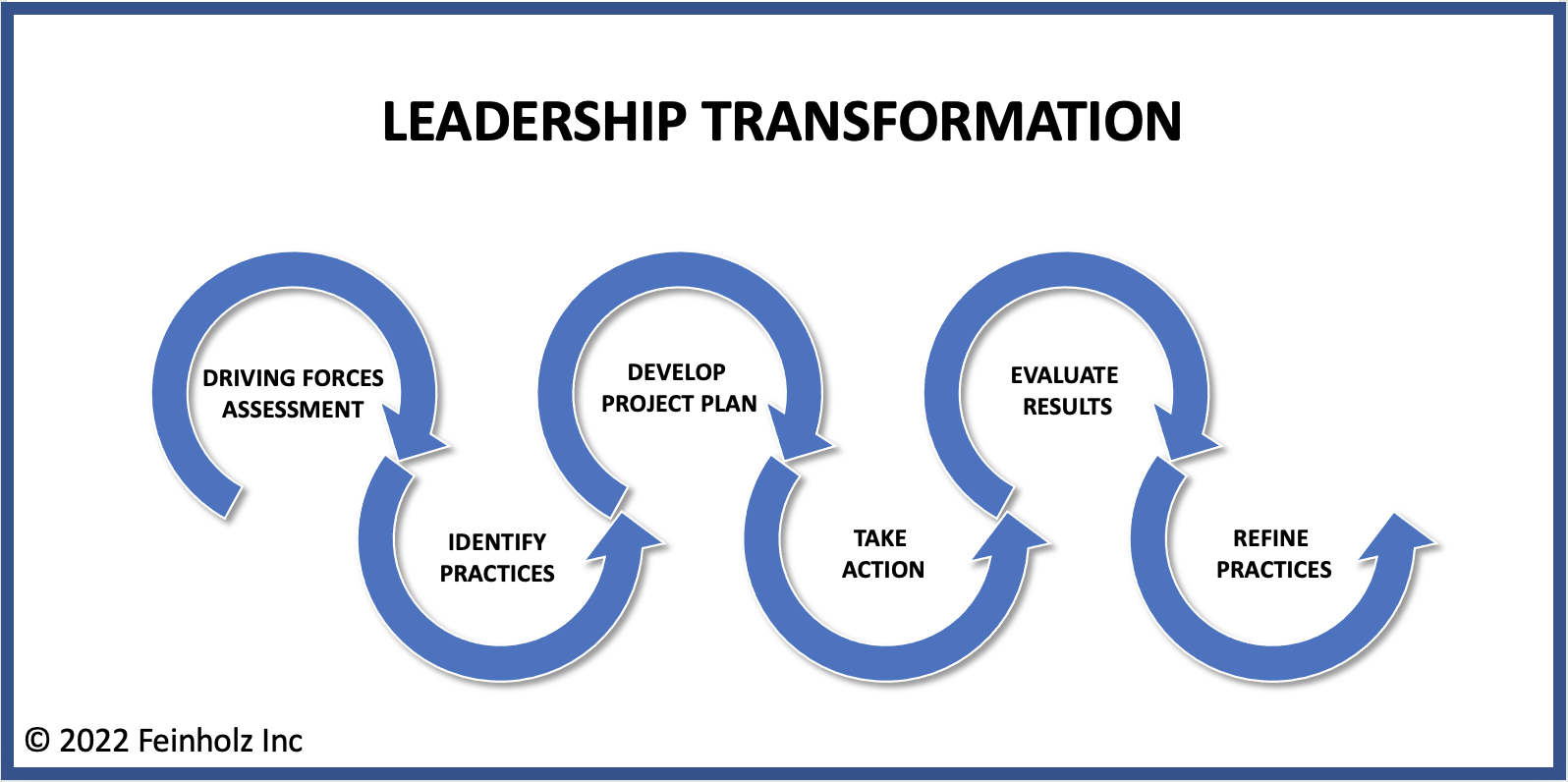
Step 1: Assess existing driving forces. It is essential to explore the organization’s context as our first step. That means gaining clarity about the forces that have created the situation and what impact those forces have on business operations moving forward. We include the future, to understand how our business strategy, structure, tools, and culture must be different for success.
Step 2: Assess and analyze the current situation inside the organization. Next, we will reflect and document your organization’s current state. What is the starting point for our transformation? What is working, what is not working. Where are the current breakdowns and the breakdowns that can be anticipated?
Step 3: Identify new practices and structures. Transformation requires new behaviors, tools, practices, ways of working, and more. Together we will discuss best practices, innovations, and fundamental shifts so that you and your organization can prepare for a future unlike the past.
Step 4: Develop a change plan. Virtual transformation requires many layers of change to the organization. Planning must address behavioral change for employees and leaders as well as the adoption of new ways of working. Understanding the impact of these changes on constituents, communicating what needs to be different, and building effective learning programs is critical.
Step 5: Take action. None of it happens quickly, and nothing happens without change first occurring at an individual level. You will create a plan for transformation for yourself, your team, and your business. We will create accountability for you as you go through the course and ensure you are bringing in others in your organization for a collaborative, cross-functional effort.
Step 6: Evaluate results. The experience of performing the project step will be tracked and evaluated individually and discussed among the team to share and gain insights from each other’s experience in performing each step. On a macro level every participant will be learning the same information. Individual execution will vary as it is inherently matching the personality styles of each person in the long-run.
Step 7: Refining the practices will enable the team and each participant to master each practice and learn to use precisely the least amount of time and effort and attention required to use each practice and achieve the desired result – the Quantum version of each practice.
These steps will be used continuously during the Quantum Leadership Program. Some workshops will focus on one or more steps as relevant at that time and stage of the program.
We customize and tailor our programs when required to meet corporate clients’ needs and goals. That customization may take place throughout the program as participants and their HR Business Partners match the learning and application needs to the particulars of their organization.

Chapter 2: Learning Curve Master
Each of us encounters opportunities to learn throughout our day. Whether we avail ourselves of that opportunity is often a lightening quick barely conscious decision. To succeed in the Quantum Leadership Program, participants will need to choose to ‘stay awake and aware’ and continuously press through unfamiliar and uncomfortable new information and practices.
Understanding the Learning Curve will empower participants to press through those moments of discomfort and take on the new thinking and behaviors with increasing ease.
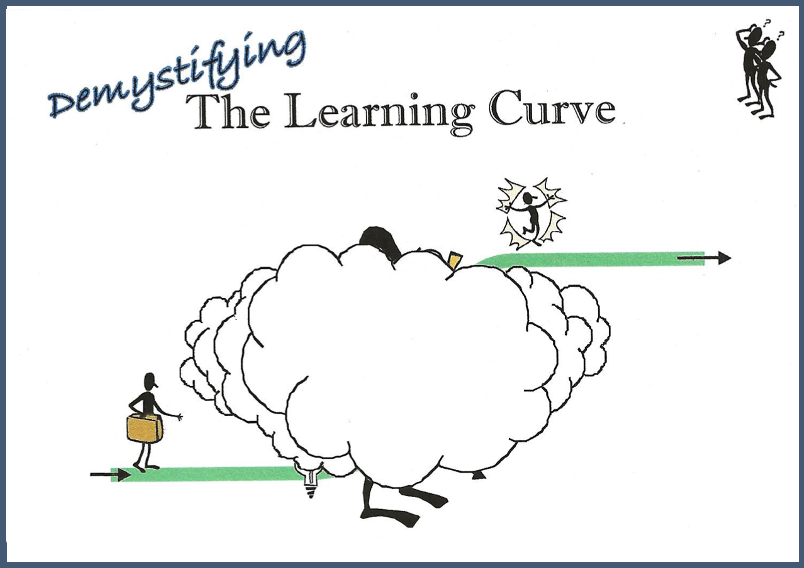
As explained in the video, the 7 Steps of the Learning Curve are:
1 – Having a vision
2 – Encountering new possibilities
3 – Seeing the choices and deciding on one
4 – Turning attention and awareness
5 – Getting support
6 – Breaking through
7 – Celebrating success

Chapter 3: Action-Learning Methodology
The Quantum Leadership Program is based on an Action-Learning Methodology. The idea behind the Action Learning Model is that a learner can gather knowledge by working with other peers in a group setting to find a solution to a problem or scenario. In doing so, learners will be able to not only develop their own skill sets and knowledge base, but also those of the group or of the organization.
Benefits of Action Learning include improved problem solving and leadership capacity. greater adaptability and resilience. individual and organizational learning from implementing new strategies or culture change, and increased effectiveness and profitability of your business.
One of the challenges of Action Learning is defining a problem that is the anchor for all the learning activity. Selecting a problem statement is one of the most important aspects in action learning and it needs to be done very carefully.
The problem which the QLP address is “How can leadership create organizational stability in an era of external demographic and socio-economic forces creating a tug-of-war on employee recruitment, engagement and retention?”

Although stakeholders in the organization may have a list of actions and metrics already in consideration, the QLP’s value is that it goes beyond blind adoption of other people’s work. In the first stage, participants research and develop their own thinking. In the second stage they meet with stakeholders such as their HR Business Partner to discuss the issues in depth and learn where the organization on those matters is at the current time. Together they come to an understanding that the QLP participants will use and refine during the span of the program.
Each Workshop contains Modules that evolve in a sequence that starts with Concepts or Key Factors for Success, then proceeds to Processes & Practices, incorporating Tools for throughout, and then some form of Implementation/Application. This enables immediate monthly implementation and experience and effect evaluation and refinement.
Team participants will engage in both individual and joint learning and individual application to their immediate circumstances. This prevents the “80% down the drain” syndrome that occurs when participants go away for their learning.
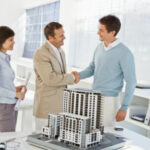
Chapter 4: Compelling Conditions
The Quantum Leadership Program has a very powerful Value Proposition: Companies that follow-through with this program will receive a 20-25% competitive advantage attracting the top employment candidates in their marketplace and lengthen the tenure of their valued employees by years. Further, this will show up in a number of dimensions, including productivity, innovation, cost effectiveness, employee retention, strategic leverage, rapid response, faster decision-making, agility and, most importantly, profitability.
Before launching any program of this importance, there must be a good answer to the central question “Why?” Everyone is challenged in their business with too many tasks and not enough time. People want to know the reason “Why?” they should make the The Quantum Leadership Program a major priority, devoting the time, focus, and commitment necessary to succeed.
Powerful forces in global business are driving the need for far greater leadership by all varieties of organization management, as well as between all types of business functions and technical domains. With the exception of the early years of computer-based technological innovations, in no other period in the history have organizations encountered so much change so fast. Leadership plays a critical role in navigating this change to stabilize companies.

Senior business executives are recognizing the value of leadership development to address the personnel and business stability impacts of these trends. Today, organizations see the value of investing time and resources in the leadership practices that will increase retention, morale and productivity.
For QLP participants to gain the most from the program, it is critical that they individually and collectively understand the forces that are straining organizational stability.
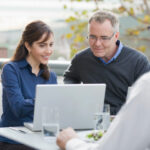
Chapter 5: Organizational Objectives
Successful delivery of the Quantum Leadership Program will depend upon how well Clients realistically define what success looks like. Clients must know what they want, otherwise “any bright shiny new trend” will pull participants off-course.
One of the key success factors of the QLP is for participants from throughout the organization to synchronize their perspective and leadership objectives with those of their HR Business Partners.
If outcomes and expectations are specific at the outset, the chances of success are dramatically increased. This will require engaging HR Business Partners in the organization who will be the beneficiaries of the results and will be sending participants. We, as Learning Provider, will mutually formulate preliminary Success Criteria, Key Factors for Success, and Performance Metrics early on. These will be refined and solidified in Phase Two: Design & Development.
This will involve formulation of Success Criteria, Key Factors for Success, and Performance Metrics. These need not be set in concrete at this point but must be clarified to the best of the Client’s ability to enable the Learning Provider to Deliver a program with results in alignment with what the Client expects. Knowing what you “want” for outcomes essentially defines what “winning” means in the organization between Client and Learning Provider. Unclear or unstated expectations at this stage are like “time bombs” which will explode later, usually in the middle of a Program, often with unsatisfactory results. Any unrealistic expectations should be addressed at this point.
Excellence in virtually everything is dependent upon quality metrics. Without identifiable measures, management is like sifting fog, and there will be no unanimity of vision, value, methodologies, and results.
These do not have to be set in concrete at this point but must be clarified to the best of the Client’s ability to enable the Learning Provider to deliver in alignment with what the Client expects. Knowing what you “want” for outcomes essentially defines what “winning” means in the organization between Client and Learning Provider. Unclear or unstated expectations at this stage are like “time bombs” which will explode later, usually in the middle of a Program, often with unsatisfactory results. Any unrealistic expectations should be addressed at this point.
Alongside Metrics must be Diagnostics which can be used to ensure the organization is functioning well and any emerging difficulties can be addressed before they create a crisis. The Program addresses these core Metrics Diagnostics of Health, which can be adapted to any organization’s unique culture and industry. Any annual review should include both these elements.
In many companies, before rolling out the Quantum Leadership Program, it is advisable to do a pre-program diagnostic base-line evaluation of how the organization is functioning. Then the feedback of the analysis can be used to engage different levels of the organization in analyzing problems, opportunities, and priorities for capability building. This provides two advantages: 1) it engages employees early on, and 2) creates a base-line standard against which a Program Review can be benchmarked.
As a participant in the QLP you may have little to no familiarity with the organization’s discussions, considerations and objectives. In order to develop realistic personal goals and project participation three steps will take place.

Step 1 – Participant Familiarization with the Issues & Terms – Metrics including, KPIs, KPAs, Leading and Lagging Indicators
Step 2 – HR Business Partner Education of the Participants – Detailed in the upcoming 90-days Module “Benchmarking & Setting KPIs”
Step 3 – Collaborative Goal setting covering Organizational results and QLP Participant skills building results
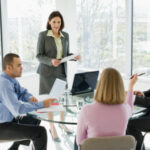
Chapter 6: Setting Conditions
There are two arenas of change and transformation that leaders can influence: Personal and Organizational. While a key outcome of excellent leaders is the shaping of the organizations culture and performance, the root activity is leadership that elevates the personal/professional maturing and resulting of the employees of the company.
Participants in the QLP are a rare breed. Think of it as being a combination risk taker and visionary. This makes them a valuable asset to any organization.
Transformational change is rare because the vast majority of people (99% of all adults and 92% of executives) possess an internal operating system that is wired for self-protection.
When someone is wired for self-protection, invitations to change or let go of what we know do not feel like an opportunity to advance or elevate. Instead, it feels dangerous. And, when something feels dangerous, we are going to double down on our self-protection and hold tighter to what we know. Since organizations are collective of people, organizations are equally resistance to change.
There are two roles leaders play for creating transformational change, both of which involve creating the right environment or conditions for change to occur:
Role 1 – Create an environment where people don’t feel like they need to be self-protective (i.e., create an environment of psychological safety).
Role 2 – Upgrading employees’ internal operating system so that they are not wired for self-protective, but wired for organization-advancing (The process of doing this is called vertical development)
Ryan Gottfredsdon describes three adult development stages:
Mind 1.0 – We are “good soldiers” programmed to fulfill the needs of safety, comfort, and belonging.
Mind 2.0 – We are “progress makers” programmed to fulfill the needs of standing out, advancing, and getting ahead (we are willing to be unsafe, uncomfortable, and not belong in order to stand out, advance, and get ahead).
Mind 3.0 – We are “value creators” programmed to fulfill the needs of contributing, elevating, and lifting others (we are willing to be unsafe and not stand out in order to contribute, elevate, and lift others).
As he points out, it’s important to understand the percentage breakdown of adults and executives and where they usually focus.

The most powerful leaders are those who shift to an external focus – how to influence the organization and the individuals in it in order to create a sustainable foundation for the future.
When leaders are pushing the envelope of creativity and innovation, of change and transformation, problems and failures are going to happen. And leaders need to be okay with that.
The skills required in 2030 will be Originality, Learning Strategies, Active Learning, Fluency of Ideas, Judgement & Decision Making.
Helen Bevans has stated in her consulting and corporate training programs “We don’t need people who ‘buy in.’ We need investors!”
These considerations are critical in order to establish effective Collaborative Evaluations, draw Gap Analysis conclusions and Organize Action among the QLP participants.
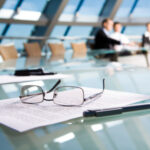
Chapter 7: Collaborative Evaluation
Stakeholders are routinely invited to and involved in the evaluation stage as well as the project planning and execution.
The program’s leader participants are one group of stakeholders in the QLP. The personnel that these leaders are influencing make up a second group. The HR Business Partners and senior management team members make up a third group and are responsible for monitoring trends in overall employee morale, productivity, and retention.
These three groups, or cohorts, are “investors” in the development and use of quantum leadership at the individual, group, and organizational levels.
Participants in the program will create a joint evaluation method for each of these three cohorts so that the outcomes may be tracked in real time.
The first step in collaborative evaluation is for the cohort’s members to discuss the metrics they will use to gauge the performance and outcomes of the QLP participants.
The tools and procedures discovered and put into use throughout the QLP will include these 6–9 resulting metrics.
They will then be monitored and reported through an assessment process in which peer input from the QLP workshops and scheduled meetings with other stakeholders is acquired.
A crucial question is “Is our initiative working?,” especially in this time of increased responsibility. When individual leaders and department leads want to know if their initiatives are producing the desired results and why this is the case, this collaborative project evaluation technique is a very helpful way to provide an answer. In the collaborative project evaluation methodology, the HR Business Partner and the client’s QLP team collaborate to choose the assessment’s research topics. They keep cooperating to make sure that the context is understood that various stakeholder viewpoints are taken into account, and that the content and tone of the data gathering instruments are acceptable. This method generates data that can be used to proactively guide program execution, give formative data to help project improvement, and provide summative data on the project’s success.
Using an iterative evaluation methodology called collaborative evaluation, project personnel can continuously enhance their work.
Particular advantages of the model include

• A flexible and adaptable evaluation design that is flexible and customizable to the aims of the evaluation and to changes in project implementation throughout time.
• Increased results dependability
* Greater agreement among stakeholders with the evaluation’s results and data collection procedure
• Ability of the project team to continue tracking their results in relation to the program’s objectives after the evaluation
• Creation of an investigative culture among stakeholders and the project team.
A method called collaborative assessment actively involves project stakeholders in the evaluation procedure. Stakeholder participation in assessments improves their understanding and frequently boosts the evaluation’s adaptability over the course of the 24-month program. Stronger assessment designs, better data collecting and analysis, and outcomes that stakeholders can understand, and support are frequently the outcomes.
Those in charge of planning and organizing long-term processes can benefit from evaluation that takes into account a variety of criteria and is conducted at various times in time. Participant surveys can be a useful tool for evaluating the performance of collaborative processes in terms of both the process and the final product.
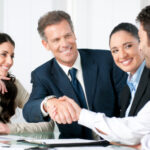
Chapter 8: Gap Analysis
The QLP Participant Team should launch the planning process by understanding the “gaps” between their current Leadership capabilities and what is needed to win in the future.
At a minimum, two gaps should be addressed:
A. Strategic Gap
B. Personnel Capability Gap
The Strategic Gap addresses the challenges posed by demographic and socio-economic shifts and what the organization’s current state is, versus the improved state that senior management envisions. Often companies find there is a massive chasm between the characteristics needed for organizational stability and their capability to deliver what’s required. Key questions need to be asked, including:
What are the realities … the obstacles, the opportunities and the necessary shifts required?
What’s needed for employees to experience engagement ?
What can leaders do to be more impactful in solving the problems being faced?
What can be done to deliver higher levels of leadership?
What new levels of thought and action are needed?
What is the new paradigm for the future?
The Quantum Leadership Program is designed to help organizations stabilize and lead the way into the future. For this reason, a company may want to engage in a strategic review as a point to begin. The simplest approach is to do a SWOT ANALYSIS, examining Strengths, Weaknesses, Opportunities, and Threats associated with employee engagement and strategic planning. Bringing in the stakeholders at this point will help position the Program in alignment with corporate strategy. Should there be any difficulties or questions in this area, our team will be happy to provide expertise.

The Personnel Capability Gap is equally essential to assess. Typically, this will be linked closely with the Human Resources group, who will not only have a vested interest in the results of Leadership Development efforts but may also have significant data that has already been collected. Some of the essential elements to understand are how well people and teams cooperate, communicate, perform, trust, solve problems, work cross-functionally, and interact with customers and suppliers. If it has not yet been conducted, the QL Participant Team, in consultation with the Senior Executive Sponsor and Human Resources, should determine if they want to engage in a Survey Guided Assessment which would determine both current conditions, needs, and problems in the organization, as well as gaps and aspirations for improvement. Such a survey will establish a “base-line” against which the Program results can be evaluated.
Should you have any issues that are vague or uncertain, our team has had long-term experience working with HR departments to conduct these assessments. Once the Strategic and Personnel Capability Gaps are assessed, the QLP participants will have material supporting a realistic idea of what the program will need to do to be successful.
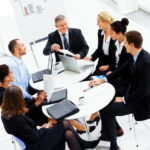
Chapter 9: Quantum Leadership
This manual deepens participant self-perception as leader / Influencer of achieving the relevant identified Organizational Objectives through the process of 6 practice areas detailed in modules in the QL Program.
Workshop participants probe into the role of leader as deliberate shaper of consciousness and culture through speech and action. In addition to an appreciation for what they will be learning as they up-level as leaders’ participants will gain new perceptual tools for evaluating those whom they lead.
Through a comparison of historical leadership models with narrow single topic focus and QL’s refining to ‘least amount of effort and energy to produce the desired interaction or result’ they will gain an appreciation for the roadmap ahead.
Although many executive have assumed that the ‘soft’ side of management and leader is is complex (human desires, interests, values, organizational activities) Quantum Leadership has a proven track record of refining it down to lightest, focused speech and action taken in its organizational Context (challenges, objectives,
This new paradigm will be applied throughout the 24-month span of the QLP, applied in the Roadmap and 90-Day in the next manuals.
An example of this process can be understood as participants are guided through an exercise in ‘simplification’ referred to as The Boids

Quantum Leadership focuses on six practices used to influence the employee performance and stability of organizations. In an age of increasingly complex challenges faced by company leaders at all levels, the magic of QL is that it not only includes Action Learning techniques but adds a refinement step in which the tools and practices are reduced to the simplest set of activities that produce the desired results, just as with The Boids.
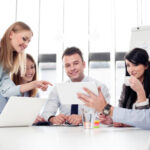
Chapter 10: Assessments
The QLP uses a series of Frameworks and Assessments throughout the program. These tools become a key source of information and understand of the organization, it’s circumstances, and of the leader participants experience and skillfulness.
The first phase is to conduct organizational assessments as a group, in conjunction with the HR Business Partner, and to begin the personal assessments.
Part 1 – The Organizational Driving Forces Assessment forms the basis of the first 90-Day Module and expands to outline the next module’s objectives.
Part 2 – Personal Driving Forces Assessment is the companion work woven throughout the 24-months of the QLP.

Each assessment is chosen specifically because it triggers new understanding and learning in a 5-step process that opens opportunities for growth and personal transformation.
Additionally, each assessment can be taken again at later dates when participants have set a goal of increasing their skill sets and tool sets and creating continuous improvements as a leader and among those they lead.
The core value of the experience and personality assessments selected is that each one provides program participants with standardized, useful insights that result in progress markers over time. By using the assessment data to identify one’s starting points in leadership development each participant can set their personal goals towards improving as an influencer of teams and the organization.
This workshop has been filled with new concepts, new ideas, new questions and new discussions. It is a warm-up for the assessments, discussions, and action plans in upcoming modules. In this manual we focused on the concept of Personal Driving Forces of leadership with the opportunity to uncover the default ways you currently operate, sometimes unconsciously and at other times consciously.
We’re just setting out on the Learning Curve Journey of the QLP! Now we’ll turn our attention to the Organizational Driving Forces that each participant will be exploring. That exploration will be conducted as a team, between the workshops, in conjunction with your HR Business Partners.
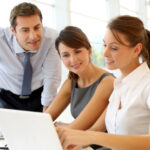
Chapter 11: Creating Roadmaps
The core objective of the course manual is to enable the participants to implement a process in the project setting as well as within their own department, that consists of specific steps with a view towards undertaking each QLP step, guided by the workshops. In other words, we need to ascertain the current state, how successful improvement attempts have been and how things could be improved going forward. This will directly impact upon the way in which Quantum Leadership is used and its results are interpreted.
QL is an approach that actively engages program stakeholders in the evaluation process. When employees collaborate with leaders, their own understanding increases and the utility of the evaluation is often enhanced. So, participants will need to select either a large project team that has recently been assembled within your department, or a divisional group that have been identified as challenged within their business unit, identify who the program stakeholders would be in each case and then consider how QL will be used. The elements to be improved are both the improvement of morale and retention and the increase in leadership skillfulness of the QLP participant. These steps create the set up to determine whether it was successful and how it could be improved.
The process for creating roadmaps is identical, whether applied to individual development or organizational changes.

Assess the current state: Where does the organization stand today in terms of leadership activities, infrastructure, processes and services? Are existing leadership strategies impacting strategic goals? If not, they must be modified to serve their purpose and support the organization’s objectives being planned.
Establish the target state: What so you want to achieve? How will outcomes from the transformation be measured? You don’t have to go into the details, but assign OKRs, KPIs and business metrics accordingly. Next, decide how human and financial resources will be prioritized. Finally, reach a consensus on how progress will be tracked as the transformation takes shape.
Determine the steps or initiatives of each team: A transformation affects everyone in the organization. It requires inputs and feedback from decision-makers at various levels of the organization and at the department levels. The participation and expectation from stakeholders should be clear from the beginning.
Identify issues along four tracks: people, process, organization structures and technology. The people track is about ensuring you have the right people in the right seats with the right skills both during the transformation efforts, as well as post-transformation. Ensuring you have the right people leading and supporting the teams, as well as the right team members executing on transformation initiatives are critical to the successful delivery of the vision. A roadmap item may include designing a new organizational structure and roles needed in post-transformation
Agree upon which elements the leader participants can influence, in what span of time.
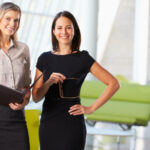
Chapter 12: Action Planning
Looking ninety days out, you have a good idea of what you can actually get done in that time frame, so your capacity estimations are about right and yet you can make some very substantial progress towards a big goal. It leads to moving faster without compromising strategy – being more agile. Similar to SMART goals, a 90-day plan should define the specific details that will allow the new employee to achieve success. A well-written plan should spell out how this person’s new role and day-to-day duties level up to company metrics and long-term plans. It should help them define priorities and check points for follow-ups on their progress.
This manual covers how to create a fixed plan implemented in 90 days cycles. Each 90-day plan will include assessment by the participants of the current state of their skill, practice or process, followed by creating a desired future state, a roadmap for putting the new processes into practice, and actionable steps to be undertaken between the workshops. Accountability partners will be assigned. Check-ins and adjustments to the practices and processes will be designed and implemented during the focused span of each topic module.
The practice of a 90-day plan has even more to offer than orienting someone to personal goals. It isn’t just a task list, it’s the foundation for groups working together, learning together, and understanding the results being evaluated.

The QLP doesn’t view someone’s 90-day plans as a trial period or proving ground. To the contrary, we encourage an emphasis on knowledge gathering and sharing, and relationship building. Initial tasks, goals, and deliverables should focus on helping someone feel more comfortable and confident about the road ahead – not less so.
Which is to say, we don’t overwhelm program participants.
Regular check-ins, honest feedback (about systems, company habits, points of uncertainty), and the support of learning (and failing), set the groundwork for open communication. This is the bedrock of trust, which should underpin all team and company interactions.
The QLP program structures each topic area in 90-day spans in order to provide time to encounter unfamiliar ideas and action items, plan the actions that will be taken, take action, reflect on the experience and results of that project work between the workshops, and come together to discuss and evaluate what has been learned and how to adapt and improve the processes being used.
The 1st 90-Day plan will have 2 components – Personal Driving Forces Assessments, detailed in the next manual, and Organizational Situation Analyses. These components will set the agenda for participants’ project assignment during that time.
Curriculum
Quantum Leadership – Workshop 1– 90-Day Planning
- Leadership Transformation
- Learning Curve Master
- Action-Learning Methodology
- Compelling Conditions
- Organizational Objectives
- Setting Conditions
- Collaborative Evaluation
- Gap Analysis
- Quantum Leadership
- Assessments
- Creating Roadmaps
- Action Planning
Distance Learning
Introduction
Welcome to Appleton Greene and thank you for enrolling on the Quantum Leadership Program corporate training program. You will be learning through our unique facilitation via distance-learning method, combined with in person workshops where your employer finds it feasible. This will enable you to practically implement everything that you learn academically. The methods and materials used in your program have been designed and developed to ensure that you derive the maximum benefits and enjoyment possible. We hope that you find the program challenging and fun to do. However, if you have never been a distance-learner before, you may be experiencing some trepidation at the task before you. So, we will get you started by giving you some basic information and guidance on how you can make the best use of the modules, how you should manage the materials and what you should be doing as you work through them. This guide is designed to point you in the right direction and help you to become an effective distance-learner. Take the time to study this guide and your guide to tutorial support for students, while making notes, before you start to study in earnest.p>
Study environment
You will need to locate a quiet and private place to study, preferably a room where you can easily be isolated from external disturbances or distractions. Make sure the room is well-lit and incorporates a relaxed, pleasant feel. If you can spoil yourself within your study environment, you will have much more of a chance to ensure that you are always in the right frame of mind when you do devote time to study. For example, a nice fire, the ability to play soft soothing background music, soft but effective lighting, perhaps a nice view if possible and a good size desk with a comfortable chair. Make sure that your family know when you are studying and understand your study rules. Your study environment is very important. The ideal situation, if possible, is to have a separate study, which can be devoted to you. If this is not possible then you will need to pay a lot more attention to developing and managing your study schedule, because it will affect other people as well as yourself. The better your study environment, the more productive you will be.
Study tools & rules
Try and make sure that your study tools are sufficient and in good working order. You will need to have access to a computer, scanner and printer, with access to the internet. You will need a very comfortable chair, which supports your lower back, and you will need a good filing system. It can be very frustrating if you are spending valuable study time trying to fix study tools that are unreliable, or unsuitable for the task. Make sure that your study tools are up to date. You will also need to consider some study rules. Some of these rules will apply to you and will be intended to help you to be more disciplined about when and how you study. This distance-learning guide will help you and after you have read it you can put some thought into what your study rules should be. You will also need to negotiate some study rules for your family, friends or anyone who lives with you. They too will need to be disciplined in order to ensure that they can support you while you study. It is important to ensure that your family and friends are an integral part of your study team. Having their support and encouragement can prove to be a crucial contribution to your successful completion of the program. Involve them in as much as you can.
Successful distance-learning
Distance-learners are freed from the necessity of attending regular classes or workshops, since they can study in their own way, at their own pace and for their own purposes. But unlike traditional internal training courses, it is the student’s responsibility, with a distance-learning program, to ensure that they manage their own study contribution. This requires strong self-discipline and self-motivation skills and there must be a clear will to succeed. Those students who are used to managing themselves, are good at managing others and who enjoy working in isolation, are more likely to be good distance-learners. It is also important to be aware of the main reasons why you are studying and of the main objectives that you are hoping to achieve as a result. You will need to remind yourself of these objectives at times when you need to motivate yourself. Never lose sight of your long-term goals and your short-term objectives. There is nobody available here to pamper you, or to look after you, or to spoon-feed you with information, so you will need to find ways to encourage and appreciate yourself while you are studying. Make sure that you chart your study progress, so that you can be sure of your achievements and re-evaluate your goals and objectives regularly.
Self-assessment
Appleton Greene training programs are in all cases post-graduate programs. Consequently, you should already have obtained a business-related degree and be an experienced learner. You should therefore already be aware of your study strengths and weaknesses. For example, which time of the day are you at your most productive? Are you a lark or an owl? What study methods do you respond to the most? Are you a consistent learner? How do you discipline yourself? How do you ensure that you enjoy yourself while studying? It is important to understand yourself as a learner and so some self-assessment early on will be necessary if you are to apply yourself correctly. Perform a SWOT analysis on yourself as a student. List your internal strengths and weaknesses as a student and your external opportunities and threats. This will help you later on when you are creating a study plan. You can then incorporate features within your study plan that can ensure that you are playing to your strengths, while compensating for your weaknesses. You can also ensure that you make the most of your opportunities, while avoiding the potential threats to your success.
Accepting responsibility as a student
Training programs invariably require a significant investment, both in terms of what they cost and in the time that you need to contribute to study and the responsibility for successful completion of training programs rests entirely with the student. This is never more apparent than when a student is learning via distance-learning. Accepting responsibility as a student is an important step towards ensuring that you can successfully complete your training program. It is easy to instantly blame other people or factors when things go wrong. But the fact of the matter is that if a failure is your failure, then you have the power to do something about it, it is entirely in your own hands. If it is always someone else’s failure, then you are powerless to do anything about it. All students study in entirely different ways, this is because we are all individuals and what is right for one student, is not necessarily right for another. In order to succeed, you will have to accept personal responsibility for finding a way to plan, implement and manage a personal study plan that works for you. If you do not succeed, you only have yourself to blame.
Planning
By far the most critical contribution to stress, is the feeling of not being in control. In the absence of planning, we tend to be reactive and can stumble from pillar to post in the hope that things will turn out fine in the end. Invariably they don’t! In order to be in control, we need to have firm ideas about how and when we want to do things. We also need to consider as many possible eventualities as we can, so that we are prepared for them when they happen. Prescriptive Change is far easier to manage and control, than Emergent Change. The same is true with distance-learning. It is much easier and much more enjoyable, if you feel that you are in control and that things are going to plan. Even when things do go wrong, you are prepared for them and can act accordingly without any unnecessary stress. It is important therefore that you do take time to plan your studies properly.
Management
Once you have developed a clear study plan, it is of equal importance to ensure that you manage the implementation of it. Most of us usually enjoy planning, but it is usually during implementation when things go wrong. Targets are not met, and we do not understand why. Sometimes we do not even know if targets are being met. It is not enough for us to conclude that the study plan just failed. If it is failing, you will need to understand what you can do about it. Similarly, if your study plan is succeeding, it is still important to understand why, so that you can improve upon your success. You therefore need to have guidelines for self-assessment so that you can be consistent with performance improvement throughout the program. If you manage things correctly, then your performance should constantly improve throughout the program.
Study objectives & tasks
The first place to start is developing your program objectives. These should feature your reasons for undertaking the training program in order of priority. Keep them succinct and to the point in order to avoid confusion. Do not just write the first things that come into your head because they are likely to be too similar to each other. Make a list of possible departmental headings, such as: Customer Service; E-business; Finance; Globalization; Human Resources; Technology; Legal; Management; Marketing and Production. Then brainstorm for ideas by listing as many things that you want to achieve under each heading and later re-arrange these things in order of priority. Finally, select the top item from each department heading and choose these as your program objectives. Try and restrict yourself to five because it will enable you to focus clearly. It is likely that the other things that you listed will be achieved if each of the top objectives are achieved. If this does not prove to be the case, then simply work through the process again.
Study forecast
As a guide, the Appleton Greene Quantum Leadership corporate training program should take 24months to complete, depending upon your availability and current commitments. The reason why there is such a defined time estimates is because students are participating with others in monthly workshops and the content progresses forward even if a participant cannot make a specific workshop in person. Consequently, all of the project studies are real, which means that important decisions and compromises need to be made. You will want to get things right and will need to be patient with your expectations in order to ensure that they are. We would always recommend that you are prudent with your own task and time forecasts, but you still need to develop them and have a clear indication of what are realistic expectations in your case.
If you know you will be unable to attend a specific workshop due to time conflicts, arrange with your Accountability Partner to go over the material covered during the workshop, walk yourself through the exercises covered, and get clear direction as to the Project Study steps to be undertaken.
With reference to your time planning: consider the time that you can realistically dedicate towards study with the program every week; calculate how long it should take you to complete the program, using the guidelines featured here; then break the program down into logical modules and allocate a suitable proportion of time to each of them.
These will be your milestones. You can create a time plan by using a spreadsheet on your computer, or a personal organizer such as MS Outlook, you could also use a financial forecasting software; break your time forecasts down into manageable chunks of time, the more specific you can be, the more productive and accurate your time management will be. Ffinally, use formulas where possible to do your time calculations for you, because this will help later on when your forecasts need to change in line with actual performance. With reference to your task planning: refer to your list of tasks that need to be undertaken in order to achieve your program objectives; with reference to your time plan, calculate when each task should be implemented; remember that you are not estimating when your objectives will be achieved, but when you will need to focus upon implementing the corresponding tasks; you also need to ensure that each task is implemented in conjunction with the associated training modules which are relevant; then break each single task down into a list of specific to do’s, say approximately ten to do’s for each task and enter these into your study plan; once again you could use MS Outlook to incorporate both your time and task planning and this could constitute your study plan; you could also use a project management software like MS Project. You should now have a clear and realistic forecast detailing when you can expect to be able to do something about undertaking the tasks to achieve your program objectives.
Performance management
It is one thing to develop your study forecast, it is quite another to monitor your progress. Ultimately it is less important whether you achieve your original study forecast and more important that you update it so that it constantly remains realistic in line with your performance. As you begin to work through the program, you will begin to have more of an idea about your own personal performance and productivity levels as a distance-learner. Once you have completed your first study module, you should re-evaluate your study forecast for both time and tasks, so that they reflect your actual performance level achieved. In order to achieve this, you must first time yourself while training by using an alarm clock. Set the alarm for hourly intervals and make a note of how far you have come within that time. You can then make a note of your actual performance on your study plan and then compare your performance against your forecast. Then consider the reasons that have contributed towards your performance level, whether they are positive or negative and make a considered adjustment to your future forecasts as a result. Given time, you should start achieving your forecasts regularly.
With reference to time management: time yourself while you are studying and make a note of the actual time taken in your study plan; consider your successes with time-efficiency and the reasons for the success in each case and take this into consideration when reviewing future time planning; consider your failures with time-efficiency and the reasons for the failures in each case and take this into consideration when reviewing future time planning; re-evaluate your study forecast in relation to time planning for the remainder of your training program to ensure that you continue to be realistic about your time expectations. You need to be consistent with your time management, otherwise you will never complete your studies. This will either be because you are not contributing enough time to your studies, or you will become less efficient with the time that you do allocate to your studies. Remember, if you are not in control of your studies, they can just become yet another cause of stress for you.
With reference to your task management: time yourself while you are studying and make a note of the actual tasks that you have undertaken in your study plan; consider your successes with task-efficiency and the reasons for the success in each case; take this into consideration when reviewing future task planning; consider your failures with task-efficiency and the reasons for the failures in each case and take this into consideration when reviewing future task planning; re-evaluate your study forecast in relation to task planning for the remainder of your training program to ensure that you continue to be realistic about your task expectations. You need to be consistent with your task management, otherwise you will never know whether you are achieving your program objectives or not.
Keeping in touch
You will have access to qualified and experienced professors and tutors who are responsible for providing tutorial support for your particular training program. So don’t be shy about letting them know how you are getting on. We keep electronic records of all tutorial support emails so that professors and tutors can review previous correspondence before considering an individual response. It also means that there is a record of all communications between you and your professors and tutors, and this helps to avoid any unnecessary duplication, misunderstanding, or misinterpretation. If you have a problem relating to the program, share it with them via email. It is likely that they have come across the same problem before and are usually able to make helpful suggestions and steer you in the right direction. To learn more about when and how to use tutorial support, please refer to the Tutorial Support section of this student information guide. This will help you to ensure that you are making the most of tutorial support that is available to you and will ultimately contribute towards your success and enjoyment with your training program.
Work colleagues and family
You should certainly discuss your program study progress with your colleagues, friends and your family. Appleton Greene training programs are very practical. They require you to seek information from other people, to plan, develop and implement processes with other people and to achieve feedback from other people in relation to viability and productivity. You will therefore have plenty of opportunities to test your ideas and enlist the views of others. People tend to be sympathetic towards distance-learners, so don’t bottle it all up in yourself. Get out there and share it! It is also likely that your family and colleagues are going to benefit from your labors with the program, so they are likely to be much more interested in being involved than you might think. Be bold about delegating work to those who might benefit themselves. This is a great way to achieve understanding and commitment from people who you may later rely upon for process implementation. Share your experiences with your friends and family.
Making it relevant
The key to successful learning is to make it relevant to your own individual circumstances. At all times you should be trying to make bridges between the content of the program and your own situation. Whether you achieve this through quiet reflection or through interactive discussion with your colleagues, client partners or your family, remember that it is the most important and rewarding aspect of translating your studies into real self-improvement. You should be clear about how you want the program to benefit you. This involves setting clear study objectives in relation to the content of the course in terms of understanding, concepts, completing research or reviewing activities and relating the content of the modules to your own situation. Your objectives may understandably change as you work through the program, in which case you should enter the revised objectives on your study plan so that you have a permanent reminder of what you are trying to achieve, when and why.
Distance-learning check-list
Prepare your study environment, your study tools and rules.
Undertake detailed self-assessment in terms of your ability as a learner.
Create a format for your study plan.
Consider your study objectives and tasks.
Create a study forecast.
Assess your study performance.
Re-evaluate your study forecast.
Be consistent when managing your study plan.
Use your Appleton Greene Certified Learning Provider (CLP) for tutorial support.
Make sure you keep in touch with those around you.

Tutorial Support
Programs
Appleton Greene uses standard and bespoke corporate training programs as vessels to transfer business process improvement knowledge into the heart of our clients’ organizations. Each individual program focuses upon the implementation of a specific business process, which enables clients to easily quantify their return on investment. There are hundreds of established Appleton Greene corporate training products now available to clients within customer services, e-business, finance, globalization, human resources, information technology, legal, management, marketing and production. It does not matter whether a client’s employees are located within one office, or an unlimited number of international offices, we can still bring them together to learn and implement specific business processes collectively. Our approach to global localization enables us to provide clients with a truly international service with that all important personal touch. Appleton Greene corporate training programs can be provided virtually or locally, and they are all unique in that they individually focus upon a specific business function. They are implemented over a sustainable period and professional support is consistently provided by qualified learning providers and specialist consultants.
Support available
You will have a designated Certified Learning Provider (CLP) and an Accredited Consultant, and we encourage you to communicate with them as much as possible. In all cases tutorial support is provided online because we can then keep a record of all communications to ensure that tutorial support remains consistent. You would also be forwarding your work to the tutorial support unit for evaluation and assessment. You will receive individual feedback on all the work that you undertake on a one-to-one basis, together with specific recommendations for anything that may need to be changed in order to achieve a pass with merit or a pass with distinction and you then have as many opportunities as you may need to re-submit project studies until they meet with the required standard. Consequently, the only reason that you should really fail (CLP) is if you do not do the work. It makes no difference to us whether a student takes 12 months or 18 months to complete the program, what matters is that in all cases the same quality standard will have been achieved.
Support Process
Please forward all of your future emails to the designated (CLP) Tutorial Support Unit email address that has been provided and please do not duplicate or copy your emails to other AGC email accounts as this will just cause unnecessary administration. Please note that emails are always answered as quickly as possible, but you will need to allow a period of up to 20 business days for responses to general tutorial support emails during busy periods, because emails are answered strictly within the order in which they are received. You will also need to allow a period of up to 30 business days for the evaluation and assessment of project studies. This does not include weekends or public holidays. Please therefore kindly allow for this within your time planning. All communications are managed online via email because it enables tutorial service support managers to review other communications which have been received before responding and it ensures that there is a copy of all communications retained on file for future reference. All communications will be stored within your personal (CLP) study file here at Appleton Greene throughout your designated study period. If you need any assistance or clarification at any time, please do not hesitate to contact us by forwarding an email and remember that we are here to help. If you have any questions, please list and number your questions succinctly and you can then be sure of receiving specific answers to each and every query.
Time Management
It takes approximately 2 Years to complete the Quantum Leadership corporate training program, incorporating 24 x 6-hour monthly workshops. Each student will also need to contribute approximately 4 hours per week over 2 Years of their personal time. All students tend to be in full time employment while studying and the Quantum Leadership is purposely designed to accommodate this, so there is plenty of flexibility in terms of time management. Students can study from home or work at their own pace and are responsible for managing their own study plan. There are no formal examinations and students are evaluated and assessed based upon their project study submissions, together with the quality of their internal analysis and supporting documents. They can contribute more time towards study when they have the time to do so and can contribute less time when they are busy. What matters is that in all cases the same standard of quality will have been achieved with the standard and bespoke programs that have been developed.
Distance Learning Guide
The distance learning guide should be your first port of call when starting your training program. It will help you when you are planning how and when to study, how to create the right environment and how to establish the right frame of mind. If you can lay the foundations properly during the planning stage, then it will contribute to your enjoyment and productivity while training later. The guide helps to change your lifestyle in order to accommodate time for study and to cultivate good study habits. It helps you to chart your progress so that you can measure your performance and achieve your goals. It explains the tools that you will need for study and how to make them work. It also explains how to translate academic theory into practical reality. Spend some time now working through your distance learning guide and make sure that you have firm foundations in place so that you can make the most of your distance learning program. There is no requirement for you to attend training workshops or classes at Appleton Greene offices. As established by the HR Department, the entire program may be undertaken online, program course manuals or a combination of online and in-person workshops, along with project studies taking place between the monthly workshops. Support is provided via the Appleton Greene web site and via email. As arranged by the HR Department, so you are able to study at your own pace and in the comfort of your own home or office during the month and participate in the group workshops virtually as long as you have a computer and access to the internet.
How To Study
The how to study guide provides students with a clear understanding of the Appleton Greene facilitation via distance learning training methods and enables students to obtain a clear overview of the training program content. It enables students to understand the step-by-step training methods used by Appleton Greene and how course manuals are integrated with project studies. It explains the research and development that is required and the need to provide evidence and references to support your statements. It also enables students to understand precisely what will be required of them to achieve a pass with merit and a pass with distinction for individual project studies and provides useful guidance on how to be innovative and creative when developing your Unique Program Proposition (UPP).
Tutorial Support
Tutorial support for the Appleton Greene Quantum Leadership corporate training program is provided online either through the Appleton Greene Client Support Portal (CSP), or via email. All tutorial support requests are facilitated by a designated Program Administration Manager (PAM). They are responsible for deciding which professor or tutor is the most appropriate option relating to the support required and then the tutorial support request is forwarded onto them. Once the professor or tutor has completed the tutorial support request and answered any questions that have been asked, this communication is then returned to the student via email by the designated Program Administration Manager (PAM). This enables all tutorial support, between students, professors, and tutors, to be facilitated by the designated Program Administration Manager (PAM) efficiently and securely through the email account. You will therefore need to allow a period of up to 20 business days for responses to general support queries and up to 30 business days for the evaluation and assessment of project studies, because all tutorial support requests are answered strictly within the order in which they are received. This does not include weekends or public holidays. Consequently, you need to put some thought into the management of your tutorial support procedure to ensure that your study plan is feasible and to obtain the maximum possible benefit from tutorial support during your period of study. Please retain copies of your tutorial support emails for future reference. Please ensure that ALL of your tutorial support emails are set out using the format as suggested within your guide to tutorial support. Your tutorial support emails need to be referenced clearly to the specific part of the course manual or project study which you are working on at any given time. You also need to list and number any questions that you would like to ask, up to a maximum of five questions within each tutorial support email. Remember the more specific you can be with your questions the more specific your answers will be too, and this will help you to avoid any unnecessary misunderstanding, misinterpretation, or duplication. The guide to tutorial support is intended to help you to understand how and when to use support to ensure that you get the most out of your training program. Appleton Greene training programs are designed to enable you to do things for yourself. They provide you with a structure or a framework and we use tutorial support to facilitate students while they practically implement what they learn. In other words, we are enabling students to do things for themselves. The benefits of distance learning via facilitation are considerable and are much more sustainable in the long-term than traditional short-term knowledge sharing programs. Consequently, you should learn how and when to use tutorial support so that you can maximize the benefits from your learning experience with Appleton Greene. This guide describes the purpose of each training function and how to use them and how to use tutorial support in relation to each aspect of the training program. It also provides useful tips and guidance regarding best practice.
Tutorial Support Tips
Students are often unsure about how and when to use tutorial support with Appleton Greene. This Tip List will help you to understand more about how to achieve the most from using tutorial support. Refer to it regularly to ensure that you are continuing to use the service properly. Tutorial support is critical to the success of your training experience, but it is important to understand when and how to use it in order to maximize the benefit that you receive. It is no coincidence that those students who succeed are those that learn how to be positive, proactive and productive when using tutorial support.
Be positive and friendly with your tutorial support emails
Remember that if you forward an email to the tutorial support unit, you are dealing with real people. “Do unto others as you would expect others to do unto you”. If you are positive, complimentary, and generally friendly in your emails, you will generate a similar response in return. This will be more enjoyable, productive, and rewarding for you in the long-term.
Think about the impression that you want to create
Every time that you communicate, you create an impression, which can be either positive or negative, so put some thought into the impression that you want to create. Remember that copies of all tutorial support emails are stored electronically, and tutors will always refer to prior correspondence before responding to any current emails. Over a period of time, a general opinion will be arrived at in relation to your character, attitude and ability. Try to manage your own frustrations, mood swings and temperament professionally, without involving the tutorial support team. Demonstrating frustration or a lack of patience is a weakness and will be interpreted as such. The good thing about communicating in writing, is that you will have the time to consider your content carefully, you can review it and proof-read it before sending your email to Appleton Greene and this should help you to communicate more professionally, consistently and to avoid any unnecessary knee-jerk reactions to individual situations as and when they may arise. Please also remember that the CLP Tutorial Support Unit will not just be responsible for evaluating and assessing the quality of your work, they will also be responsible for providing recommendations to other learning providers and to client contacts within the Appleton Greene global client network, so do be in control of your own emotions and try to create a good impression.
Remember that quality is preferred to quantity
Please remember that when you send an email to the tutorial support team, you are not using Twitter or Text Messaging. Try not to forward an email every time that you have a thought. This will not prove to be productive either for you or for the tutorial support team. Take time to prepare your communications properly, as if you were writing a professional letter to a business colleague and make a list of queries that you are likely to have and then incorporate them within one email, say once every month, so that the tutorial support team can understand more about context, application, and your methodology for study. Get yourself into a consistent routine with your tutorial support requests and use the tutorial support template provided with ALL of your emails. The (CLP) Tutorial Support Unit will not spoon-feed you with information. They need to be able to evaluate and assess your tutorial support requests carefully and professionally.
Be specific about your questions in order to receive specific answers
Try not to write essays by thinking as you are writing tutorial support emails. The tutorial support unit can be unclear about what in fact you are asking, or what you are looking to achieve. Be specific about asking questions that you want answers to. Number your questions. You will then receive specific answers to each and every question. This is the main purpose of tutorial support via email.
Keep a record of your tutorial support emails
It is important that you keep a record of all tutorial support emails that are forwarded to you. You can then refer to them when necessary and it avoids any unnecessary duplication, misunderstanding, or misinterpretation.
Individual training workshops or telephone support
Please be advised that Appleton Greene does not provide separate or individual tutorial support meetings, workshops, or provide telephone support for individual students. Appleton Greene is an equal opportunity learning and service provider and we are therefore understandably bound to treat all students equally. We cannot therefore broker special financial or study arrangements with individual students regardless of the circumstances. All tutorial support is provided online, and this enables Appleton Greene to keep a record of all communications between students, professors and tutors on file for future reference, in accordance with our quality management procedure and your terms and conditions of enrolment. All tutorial support is provided online via email because it enables us to have time to consider support content carefully, it ensures that you receive a considered and detailed response to your queries. You can number questions that you would like to ask, which relate to things that you do not understand or where clarification may be required. You can then be sure of receiving specific answers to each individual query. You will also then have a record of these communications and of all tutorial support, which has been provided to you. This makes tutorial support administration more productive by avoiding any unnecessary duplication, misunderstanding, or misinterpretation.
Tutorial Support Email Format
You should use this tutorial support format if you need to request clarification or assistance while studying with your training program. Please note that ALL of your tutorial support request emails should use the same format. You should therefore set up a standard email template, which you can then use as and when you need to. Emails that are forwarded to Appleton Greene, which do not use the following format, may be rejected and returned to you by the (CLP) Program Administration Manager. A detailed response will then be forwarded to you via email usually within 20 business days of receipt for general support queries and 30 business days for the evaluation and assessment of project studies. This does not include weekends or public holidays. Your tutorial support request, together with the corresponding TSU reply, will then be saved and stored within your electronic TSU file at Appleton Greene for future reference.
Subject line of your email
Please insert: Appleton Greene (CLP) Tutorial Support Request: (Your Full Name) (Date), within the subject line of your email.
Main body of your email
Please insert:
1. Appleton Greene Certified Learning Provider (CLP) Tutorial Support Request
2. Your Full Name
3. Date of TS request
4. Preferred email address
5. Backup email address
6. Course manual page name or number (reference)
7. Project study page name or number (reference)
Subject of enquiry
Please insert a maximum of 50 words (please be succinct)
Briefly outline the subject matter of your inquiry, or what your questions relate to.
Question 1
Maximum of 50 words (please be succinct)
Maximum of 50 words (please be succinct)
Question 3
Maximum of 50 words (please be succinct)
Question 4
Maximum of 50 words (please be succinct)
Question 5
Maximum of 50 words (please be succinct)
Please note that a maximum of 5 questions is permitted with each individual tutorial support request email.
Procedure
* List the questions that you want to ask first, then re-arrange them in order of priority. Make sure that you reference them, where necessary, to the course manuals or project studies.
* Make sure that you are specific about your questions and number them. Try to plan the content within your emails to make sure that it is relevant.
* Make sure that your tutorial support emails are set out correctly, using the Tutorial Support Email Format provided here.
* Save a copy of your email and incorporate the date sent after the subject title. Keep your tutorial support emails within the same file and in date order for easy reference.
* Allow up to 20 business days for a response to general tutorial support emails and up to 30 business days for the evaluation and assessment of project studies, because detailed individual responses will be made in all cases and tutorial support emails are answered strictly within the order in which they are received.
* Emails can and do get lost. So if you have not received a reply within the appropriate time, forward another copy or a reminder to the tutorial support unit to be sure that it has been received but do not forward reminders unless the appropriate time has elapsed.
* When you receive a reply, save it immediately featuring the date of receipt after the subject heading for easy reference. In most cases the tutorial support unit replies to your questions individually, so you will have a record of the questions that you asked as well as the answers offered. With project studies however, separate emails are usually forwarded by the tutorial support unit, so do keep a record of your own original emails as well.
* Remember to be positive and friendly in your emails. You are dealing with real people who will respond to the same things that you respond to.
* Try not to repeat questions that have already been asked in previous emails. If this happens the tutorial support unit will probably just refer you to the appropriate answers that have already been provided within previous emails.
* If you lose your tutorial support email records you can write to Appleton Greene to receive a copy of your tutorial support file, but a separate administration charge may be levied for this service.

How To Study
Your Certified Learning Provider (CLP) and Accredited Consultant can help you to plan a task list for getting started so that you can be clear about your direction and your priorities in relation to your training program. It is also a good way to introduce yourself to the tutorial support team.
The following element refer to the work undertaking remotely, outside of active workshop monthly participation. Sections are equally relevant to effectively participating in the workshops themselves.
Planning your study environment
Your study conditions are of great importance and will have a direct effect on how much you enjoy your training program. Consider how much space you will have, whether it is comfortable and private and whether you are likely to be disturbed. The study tools and facilities at your disposal are also important to the success of your distance-learning experience. Your tutorial support unit can help with useful tips and guidance, regardless of your starting position. It is important to get this right before you start working on your training program.
Planning your program objectives
It is important that you have a clear list of study objectives, in order of priority, before you start working on your training program. Your tutorial support unit can offer assistance here to ensure that your study objectives have been afforded due consideration and priority.
Planning how and when to study
Distance-learners are freed from the necessity of attending regular classes, since they can study in their own way, at their own pace and for their own purposes. This approach is designed to let you study efficiently away from the traditional classroom environment. It is important however, that you plan how and when to study, so that you are making the most of your natural attributes, strengths and opportunities. Your tutorial support unit can offer assistance and useful tips to ensure that you are playing to your strengths.
Planning your study tasks
You should have a clear understanding of the study tasks that you should be undertaking, and the priority associated with each task. These tasks should also be integrated with your program objectives. The distance learning guide and the guide to tutorial support for students should help you here, but if you need any clarification or assistance, please contact your tutorial support unit.
Planning your time
You will need to allocate specific times during your calendar when you intend to study if you are to have a realistic chance of completing your program on time. You are responsible for planning and managing your own study time, so it is important that you are successful with this. Your tutorial support unit can help you with this if your time plan is not working.
Keeping in touch
Consistency is the key here. If you communicate too frequently in short bursts, or too infrequently with no pattern, then your management ability with your studies will be questioned, both by you and by your tutorial support unit. It is obvious when a student is in control and when one is not, and this will depend how able you are at sticking with your study plan. Inconsistency invariably leads to in-completion.
Charting your progress
Making it work
To succeed, all that you will need to do is apply yourself to undertaking your training program and interpreting it correctly. Success or failure lies in your hands and your hands alone, so be sure that you have a strategy for making it work. Your Certified Learning Provider (CLP) and Accredited Consultant can guide you through the process of program planning, development and implementation.
Reading methods
Interpretation is often unique to the individual, but it can be improved and even quantified by implementing consistent interpretation methods. Interpretation can be affected by outside interference such as family members, TV, or the Internet, or simply by other thoughts which are demanding priority in our minds. One thing that can improve our productivity is using recognized reading methods. This helps us to focus and to be more structured when reading information for reasons of importance, rather than relaxation.
Speed reading
When reading through course manuals for the first time, subconsciously set your reading speed to be just fast enough that you cannot dwell on individual words or tables. With practice, you should be able to read an A4 sheet of paper in one minute. You will not achieve much in the way of a detailed understanding, but your brain will retain a useful overview. This overview will be important later on and will enable you to keep individual issues in perspective with a more generic picture because speed reading appeals to the memory part of the brain. Do not worry about what you do or do not remember at this stage.
Content reading
Once you have speed read everything, you can then start work in earnest. You now need to read a particular section of your course manual thoroughly, by making detailed notes while you read. This process is called Content Reading and it will help to consolidate your understanding and interpretation of the information that has been provided.
Making structured notes on the course manuals
When you are content reading, you should be making detailed notes, which are both structured and informative. Make these notes in a MS Word document on your computer, because you can then amend and update these as and when you deem it to be necessary. List your notes under three headings: 1. Interpretation – 2. Questions – 3. Tasks. The purpose of the 1st section is to clarify your interpretation by writing it down. The purpose of the 2nd section is to list any questions that the issue raises for you. The purpose of the 3rd section is to list any tasks that you should undertake as a result. Anyone who has graduated with a business-related degree should already be familiar with this process.
Organizing structured notes separately
You should then transfer your notes to a separate study notebook, preferably one that enables easy referencing, such as a MS Word Document, a MS Excel Spreadsheet, a MS Access Database, or a personal organizer on your cell phone. Transferring your notes allows you to have the opportunity of cross-checking and verifying them, which assists considerably with understanding and interpretation. You will also find that the better you are at doing this, the more chance you will have of ensuring that you achieve your study objectives.
Question your understanding
Do challenge your understanding. Explain things to yourself in your own words by writing things down.
Clarifying your understanding
If you are at all unsure, forward an email to your tutorial support unit and they will help to clarify your understanding.
Question your interpretation
Do challenge your interpretation. Qualify your interpretation by writing it down.
Clarifying your interpretation
If you are at all unsure, forward an email to your tutorial support unit and they will help to clarify your interpretation.
Qualification Requirements
The student will need to successfully complete the project study and all of the exercises relating to the Quantum Leadership corporate training program, achieving a pass with merit or distinction in each case, in order to qualify as an Accredited Women Empowerment Specialist (AWES). All monthly workshops need to be tried and tested within your company. These project studies can be completed in your own time and at your own pace and in the comfort of your own home or office. There are no formal examinations, assessment is based upon the successful completion of the project studies. They are called project studies because, unlike case studies, these projects are not theoretical, they incorporate real program processes that need to be properly researched and developed.
The project studies and monthly project study report you turn in 48-hours prior to each workshop assist us in measuring your understanding and interpretation of the training program and enable us to assess qualification merits. All of the project studies are based entirely upon the content within the training program, and they enable you to integrate what you have learnt into your corporate training practice.
Quantum Leadership – Grading Contribution
Project Study – Grading Contribution
Workshop Preparation – 3%
Workshop Participation – 30%
Project Study Assignment Execution – 30%
Accountability Partnering Support Contribution – 20%
Project Study Reporting –15%
Tutorial Support Leveraging – 2%
TOTAL GRADING – 100%
Qualification grades
A mark of 90% = Pass with Distinction.
A mark of 75% = Pass with Merit.
A mark of less than 75% = Fail.
If you fail to achieve a mark of 75% with a project study, you will receive detailed feedback from the Certified Learning Provider (CLP) and/or Accredited Consultant, together with a list of tasks which you will need to complete, in order to ensure that your project study meets with the minimum quality standard that is required by Appleton Greene. You can then re-submit your project study for further evaluation and assessment. Indeed, you can re-submit as many drafts of your project studies as you need to, until such a time as they eventually meet with the required standard by Appleton Greene, so you need not worry about this, it is all part of the learning process.
When marking project studies, Appleton Greene is looking for sufficient evidence of the following:
Pass with merit
A satisfactory level of program understanding
A satisfactory level of program interpretation
A satisfactory level of project study content presentation
A satisfactory level of Unique Program Proposition (UPP) quality
A satisfactory level of the practical integration of academic theory
Pass with distinction
An exceptional level of program understanding
An exceptional level of program interpretation
An exceptional level of project study content presentation
An exceptional level of Unique Program Proposition (UPP) quality
An exceptional level of the practical integration of academic theory
Preliminary Analysis
Current Challenges for Leaders in The Workforce
As you read this, trends may be shifting in order of priority by industry sector or marketplace. They continue to be critical issues regardless of sequence.
Every industry was dealt a disruptive blow by the pandemic. It altered corporate structures and tactics and presented CEOs with a number of human resource challenges, beyond generating money to managing market competitiveness.
Indra Nooyi, Chairman and former CEO of PepsiCo has pointed out the purpose of leadership is to “Future Proof” an organization. To overcome Leadership’s current issues, leaders must first become aware of them, prepare, and develop the appropriate strategies, processes and skills for managing them.

Top 7 Challenges:
1. Recruiting new talent for a job role
Finding the perfect person who is qualified for a job role is difficult to begin with. Additionally, selecting the incorrect candidate means passing up a talent that could aid in the expansion and success of your company.
The leadership problem is a result of the talent scarcity on the global employment market. The job economy has seen significant shifts recently, particularly following the pandemic’s outbreak. The trend, which is now referred to as the Great Resignation, is increasingly being blamed for the difficulties businesses have finding top people. Therefore, in order to address the issue, organizations need to reconsider their recruitment strategy and implement rigorous skills exams and case study examples in combination with their traditional interviews.
2. Improving workplace environment for talent retention
Reassessing one’s work-life balance, upgrading to better-paying possibilities, and other factors are the main causes of these resignations. At the same time, the shifting personal values of each generation are forcing organizations to re-evaluate their leadership styles and company culture. Unpleasant work environments motivate people to seek employment elsewhere. They are doing so in droves. Nearly 50% of employee polled state they are actively looking to leave their current employer.
Statistics bear it out. Over 4 million Americans left their jobs in July 2021, according to the U.S. Bureau of Labor report 2022. Anecdotal evidence is that the trend has continued through 2022. The sectors of healthcare and technology had the most resignations.
By creating a positive working culture, organizations can reduce their risk of losing talent.
Managing change in the workplace is one of the typical leadership issues. Management and executives need to understand the reasons why employees leave a company. They should concentrate their efforts on improving workplace culture by developing a unique retention program centered on employees’ work culture requirements.
3. Challenges of remote working
On the same pay scale, employees’ average working hours have increased when they work from home; this could cause burnout and stress.
Effective management techniques are needed by the leaders if they want the staff to feel a feeling of community while they are working for the company. Additionally, the management ought to support them in achieving work-life balance by offering flexible scheduling. Additionally, the organization is able to address the different issues related to remote work and overworking by continuously learning and implementing new technology. Try new things and accept the digital shift. Additionally, develop your leadership skills and keep up with changing workplace regulations.
4. Developing high trust levels with the employees
High degrees of trust can be developed between managers and their employees. To maintain efficient operations within the company, they seek to establish a culture of understanding and transparency. They can see their weaknesses and strengths thanks to self-awareness. As a result, individuals can use their advantages and skills to advance the company.
Additionally, leaders are aware of how their actions and choices affect other people. To get the intended results, one must continue to act authentically. Managers may motivate and sway their staff by exchanging thoughts and information with them.
5. Teamwork management for creating success
A well-performing team and a business’ success are both reliant on teamwork. The effectiveness of a company’s team can be shown in its growth. Being on a team with people who are really talented and experienced is insufficient. Leaders must have the skill of uniting all of their team members and utilizing each person’s strengths to advance and achieve success.
6. Evaluating potential and performance
It is up to company leaders to deal with the harmful effects of workplace politics and discrimination. There is always a chance of benefiting those who interact often with the company’s management or executives. Making a workplace that is fair and inclusive is increasingly difficult. In particular in a hybrid work environment, managers/leaders must assure adequate evaluation of employee(s) performance.
Assessments of employee performance based on objective data do away with the possibility of employee favoritism. When making observations, data enables businesses and leaders to concentrate on the skills and experiences of specific people rather than generalizations.
7. Self-assessment for improving leadership skills
As a growing leader, you should put your attention on developing your skills if you want to learn “how to handle leadership issues.” Leaders are usually looked to by their subordinates for wise counsel. It is the duty of a leader to guide them and assist them in resolving the situation. Therefore, periodically reviewing your leadership abilities will assist you determine what needs work.
Discovering your potential limitations in certain areas and skills is made possible via embracing a learner’s mindset. It will force you to leave your familiar mindset and comfort zone. Additionally, it enhances your capacity to handle both familiar and novel challenges in the future.
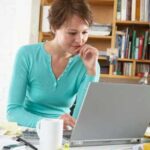
Getting Prepared for This Workshop
There are several “Preconditions for Success” a potential client should be thinking about to be prepared for this Workshop Program:
1. Key Stakeholder Endorsement and Support: Senior Management must strongly endorse and support this initiative. Almost every aspect of the business could be impacted by quantum leadership in some way. Additionally, the lessons learned in the Quantum Leadership Program (QLP) will be transformed into procedures, instruments, and competencies that advance the business. Successful implementation of the program depends in large part on a unified Senior Leadership Sponsor. This should be translated into a dedicated C-Suite champion to motivate the participants and guarantee senior management support for the initiative.
2. Alignment of Mission, Objectives, and Success Metrics: Although these concerns don’t need to be resolved just yet, stakeholders ought to inquire as to what effect they anticipate the development of Leadership abilities and procedures will have. The purpose of the QLP is to:
• Empower Leaders to create organizations that perform at remarkable levels by inspiring cooperation, fostering innovation, developing new sources of value, aligning functions, forging relationships with internal and external parties, and managing complexity.
• Develop leadership skills that can inspire and energize corporate cultures, work well in teams, integrate across domains of expertise, react quickly to change, and use cultural diversity and thinking differences to inspire team collaboration and problem solving.
• Give managers and leaders the tools they need to work together in complicated scenarios that call for interaction, teamwork, and design systems thinking, including best practices.
• To avoid the hazards of polarization, pointless conflict, withdrawal, disengagement, and divisiveness, use Collaborative Excellence methods and procedures.
• Provide a number of frameworks and approaches to enhance daily operational communications and teamwork while significantly lowering the quantity of non-value-added work.
• Increase the ability to engage employees in finding meaning and purpose in their job.
• Lower turnover among millennials by giving them a stronger sense of family and community, as well as more meaning and purpose in their work.
3. Strong Personal Justification for Participation: People want to know “Why?” they should make improving their leadership qualities and skills a top priority, investing the time, attention, and dedication required to be successful. The future of the organization and the participant’s career path should both be directly STRATEGICLY IMPACTED by the program.
4. Support from the Human Resources Department: An essential party in the decision to move forward is HR. Recruitment, performance, employee engagement, and retention are some of the most effective results of quantum leadership, which has been shown to reduce turnover because it: • engages people; improves morale; builds tight teams; fosters a culture of trust; acknowledges the value of people; channels energy into purposeful action; capitalizes on the combined creative energies of employees; empowers employees to improve their personal performance; and maximizes the potential of each individual.
5. Participant Success Measurements: Effectiveness in almost everything depends on high-quality metrics. Without quantifiable metrics, management is like sifting through fog; there will be no agreement on techniques, vision, or results. Early on, a business should consider the measures that will be used to assess whether the program was successful in meeting its leadership development goals.
6. A Strong Value Proposition: The value of the Quantum Leadership Program is its participants’ growing ability to attract and keep the top teams in the industry, with the ultimate goal of greatly increasing a company’s stability and competitive advantage.
7. ROI diagnostics: Diagnostics that can be used to confirm the organization is getting a significant Return on Investment from the QLP must be installed in conjunction with metrics. The Program tackles a number of fundamental diagnostic ROI criteria that are adaptable to the distinct cultures and markets of any firm. The Workshop assessments as well as the baseline diagnostics should be included in each participant’s yearly review.
Making a Prospective or Initial Plan: Important questions that create a “internal improvement plan” should be asked but not yet solved. The following are some inquiries the sponsors ought to make:
• “What levels of the organization will be part of the leadership capability building?”
• “What departments, branches, or business units will pilot the first rounds?”
• “What are the Organizational Forces that will influence the program’s success ?”
• “How do we message the program?”
• “What are the biggest concerns of the participants?”
• “What will be the biggest objections and resistance?”
A myriad of other practical issues should be anticipated and dealt with before the first session. Getting out in front of these questions is essential so we don’t become reactive at the outset.
Course Manuals 1-12
Course Manual 1: Leadership Transformation
Welcome to the Quantum Leadership Program.
Over the next 24-months you and your fellow program participants will be engaged in transformation. Transformation of yourselves and by extension transformation of others in this organization and thus the organization itself.
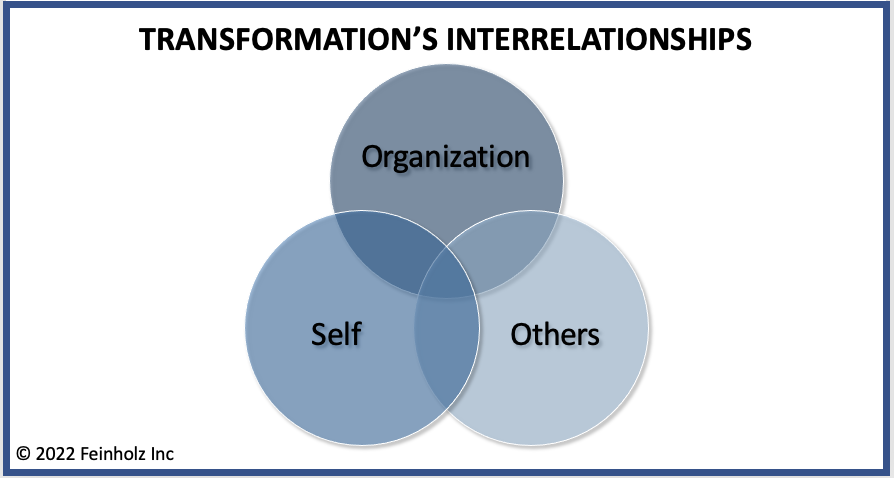
While that image may appear simple, it is a simplification of each of those 3 arenas. So, this program will be addressing each of those arenas in cycles leading to a new understanding and practical mastery of the subject matter.
Each 90-Day module will deep dive into a key component of leadership transformation through readings, videos, discussion and actions. Our objective is to transcend incremental process and skill improvement and truly transform your practices and skill set, and your organization, rendering it dramatically changed from its previous state. This radical shift is required for future long-term success.
As you progress through the program, we will use the following repeating process to transform aspects of your organization and yourself.

Step 1: Assess existing driving forces. It is essential to explore the organization’s context as our first step. That means gaining clarity about the forces that have created the situation and what impact those forces have on business operations moving forward. We include the future, to understand how our business strategy, structure, tools, and culture must be different for success.
Step 2: Assess and analyze the current situation inside the organization or in your skillset. Next, we will reflect and document your organization’s current state and practices that contribute to that state. What is the starting point for our transformation? What is working, what is not working. Where are the current breakdowns and the breakdowns that we can anticipate?
Step 3: Identify new practices and structures. Transformation requires new behaviors, tools, practices, ways of working, and more. Together, we will discuss best practices, innovations, and fundamental shifts so that you and your organization can prepare for a future unlike the past.
Step 4: Develop a change plan. Virtual transformation requires many layers of changes to the organization. Planning must address behavioral change for employees and leaders as well as the adoption of new ways of working. Understanding the impact of these changes on constituents, communicating what needs to be different, and building effective learning programs is critical.
Step 5: Take action. None of it happens quickly, and nothing happens without change first occurring at an individual level. You will create a plan for transformation for yourself, your team, and your business. We will create accountability for you as you go through the course and ensure you are bringing in others in your organization for a collaborative, cross-functional effort.
Step 6: Evaluate results. The experience of performing the project step will be tracked and evaluated individually and discussed among the team to share and gain insights from each other’s experience in performing each step. On a macro level, every participant will be learning the same information. Individual execution will vary as it essentially matches the personality styles of each person in the long run.
Step 7: Refine the practices. This process will enable the team and each participant to master each practice and learn to use precisely the least amount of time and effort and attention required to use each practice and achieve the desired result – the Quantum version of each practice.
These steps will be used continuously during the Quantum Leadership Program. Some workshops will focus on one or more steps as relevant at that time and stage of the program.
Each assessment builds Awareness, whether organizational or personal. From that starting point, you will learn new ways of seeing circumstances, choices and opportunities, as well as how to evaluate them and take action on them.
Many program participants have shared that as a result of this approach they can watch their own progress from ‘becoming aware’ to ‘owning and being vested in’ the ideas and tools.
Material you encounter in one module or manual will be brought back up so that you can go a layer deeper in understanding and mastery over the course of the program.
As a warmup exercise we will be looking at Step 1: Assess Existing Driving Forces – Level 1
Organizational Driving Forces – Level 1
Think of Level 1 Driving Forces as those which are completely in the control of the organization itself. For instance, “Climate and Culture” can be considered Level 1 Driving Forces.
The most frequent way of looking at an organization is examining whether Culture or Climate are at the root of the performance and results of everyone’s efforts. When the objective of leaders is to create changes in the organization they need to ask, “What things can we easily change in our organization?”
Culture and climate are two distinct forces that dictate how to act in an organization.
Over time, each organization develops its own distinctive culture. It is a combination of the actions of founders, past leadership, current leadership, crisis, events, history, and size (Newstrom, Davis, 1993). This culture is the result of rites: the language repeatedly used, the routines, rituals, and the “way we do things.” These rites inform members of the organization what it takes to be in good standing (the norm) and directs the appropriate behavior for each circumstance.
Culture
Changing the culture of an organization takes the full commitment of every leader in the organization. Culture is the end product of all the speech and action that takes place in an organization. You cannot just tell people, “From now on its going to be done this way.” It needs to be envisioned, designed and enacted from the top of the organization to the bottom, from the most experienced staff to the newcomers. Culture is the deeply rooted nature of the organization that is a result of long-held customs, formal and informal systems, rules and traditions.

Case Study
When the Armed Forces started to integrate women into what were traditional male jobs, a great resistance was mounted by the men who believed that the type of soldiering skills they were performing could only be performed by men. Many of them believed in equal rights, but the culture they worked and lived in had cultivated the belief that their work was strictly a man’s job… they could not picture a female doing a job that was traditionally performed by males.
Climate
On the other hand, climate is a feeling by the employees on how they perceive that something should be done at the minute. These feelings can normally be changed within a few hours, days or weeks. So, climate can be considered ‘short-term.’ The workers get these feelings from their leaders and peers, formally and informally. Feelings are transmitted to them by how their leaders act and model, and what they praise and ignore.

Case Study
A worldwide manufacturer of window film believed the dealer services department needs to provide better customer service. The personnel took a series of necessary actions to help the department start performing customer service better. In the majority of organizations, their actions would not be met with great resistance throughout the ranks. Why? Because “not providing good customer service” is not a part of the heritage of most organizations. Thus, if someone wants to change it, it does not really affect others within the organization.
These forces influence both individual and team motivation and satisfaction, probed through questions such as:
• How well does the top leader clarify the priorities and goals of the organization?
• What is expected of me as a leader?
• What is the system of recognition, rewards, and punishments in the organization?
• How competent are the leaders?
• As a leader am I free to make decisions?
• What will happen if I make a mistake?
Organizational climate is directly influenced by the leadership and management style of the leader, based on the values, attributes, skills, and actions, as well as the priorities of the leader. Compare this to “ethical climate” — the feel of the organization about the activities that have ethical content or those aspects of the work environment that constitute ethical behavior. The ethical climate is the feel about whether we do things right; or the feel of whether we behave the way we ought to behave. The behavior (character) of the leader is the most important factor that influences the climate.
On the other hand, culture is a long-term, complex phenomenon. Culture is the shared expectations and self-image of the organization. The mature values that create tradition or the “way we do things here.” Things are done differently in every organization. The collective vision and common folklore that define the institution are a reflection of culture. Individual leaders cannot easily create or change culture because culture is a part of the organization. Culture influences the characteristics of the climate by its effect on the actions and thought processes of the leader. But, everything you do as a leader will affect the climate of the organization.
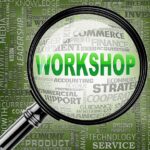
Exercise 1.1 – Climate & Culture
Climate
Culture
Climate
Culture
Climate
Culture
Climate
Culture
Climate
Culture
Climate
Culture
Climate
Culture
Climate
Culture
Climate
Culture
Climate
Culture
Personal Driving Forces – Level 1
Since the early 20th century, sociologists have been fascinated by the concept of leadership. Researchers set out to answer questions like:
• What types of characteristics do the leaders of the organization commonly exhibit?
• Which leadership styles seem to be the most effective in this organization?
• In what environment should a certain leadership style be applied?
TORCH has developed a summary of 10 distinct ‘styles’ of Leadership that is a useful synthesis of many of the different models that developed over a century. We can consider these styles Personal Driving Forces – Level 1.

1. Autocratic Leadership.

Autocratic leadership is defined by a top-down approach when it comes to all policies, procedures and decision-making and within an organization. Autocratic leaders tend to make executive decisions they expect others to follow and infrequently collect input from team members. The following are additional attributes of autocratic leaders:
Structured
Follow rules and regulations
Believe in close supervision
Hold all the power and control
Pros and Cons
Autocratic leadership is a style that draws mixed opinions – some believe it’s a very effective way to mobilize a team and get things done, while others believe it’s an unproductive and demotivating way to lead. Regardless, it’s important to understand both sides in order to see the big picture.
Pros
Can be efficient, especially when it comes to decision making
Keeps teams cohesive and consistent since one person is taking charge
May make everyone’s individual roles clearer since they’ll be delegated specific duties
Cons
Can stifle creativity, collaboration, and innovation
May lead to disengaged individuals and team members that feel as if they don’t have a voice
Doesn’t allow any room for mentorship or professional growth
Can lead to abuse of power

Case Study
ACME manufacturing hired a new Head of Marketing named James. While James was a nice person, he preferred to take an autocratic approach to leadership – which caused issues at the company. Instead of asking the team about the existing marketing strategy, James came up with an entirely new plan that he didn’t run by anyone else. He also assigned specific tasks to people on the team but didn’t take individual strengths and weaknesses into considerations – not to mention he began micro-managing everyone’s work, making it clear that he didn’t trust the team to meet deadlines.
While the marketing goals were technically being met, the marketing team was seeing high turnover rates. Unless the organization did something to shift James’ leadership style, the marketing department would continue suffering.
2. Transactional Leadership

Transactional leadership is defined by short-term planning, control and organization. Leaders who adopt this style rely on a system of rewards and punishment to motivate their followers. Characteristics of transactional leaders include:
Focus on short-term goals
Structured
Believe in extrinsic motivation
Efficient
There are many similarities between transactional leadership and autocratic leadership. The main difference is that transactional leadership, as the name implies, involves a clear exchange between the leader and the team members. For instance, in exchange for compliance and high performance, an employee might be rewarded with a promotion.
Pros and Cons
The transactional leadership style certainly isn’t for everyone, but that doesn’t mean that it comes without benefits. It’s important to recognize the advantages and disadvantages to identify where this leadership style could potentially be applied
Pros
Can be an efficient way to reach short-term goals
Clearly defines expected behavior from team members with reward and punishment
Provides structure and stability
Cons
Limits creativity, growth, and initiative
May not be impactful on people who aren’t driven by extrinsic motivation
Can be discouraging for those who are looking for development opportunities

Case Study
ACME Manufacturing has been struggling for many years, dealing with everything from public relations debacles to plummeting sales. To help, Jamie was brought in as the new CEO. Jamie had over two decades of experience running large, multi-million dollar corporations. Over the next few months, she focused on making the short-term goals of the company clear to all employees, so everyone understands their roles and what’s expected of them in terms of performance.
While Jamie didn’t get involved in the day-to-day, she actively monitored progress and intervened as soon as she notices a problem. Jamie was also quick to praise and reward high-performing employees, while issuing performance improvement plans to team members who weren’t meeting expectations. In the course of a year, Jamie brought the company back to a stable place.
3. Bureaucratic Leadership

Bureaucratic leadership relies on strict regulations, a clear chain of command, and conformation by its followers. As the name implies, this is a leadership style that’s commonly found in government entities, as well as military and public organizations. The following are additional characteristics shared by bureaucratic leaders:
Hierarchical
Task-oriented
Strictly follow rules, regulations, and processes
Encourage a merit-based system
Pros and Cons
Bureaucratic leadership is another style that tends to draw mixed opinions. Some people believe bureaucratic leaders have aided the development of Western civilization and think there’s a place for this approach to leadership. Others find this style to be inefficient and outdated.
Pros
Stable in terms of job security and outcomes Removes favoritism from the equation
Very clear roles, responsibilities, and expectations
A highly visible set of processes and regulations
Cons
Inefficient since everything has to go through a chain of command
Doesn’t encourage an individual’s personal or professional growth
Stifles creativity, innovation, and free thinking
Doesn’t foster collaboration or relationship building within teams
Can make it difficult to respond to change

Case Study
Robert started a government job after working at startups. His manager, Stuart was part of a chain of command that continued all the way to the CEO. The type of work Robert did was impactful, but it was also repetitive and followed a specific process. If Robert wanted to do anything that fell outside of established guidelines, he needed to run it by Stuart first. It took a long time to receive an update because several people needed to approve the change. Because Robert had been producing high-quality work within the guidelines, Stuart informed him that he was up for a promotion in the next cycle. This result was exciting because, at Robert’s last startup, he was passed up for a promotion that instead went to his more outgoing and well-liked colleague.
While there are frustrating aspects of working for the government – especially after working for startups with flat structures and flexible processes – you see how bureaucratic leadership keeps everything running smoothly.
4. Charismatic Leadership

Charismatic leadership is defined by a leader who uses their communication skills, persuasiveness, and charm to influence others. Every charismatic leader looks a little bit different. However, there are many key characteristics that most charismatic leaders share:
Strong communicator
Empathetic and relatable
Motivational
Engaging and charming
Optimistic
Pros and Cons
Many people find charismatic leadership to be an inspiring leadership style, which it certainly can be. As long as charismatic leaders are aware of the possible traps that can come with this leadership style, it’s one that can come with many positive benefits.
Pros
Highly inspirational and motivating
Encourages a sense of camaraderie, collaboration, and union
Makes followers feel heard and understood
Creates movement toward positive change
Cons
Can become more focused on themselves than their people
Has the potential to become self-serving
Frequently viewed as shallow or disingenuous

Case Study
Alex, the CEO of a nonprofit organization, was energetic, vibrant, and deeply passionate about the mission of the organization. Whenever the team felt discouraged by their lack of progress, Alex was wonderful at making everyone feel uplifted by their work. She prioritized relationship building with her employees and was known to leave “thank you” notes to her leadership team to make sure they know they were appreciated.
There are times when Alex’s direct reports and employees became disenchanted with her. Sometimes she got so carried away by her own ideas that it appeared she was not listening to anyone else. Regardless of these occasional moments, Alex was overall a beloved leader.
5. Transformational Leadership

Transformational leaders create a vision based on identified needs and guide their teams toward that unified goal through inspiration and motivation. The main difference between transformational leadership and the other styles described so far is that this one is focused on changing the systems and processes that aren’t working – unlike transactional leadership or bureaucratic leadership, which don’t aim to shake up the status quo. Below are common characteristics of a transformational leader:
Motivating and influential
Team oriented
Supportive
Competent
Trust in team members
Pros and Cons
While transformational leadership has many strengths, there are some potential downsides to watch for as well. Understanding the potential pros and cons of this leadership can help you see the big picture.
Pros
Motivates the team
Conducive to building strong relationships and encouraging collaboration
Gives team members autonomy to do their jobs
Can lead to more creativity, growth, and empathy on teams
Cons
May not be the best fit for specific organizations (i.e. bureaucratic)
Can cause feelings of instability while disrupting the status quo
Lots of pressure on the leader, who needs to lead by example

Case Study
Nelle, a leader at Solarguard, was known at the company for having a highly successful team. This is because Nelle practiced a transformational leadership style. They set a vision for their team – that they’re all on board with – and made sure everyone understands why and how they were moving towards this goal. From there, they always took time to make sure their team had the resources and support they needed to be successful in their roles. However, Nelle wasn’t involved in day-to-day decisions. The team knew they oversaw a smart, competent group of people and trusted them to execute on the strategy.
While they had high expectations of their team, they demonstrated the expected standard through their own behavior by being trustworthy, open, and as hard-working as their leader.
6. Coaching Leadership

Coaching leadership is a style defined by collaboration, support, and guidance. Coaching leaders are focused on bringing out the best in their teams by guiding them through goals and obstacles. Characteristics of coaching leaders include:
Encouraging
Able to give feedback and ask good questions
Supportive
Focuses on growth and development of others
Pros and Cons
Coaching leadership brings many positive qualities to any organization or role. But there are still potential downsides that every leader should be aware of in order to get the most out of this leadership style.
Pros
Encourages two-way communication and collaboration
Facilitates the personal and professional development of individuals
Focuses on being supportive, not judgmental
Creates opportunities for growth and creative thinking
Cons
Resource intensive since it requires a lot of time and energy
Doesn’t always lead to the fastest, most efficient results
May not be the ideal choice for high-pressure or strictly results-driven companies

Case Study
Ted led a team at Scopus Manufacturing and used coaching leadership. His priority was making sure all his team members were growing – personally and professionally – and had the support they needed to reach their goals. Ted sat down with each employee to make sure they were connected to the right resources. If his employee needed a specific course or training opportunity to improve, he made sure to get it for them. Ted was also great at providing balanced feedback. He gave praise where deserved and constructive comments where needed.
While Ted occasionally received pressure from the leadership team due to his team’s slow progress toward goals, it’s clear that his direct reports were very happy and fulfilled in their roles. And even though it took a bit longer, Ted and his team eventually met their objectives.
7. Democratic Leadership

Democratic leadership, which is also commonly known as participative leadership, is about letting many people participate in the decision-making process. Democratic leaders typically share certain characteristics:
Empowering
Collaborative
Objective and fair
Focus on distributing responsibility
Open minded
Pros and Cons
The democratic leadership style is generally viewed as being very fair and inclusive. Of course, there are ways in which this approach to leadership is lacking as well.
Pros
Encourages collaboration
Includes a variety of opinions and ways of thinking
Leads to higher group engagement and productivity
Can result in more creative solutions
Produces outcomes supported by the majority
Cons
The minority opinion is overridden
The involvement of multiple people can lead to more communication gaps and confusion
Can take a longer time to come to a decision
An unskilled or untrained group can result in more decision making

Case Study
Riley was a mid-level manager at Scopus Manufacturing. Because Riley believed in democratic leadership, she encouraged her employees to share their feedback, thoughts and ideas about what was happening at the organization. She actually took note of these suggestions and always came to a solution or decision that reflected the opinion of the majority. Of course, this approach didn’t always please everyone. There were some employees who were disgruntled by the fact that their opinions – which were usually in the minority – were never acted upon.
The leadership team is also sometimes impatient with Riley’s team since it takes her a long time to collect enough feedback to make a decision. Overall, though, people on Riley’s team felt very heard and her method of leadership led to many creative, innovative solutions.
8. Collaborative Leadership

Collaborative leadership is focused on encouraging people to work together across organizational boundaries in an effort to accomplish shared goals. Below are key characteristics of collaborative leaders:
Teamwork oriented
Build trust
Relationship focused
Self-aware
Pros and cons
To effectively practice collaborative leadership, it’s important to be able to look at both the strengths and weaknesses of this approach.
Pros
Can lead to more creative, innovative ways of thinking
More opportunities for diversity
Can strengthen cross-team relationships Builds trust within an organization
Cons
May lead to ambiguity in roles and responsibilities Can create cross-team conflict
Potential power struggle between leaders

Case Study
Ben was the Head of Engineering at Barr Engineering and was known for his collaborative leadership style. Any time his team was assigned a significant project, he encouraged his engineers to work closely with people on the marketing, sales and product teams. As a leader, Ben’s role was to make sure the collaborative process was productive and not blocking anyone’s progress. He also spent a lot of time facilitating communication during meetings and working with leaders on the other teams to make sure everyone was on the same page.
There are occasions when there were cross-team conflicts that Ben had to go in and manage but, overall, his collaborative approach to leadership largely benefited many teams in the organization.
9. Servant Leadership

Servant leadership puts the needs, growth, and wellbeing of their organization, employees, and community above everything else. Below are the common traits of a servant leader:
Selfless and humble
No interest in holding onto power or material possessions
Community focused
Highly empathetic
Pros and Cons
While servant leadership comes with many benefits to the recipients of this style, there are common pitfalls to come from when it comes to the leaders themselves.
Pros
Focuses on the development and growth of others
Can lead to improved performance, innovation, and collaboration
Creates a safe environment where people aren’t afraid to fail
Reduces turnover and disengagement Increases trust with leaders
Cons
Servant leaders are more prone to burn out
Resource intensive
Difficult to train other leaders in the serve-first mindset
May take longer to see results or reach goals Has the potential to be perceived as ‘weak’

Case Study
Imagine you work at Barr Engineering where the CEO, Taylor, practices a servant leadership style. Instead of sitting in her office with the door closed, Taylor makes a point of eating lunch with her employees, checking in on them through Slack, and always expressing gratitude for their hard work. Any time an employee comes to her with a problem, she always makes herself available and prioritizes getting them the support they need. Taylor isn’t only focused on serving her own employees. She’s also passionate about giving back to the local community. That’s why she’s an advocate of corporate social responsibility and provides products and services that truly help people.
While Taylor is prone to overworking herself, she feels it’s completely worth it. Her employees are happy and fulfilled, and her organization is a beloved presence in their community for all the positive contributions it makes.
10. Laissez-Faire Leadership
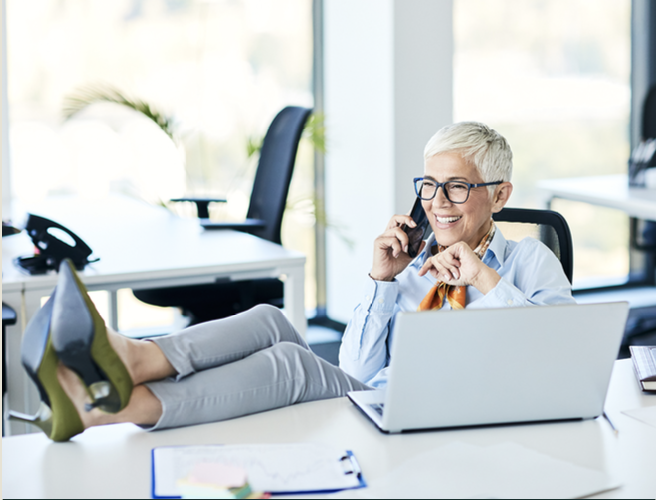
Laissez-faire leadership takes a hands-off approach to leadership and gives others the freedom to make decisions. The following are a few of the most common characteristics of laissez-faire leaders:
Able to effectively delegate work
Trusting
Understanding of when to step in and when to give space
Focus on the big picture instead of the day-to-day
Pros and Cons
Laissez-faire leadership is becoming increasingly popular in modern workplaces that prefer flatter structures and more freedom for employees. While this style certainly can be a good fit for many organizations, it’s not the best choice for all.
Pros
Empowers individuals to practice their leadership skills
Can lead to increased creativity and innovation
Less fear of failure
Encourages trust between team members and leader
Instills a sense of independence
Cons
Can result in low productivity
Conflict amongst team members is common
May lead to confusion about roles and responsibilities
Won’t be effective with an unskilled or unmotivated team

Case Study
Gina was the director at Mattel, who oversaw a team of senior advertising employees. She took a laissez-faire approach to leadership because she knew that her employees were experienced enough to manage most day-to-day decisions, challenges, and questions that come up in the job. However, that didn’t mean that she was unavailable. On the contrary, she met regularly with her managers just to make sure things are progressing and to see if the team needed her help unblocking any obstacles. Occasionally, she had to step in to resolve inner-team conflicts or to provide specific expertise. But otherwise, she generally stayed out of her team’s way.
Gina had to be careful when hiring new people because she recognized that it would just take one unproductive employee to ruin the effectiveness of the laissez-faire leadership style. So she was incredibly thorough about screening for the right people.

Exercise 1.1 – WHICH of these 10 styles of Leadership would your direct team say describes you best?

These leadership styles are organized along a continuum from the most rigid, structured style to the most flexible, unstructured style. Styles are so automatic, and personality driven that it can be an insurmountable challenge to try to shift them. Therefore, rather than ‘styles’ of leadership, the QLP focuses on 6 leadership practices that individuals using every one of the 10 styles will learn, refine and use as Leaders.
Now let’s take a look at Organizational Driving Forces – Level 1

Exercise 1.2 – If you applied those 10 styles to your organization, could you describe What Overall Style Of Organization Are You In?
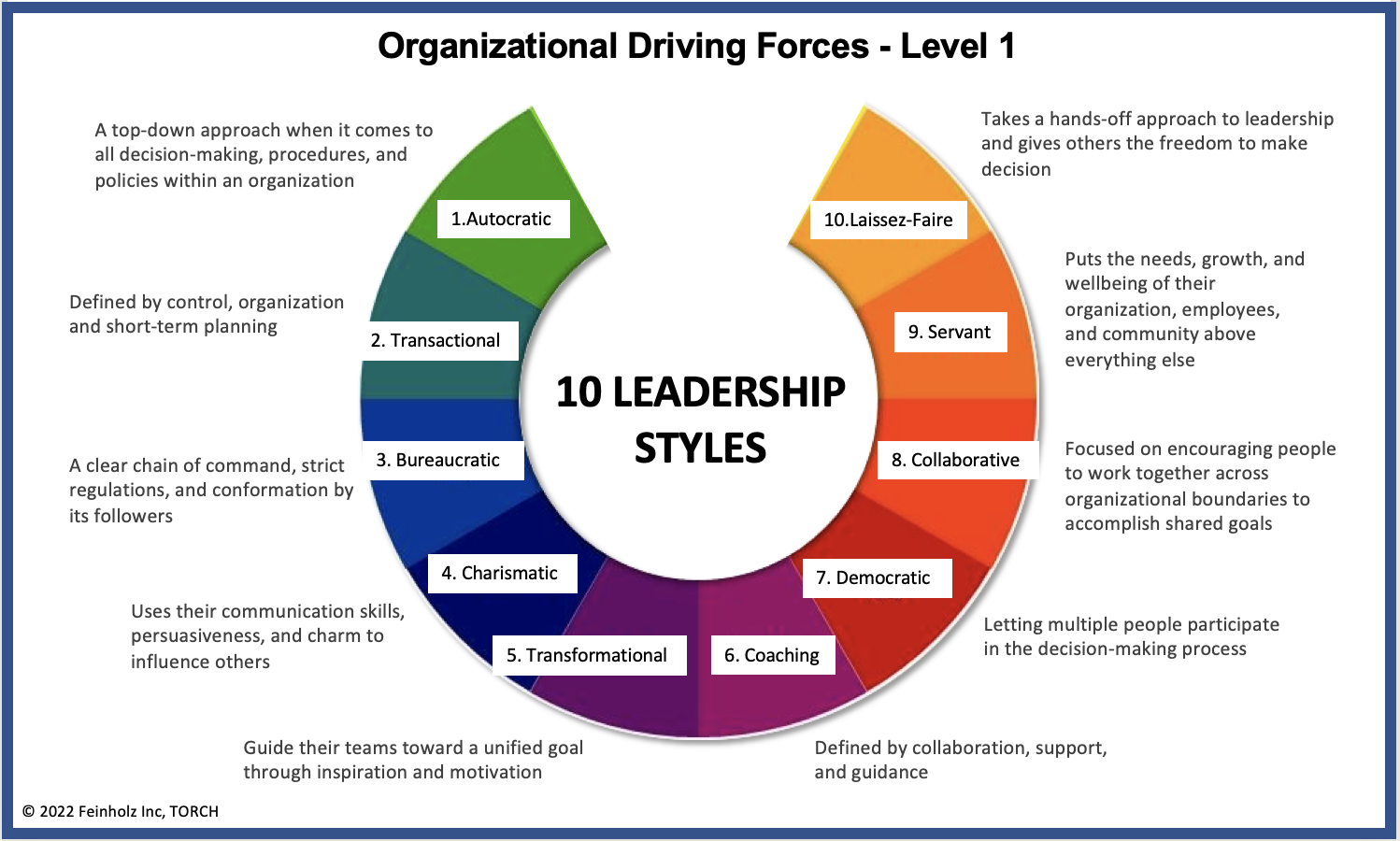
Course Manual 2: Learning Curve Master
Each of us encounters opportunities to learn throughout our day. Whether we avail ourselves of that opportunity is often a lightening quick barely conscious decision. To succeed in the Quantum Leadership Program, participants will need to choose to ‘stay awake and aware’ and continuously press through unfamiliar and uncomfortable new information and practices.
Understanding the Learning Curve will empower participants to press through those moments of discomfort and take on the new thinking and behaviors with increasing ease.
*PDF LINK – Demystifying the Learning Curve*

The Learning Curve aside, there are two fundamental challenges to all learning. The first is what we call Learning Drop-Off – the challenge of actually retaining what has been ‘learned.’
Hermann Ebbinghaus and subsequent researchers demonstrated that if you regularly memorize something within an hour, you will remember it for one day. You will remember something for a week if you review it a day later. The impact of the review on learning is depicted in the graphic above. Immediately following class, the evening of the class, the following day, week, month, and so on are the times when forgetting happens. As a result, it has been customary to advise four or five evaluations of the content learned: immediately following the session, that evening, one week later, and one month later. Learners’ recall of new material is increased because to these frequent checks.

But what about education that aims to develop skills? Simply reading book or movie reviews is insufficient. To develop new skills and muscle memory in addition to mental memory, the new ways of thinking and acting must be consistently used in a variety of contexts.

Exercise
Recap
1 – Having a vision
2 – Encountering new possibilities
3 – Seeing the choices and deciding on one
4 – Tuning attention and awareness
5 – Getting support
6 – Breaking through
7 – Celebrating success

Exercise 1.2.1 Learning Drop-Off
The second challenge is Solving For The Right Issue.
Improved problem solving, increased leadership potential, greater adaptability and resilience, individual and organizational learning from implementing new strategies or culture change, and increased effectiveness and profitability of your business are just a few of the advantages of action learning.
One of the challenges of Action Learning is the beginning of the process: defining a problem that is the anchor for all the learning activity.
Selecting a problem statement is one of the most important aspects in Action Learning and it needs to be done very carefully.
The problem which the QLP addresses is “How can leadership create organizational stability in an era of external demographic and socio-economic forces creating a tug-of-war on employee recruitment, engagement and retention?”

Exercise 1.2.2 Review The Problem Statement
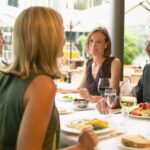
Course Manual 3: Action-Learning Methodology
The Quantum Leadership Program is based on an Action-Learning Methodology. According to the Action Learning Model, a learner can acquire knowledge through cooperating with peers to solve a problem or deal with a situation in a group environment. As a result, students will be able to advance not just their individual skill sets and knowledge bases but also those of the organization or group.
Team participants will engage in both individual and joint learning and individual application to their immediate circumstances. This prevents the “80% down the drain” learning drop-off that occurs when participants go away for their learning at a typical weekend or weeklong seminar.

How does action learning work?
The application of action learning was created by British physicist and business strategist Reginald William Revans1. He found that when mixed groups of people are required to face specific challenges, learning occurs most effectively. The core of the experiential learning approach known as “active learning” is the idea of “learning by doing.” Theory and practice put together can result in long-lasting learning outcomes. Action learning is actively used in project management, leadership development, and college instruction.
Why is action learning so effective?
In action-based learning, participants tackle difficult problems in small, mixed groups. They start by coming up with answers to an issue before putting the techniques into action while actively listening and exchanging information in groups. By examining issues from a theoretical point of view and testing the answers they have devised in a risk-free setting, participants develop the ability to deal with novel situations.
The technique is also utilized to enhance group collaboration abilities. Participants gain knowledge about how to handle difficult, time-sensitive issues and come up with original ideas for winning tactics. They gain communication skills, are inspired to critically analyze the issues at the individual and group levels, and discover how to approach problems from various angles.
Another essential component of the action learning approach is the seminar facilitator. He guides the participants through the exercises, aids them in their learning, and encourages them to consider the answers they come up with.
How is the action learning method used?
An illustration of the action learning approach is business simulations. The participants assume the role of a company’s management and learn to make management decisions in a gamified manner while under time constraints. They are exposed to common conflicts of interest up close and learn how to use business strategies, information sources, and decision-making uncertainties in a safe setting.
The participants collaborate to solve an issue and share ideas in a group setting. A financial year is simulated after each decision phase, and the participants observe the direct results of their choices. The groups can evaluate their strategies and modify them for the remainder of the simulation as they analyze the results of the time. Business simulations can be used to implement learning by doing, a classic action learning approach component. A more in-depth grasp of business is provided to participants through experience-based learning, resulting in a lasting learning process.

Case Study
Challenge: Fostering Cultural Change by Harnessing Ideas from the People Inside, for the People Inside PwC (Formerly Price Waterhouse Coopers)
PwC conducted a thorough company-wide pulse study that included a survey on the progress of each individual office. The survey results showed some performance difficulties that worried the firm’s executives. The problem was that every office in the U.S. was experiencing a different set of outcomes, which was impacting both their internal and external client performance. The design team had to individually tailor content for each workplace in order to find answers based on the survey results. An office managing partner was responsible for overseeing each office and had insights into what needed to be done on the ground to improve performance and alter the culture, which would then improve performance in that office particularly.
Action Learning:
An individualized solution was developed using tools that could be quickly customized for each of the approximately 80 PwC locations in the U.S. In collaboration with the managing partner of each office, ALA used two of their Select Solutions, the Innovation Stockmarket and the Marketplace of Ideas, to adapt the material without having to redesign the entire distribution procedure. All employees had comparable experiences as a result, but the information used to guide the process was tailored to the particular difficulties faced by each office.
Each managing partner highlighted the specific problems that exist in their respective markets. Fairness in Compensation, Flexibility & Work-Life Balance, and Connectivity & Trust are a few examples. These challenges were integrated into the Marketplace of Ideas process, which involved the entire office sharing ideas, uniting around the problems, and developing suggestions for how to address them.
The ideas created during the Marketplace of Ideas session were then carried forward into the Innovation Stockmarket, a competitive exercise modeled after the trading floor of a stock exchange. Each table team at this event is split into two teams, one of which is a sales team that will travel and “sell” ideas, and the other of which is a team of venture capitalists that will remain at the table to hear the presentations and make investments in ideas and suggestions.
A limited group of partners and colleagues with the skill sets required to further develop the solutions supported and advanced the ideas that received the most investments (votes) during the Innovation Stockmarket process. Post-program outputs comprised:
A succinct summary and the status of action plans were supplied 45 days after the program. 90 days after the program ended, a status report and highlights were presented at the significant Town Hall sessions. A report outlining all office accomplishments and top suggestions was distributed around all offices six months after the program ended in the interest of shared learning.
Impact:
Everyone was invited and included in the solution space, and this created a strong sense of caring and dedication to making each office a better place to work. As a result of this program, instead of receiving a “corporate fix” that didn’t meet their own needs, each market developed programs and, in some cases, cultural shifts. When the Pulse survey findings were rerun a year later, scores across all offices significantly improved.
When you visit some offices now, you can frequently still see and experience the culturally specific and locally tailored solutions that were implemented after the program. An improvement in the results of the Forbes – Great Places to Work study was seen as more proof of the significance of empowering employees to create their own solutions. PwC was ranked number 82 on Forbes’ list of Great Places to Work when the initiative began. PwC increased their position on the list from 71 in 2006 to 58 in 2007 when the program was completed.
Although stakeholders in the organization may have a list of actions and metrics already in consideration, the QLP’s value is that it goes beyond blind adoption of other people’s work.
In the first stage, participants research and develop their own thinking.
In the second stage they meet with stakeholders such as their HR Business Partner to discuss the issues in depth and learn where the organization on those matters is at the current time.
Together they come to an understanding that the QLP participants will use and refine during the span of the program.
Each Workshop contains Modules that evolve in a sequence that starts with Concepts or Key Factors For Success, then proceeds to Processes & Practices, incorporating Tools for throughout, and then some form of Implementation/Application.
This enables immediate monthly implementation and experience and effect evaluation and refinement.

Case Study
Challenge: Leveraging Collaboration to Maximize Enterprise Results
National Australia Bank (NAB) was in a crucial stage of its development from pulling off a significant turnaround to emerging as a leader in industry growth. Realizing NAB’s potential as a global organization and expanding outside national borders were critical success factors for long-term growth. The success of the NAB organization and each of its business units was to be actively committed to by a group of empowered senior leaders who were in alignment with one another.
Action Learning:
To build a strategy to hasten the growth of NAB’s top leadership as a source of competitive advantage, NAB teamed up with outside experts. On important topics like corporate strategy, innovation, leading in the face of global complexity and uncertainty, utilizing the NAB culture, and building leadership bench strength, NAB leaders would engage with thought leaders from all over the world.
One of the pillars of this multi-tiered approach was a fast-paced, highly interactive, entertaining business simulation that called for a lot of team creativity, resourcefulness, and teamwork. In order to maximize company performance, the simulation was utilized to illustrate the necessity of autonomous innovation inside business divisions.
The phrase “necessity is the mother of invention” is used frequently. The Apollo 13 movie contains some of the most iconic moments when the capsule is running low on oxygen and accumulating carbon dioxide. Mission Control challenges the engineers on the ground to come up with a way to get rid of the CO2 using the odd and constrained supply of spare parts that the astronauts have access to.
Similar to other Action Learning exercises, this one required the teams to build a pipeline to deliver a crucial resource, or “a silver bullet,” from a set of constrained resources and a budget. The group had to evaluate, adapt, and remodel in response to a number of twists and turns throughout the exercise to satisfy shifting client needs.
Participants in the four-hour interactive event learn how to establish trust, share resources, and concentrate on developing solid connections while delivering business results—a lucrative magic bullet for their client.
Under the immediate pressure of resource limitations, collaborative models and leadership philosophies were put to the test. In order to provide input during the simulation, coaches familiar with the leaders’ personal development objectives were brought in as observers. The simulation, according to the coaches, was the most comprehensive laboratory they had ever seen for capturing particular observable behaviors.
Impact:
The NAB Leadership Team left the Silver Bullet Runway simulation with a clear understanding of what it meant to “live the NAB brand” (they called it the “leadership brand”) and the ability to lead with an enterprise perspective.
National Australia Bank Group now employs over 42,000 people worldwide and serves over 12 million customers through its more than 1,700 retail locations and commercial banking centers. Businesses in New Zealand, Asia, and the UK supplement its Australian financial services franchises.

Exercise 1.3.1 Action-Learning Experience

Case Study
Challenge: Change Agents: Leaders Tapped to Turn New Org Structure into Growth
Anglo American had excellent chances to expand internationally, but its organizational setup was preventing this. Anglo needed to exploit this reorganization to seize new markets and increase its market share more than ever because it was done to capitalize on this growth opportunity. To alter the teams they lead and boost organizational performance, the challenge was to empower the leaders in Anglo to be the change’s agents and see this organizational transformation as a path for their own personal growth.
Action Learning:
A unique, multi-module program dubbed “Leaders in Anglo” that was meant to significantly speed up the development of some of Anglo American’s leadership talent was initiated. The program’s objectives were to assist this high-potential demographic in beginning to comprehend the global issues that will arise throughout their lives and in building the international network of colleagues required to promote company growth and alignment.
The three modules of the program’s design emphasize leading oneself, leading teams, and leading the business. In the leading self module, coaches assisted the participants in interpreting the 360-degree feedback and choosing a particular area for development to concentrate on throughout the program. Action learning project teams were formed to address the dual objectives of leading oneself and leading teams, and each member shared the unique task they were each working on. Accountability partners were used throughout Leadership Lab exercises to rehearse and clarify the precise feedback that was required.
Impact:
The attendees were greatly impacted by the simple process of nomination to attend LiA. It was an unmistakable declaration of faith in those 30 people each year and an investment in their future. Before the program even started, you could actually watch the people grow internally.
Compared to other participants at that level of management, participants had a much better rate of retention. Anglo placed roughly 150 employees through the 5-year program, and only lost five managers in that time. The turnover rate for this peer group prior to the program had typically been between 10% and 15% prior to the program. Just 3% of the workforce changed throughout these five years, or less than 1% annually.
Other advantageous results include:
The direct reports of participants’ line managers said that the experience had given them a boost and made them feel more invested in the company. Every participant worked on a “Business Impact Project” (BIP) between modules one and two, which led to significant change in each participant’s leadership.
Many participants went on to be nominated for the Advanced Management Program, or AMP, indicating that they had quickly risen one or even two levels.
The final module’s (module 3) action learning challenge had a significant influence as well; participants presented their ideas to the Executive Committee, and many of them were adopted and put into practice. This showed a significant impact on the entire company, providing additional evidence that Anglo was making progress toward its goal of organizational alignment.
Throughout the QLP there will be opportunities for participants to design Active Learning exercises to use with their own teams to explore approaches to increase employee engagement and retention.

Exercise 1.3.2 Action-Learning Experience
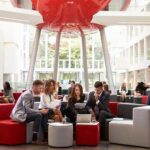
Course Manual 4: Compelling Conditions
Powerful forces in global business are driving the need for far greater leadership by all varieties of organization management, as well as between all types of business functions and technical domains. With the exception of the early years of computer-based technological innovations, in no other period in the history have organizations encountered so much change so fast. Leadership plays a critical role in navigating this change to stabilize companies.
Compelling Conditions encompass both external forces as well as internal forces.

It is critical that leaders individually and collectively understand the forces that are straining their organization’s stability. Let’s begin with the External Forces influencing employee experience and engagement. Senior business executives are recognizing the value of leadership development to address the personnel and business stability impacts of these trends. Today, organizations see the value of investing time and resources in the leadership practices that will increase retention, morale and productivity.
The External Force of Demographics

Case Study
In 1996 the Lockheed Corporation was confronting the fact that a majority of their expert workforce was reaching retirement age, and in a few short years would be walking out the door. In addition to the high cost of replacing a worker, there would be the significant problem of losing the experience and information uniquely possessed by that person.
When replacing retiring, experienced workers with younger, inexperienced ones, the corporation tracked a catastrophic of knowledge and experience, known as “knowledge capital.”
Looking at the demographic curve even a decade ago provides immediate insight to the magnitude of pending knowledge loss across industries.
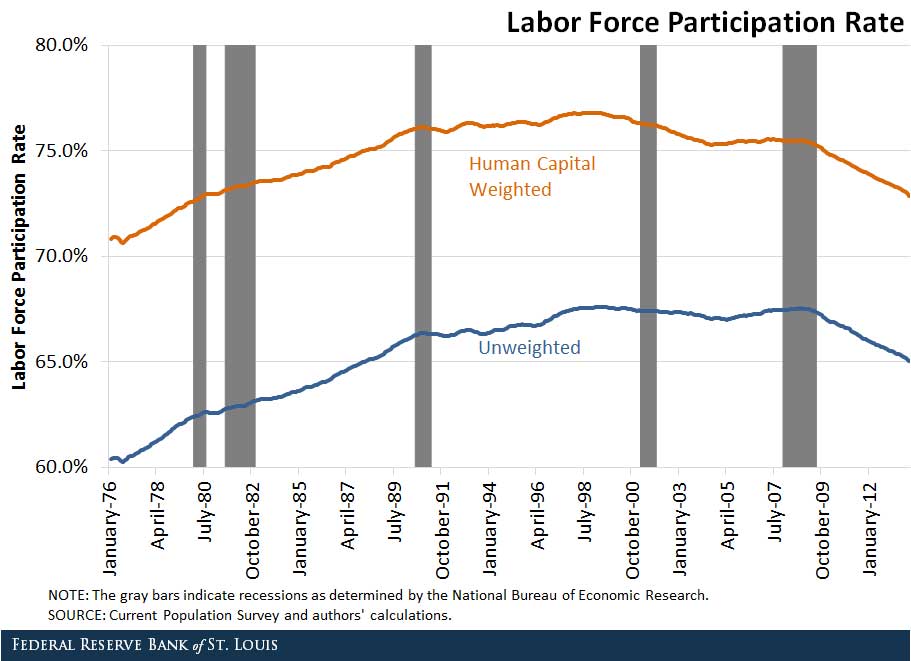
Even those people entering the work force the past decade cannot make up for the brain drain and experience drain that is creating tight labor markets across industries.

Experienced employees have inside knowledge of how an organization works, including how to deal with both complex problems that arise and the internal, institutional bureaucracy. They have developed versions of leadership skills. They have detailed knowledge of customers and prospects. These experienced Bay Boomer employees have contacts and relationships they have developed and built over the course of their careers. They have product familiarity and knowledge.
Unless a company is a solo-preneur shop, all work happens through relationships between the staff of organizations.
The intermixing of 4 generations who are motivated entirely differently triggered continuous stress on the company’s stability.

Their work ethics differ enormously as well.

Leadership was forced to undergo a radical change out of any remaining command and control attitude into one of hyper-communicator, shepherd, and pied piper. Leaders reported needing to keep changing hats depending on which generation they were communicating with and being stretched thin in trying to craft single messages that aligned everyone’s attention and motivation.
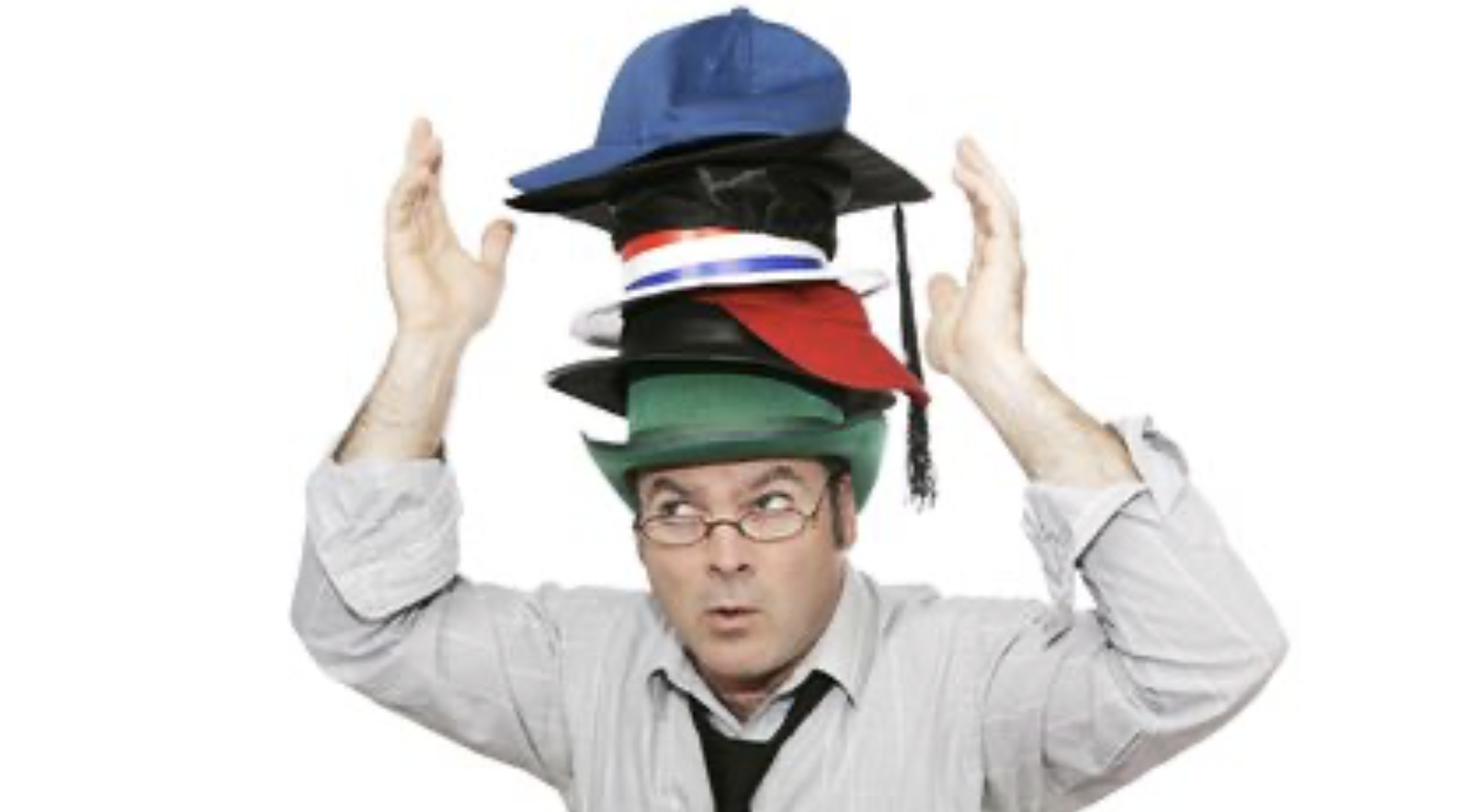
All of this points out the radically different values, social attitudes, and motivations at play in public and in the workplace between the four generations.
Leading such a diverse group is unprecedented, and leaders need to understand the demographic realities as well as the generational needs of each cohort.
The recent United Nations Joint Staff Pension Fund report summarized research findings from around the world.


As Harvard Professor and Author, John Kotter, pointed out that under these circumstances:
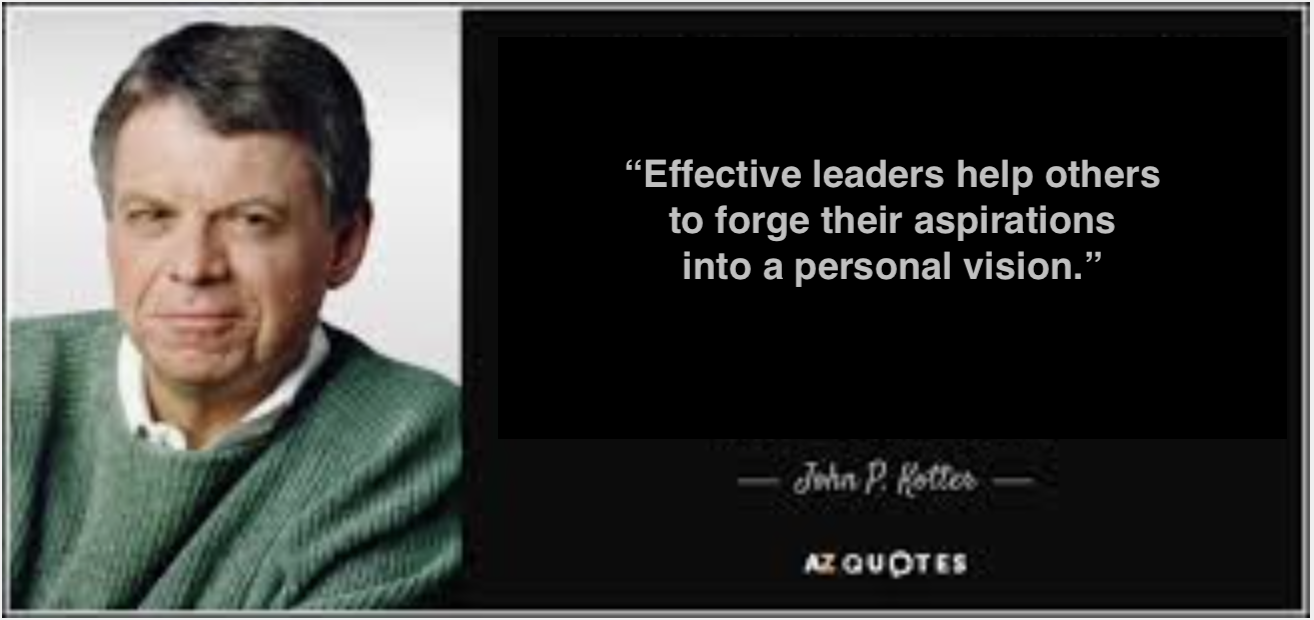
After a century of theories converted into treatises, at the turn of the millennium the shepherds of business recognized that while ideas could be spread among their peers these topics in a siloed manner, they did not address the external and internal challenges faced by organizations themselves.

Exercise 1.4.1 What Have You Experienced?
The External Force of Values
Many factors contribute to individual values. However, organizations need to first understand the macro-level values and those are best understood through an examination of the values shift from one generation to another.
The numbers of available employees based on birth rates are creating a perfect storm pressing on organizations.

While Baby Boomers anticipated retiring by the 2020’s, the economic upheaval of 2020-2022 has caused many to delay those departures from the workplace. Those deferrals will not make up for the overall loss of expertise and experience.
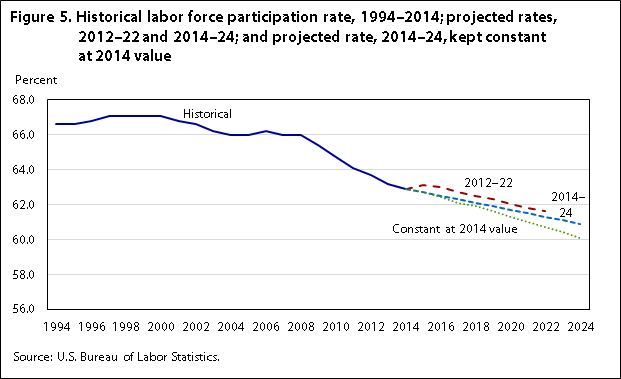
Filling the halls of corporations are Millennials – the Gen Xers and Gen Yers joining them.
And as the generation that is rising through the organization it’s important to understand what Gen Y values:
Gen Y is very individualistic and does not believe that “one size fits all.” They more likely feel “my size fits me.” They are tech savvy, diverse, and understand the global marketplace in ways that generations before them did not. They understand their company’s customers and think globally. They have strong self-esteem, are ambitious and look for ways to contribute, not sit on the side-lines. They are research-oriented problem-solvers.
With all of that said, Gen Y also values collaboration and teamwork. Some of the same tools discussed previously also allow Gen Y to communicate and collaborate with others instantly.
Surveys Neil Howe and William Strauss conducted show an overwhelming majority (72 percent) of Gen Y wants to be on a productive team. Most responded that collaboration produces a better work product. Even when working alone on a project, many Gen Yers (62 percent) will reach out to their network for input when appropriate.
All of this makes them a potential powerhouse resource for any organization and simultaneously increase the ongoing management stresses as the make rapid exit decisions when feeling bored or under-acknowledged.
Research found that 74 percent of Gen Y respondents do not plan on staying in their jobs for more than three years.
This makes it an enormous challenge to manage the organizational costs of turnover AND continual loss of knowledge capital and leadership their departure triggers.
So, what does the up-and-coming Gen Z mean for an organization? Several issues are worth being aware of which Tom Koulopoulos explored in The Gen Z Effect.
First, much more important, and significant than with previous generations, to Gen Zers community is a sense of belonging, purpose, meaning, and acceptance—and their community, of course, is very much online. They will most support the communities they’ve decided to belong to. It’s their decision as opposed to it being thrust upon them.
They feel more empowered than any other generation. They know that they don’t have to wait until they’re eighteen to vote to have an impact. They know that they can have an impact now.
Second, it’s not about trying to simply market to them. It’s about starting a conversation with them to make yourself part of their ‘community,’ whereby they can actually have a conversation about the business and their ideas and opinions about it.
Third, is the influence that they have had with their parents. The reason this is relevant is that they’re more tech savvy, they’re more knowledgeable, they’re more likely to speak up, they’re more empowered. And they expect to be listened to in their workplace.
These people feel themselves to be on a level playing field with their parents because they have had access to information and to technology their entire life, and they know technology better than their parents do. They became used to their parents deferring to them as kids because the parents do not have the same level of comfort with technology.
Fourth, they are used to consistent and constant feedback almost in real time. “They have been raised with an expectation of instant feedback in the way they game and socialize. If they don’t get the feedback, they think there’s something fundamentally broken in the model.
They are going to influence the reshaping of company culture and operations. Considering the constant learning that Gen Z expects, even annual reviews will undergo redesign in coming years. A hint at what will shape the performance review process involves many of the mechanics of gamification to take constant micro-measurements of the working relationships among employees, managers, and a far wider network of participants.
Fifth, work will be less about a hierarchy of power and more about joint learning, exploration, and discussion. They are likely to change the traditional top-down power–knowledge transfer of teacher to student into a very different, hyperconnected model where the lines between teacher and student, and technician and manager are viewed as partnership.
For this generation, mastery is not simply about receiving information and just reading, writing, or talking about it, but about applying the knowledge.”
According to Jeffrey Tucker, who has written a number of essays on the subject, “the problem is cultural. Ambition has changed over the years. The optimism for improvement has faded. It will take many years to regain that lost self-assurance and the sense that the American path is one of striving hard and achieving success. It is not anymore.
Millennials expect to focus more on outer-world achievement, and less on inner-world spiritualism, than their Boomer parents.

Exercise 1.4.2 What Have You Experienced?
The External Force of Technology
In 2000 the topic of ‘tele-commuting’ was being tentatively raised by a few professionals with their bosses. The idea that some portion of an employee’s work could be done from home rather than at their ‘place of work’ raised issues around how to evaluate if the productivity of that employee met the levels obtained when they were on-site.
The choice was at the discretion of the management of the organization, with performance criteria set and agreed to between the manager and their subordinate. In fits and starts various professions experimented with and used technology to enable part-time and full-time remote or virtual work.
By December 2019 the following trends were in place in American corporations:
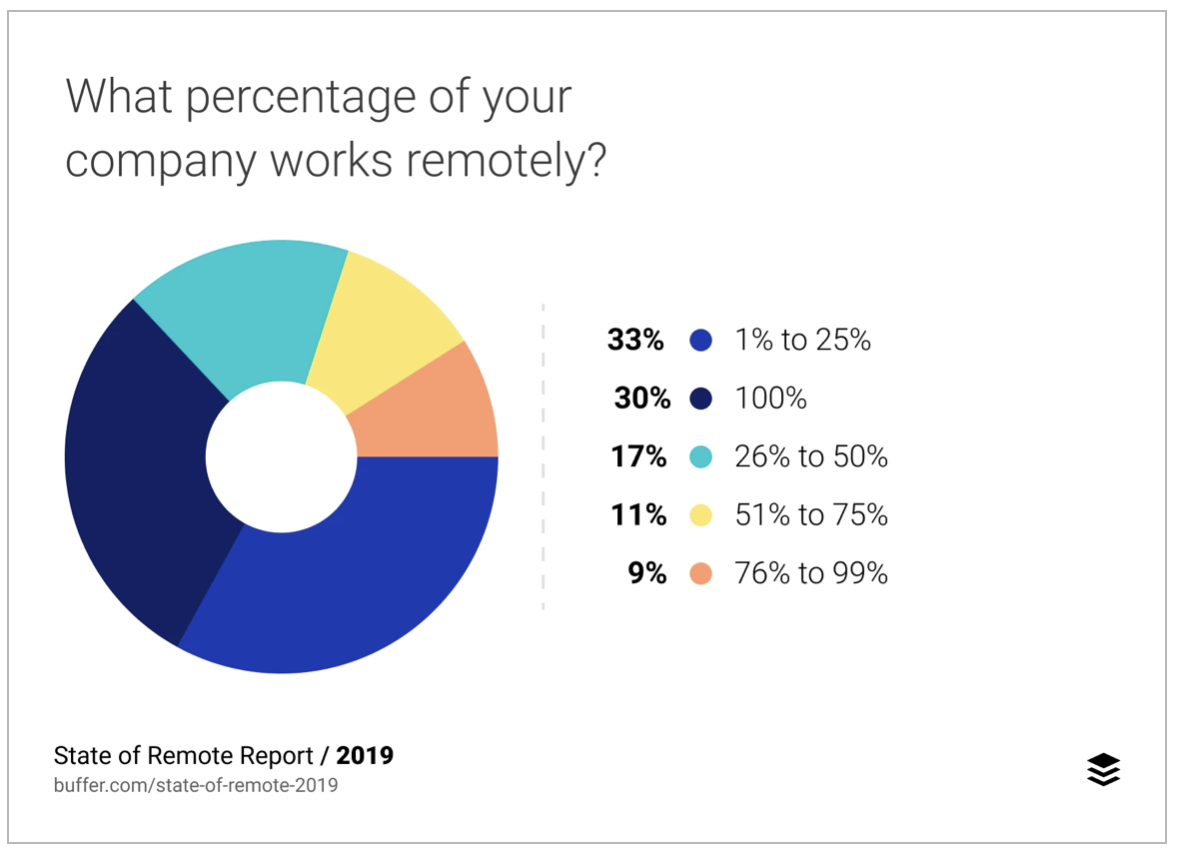
• Before the 2020 start of the pandemic, only 6% of the US employed worked primarily from home and about three-quarters of workers had never worked from home
• In May 2020, over thirty percent of the employed worked from home due to the pandemic. This was a close match for pre-pandemic estimates of ‘the share of work that could be done remotely’, theoretically, in the future
• Most likely to implement remote work were Office-based business and professional occupations, with three-quarters of such employees working from home early in the pandemic
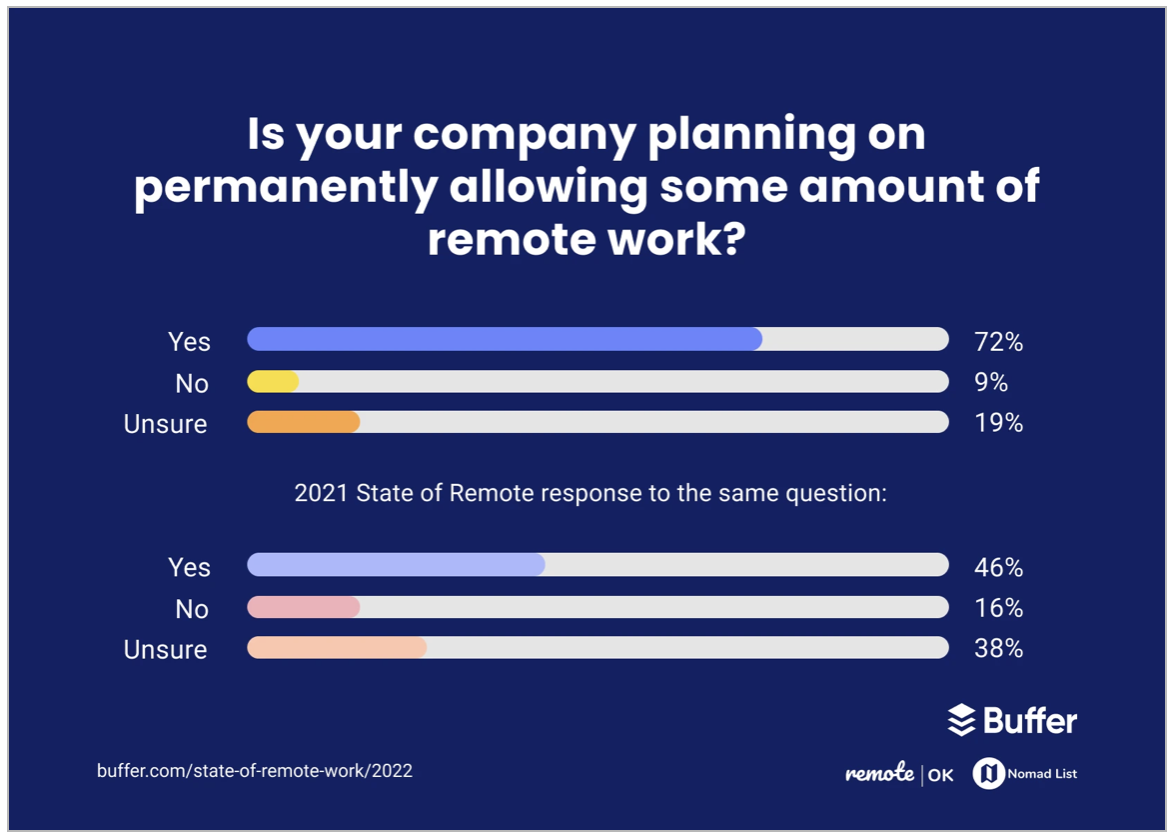
By 2022 there was a distinct shift in work-at-home trends:
• After dealing with the pandemic for two years. most workers and employers reported they expected to permanently implement more flexible remote work opportunities
• Increased remote work will negatively affect businesses that support commuters and business travelers, especially in transportation and leisure and hospitality
• Remote work will be available to the services sector industries and employees, but not to manufacturing line workers
As politicians forced as much as of the workforce to be sent home and kept there for an undetermined duration it was only in 2022 that the newest trends could be considered.
The turmoil of 2020-2022 created stress fractures in the relationship between employees and their managers and teams.
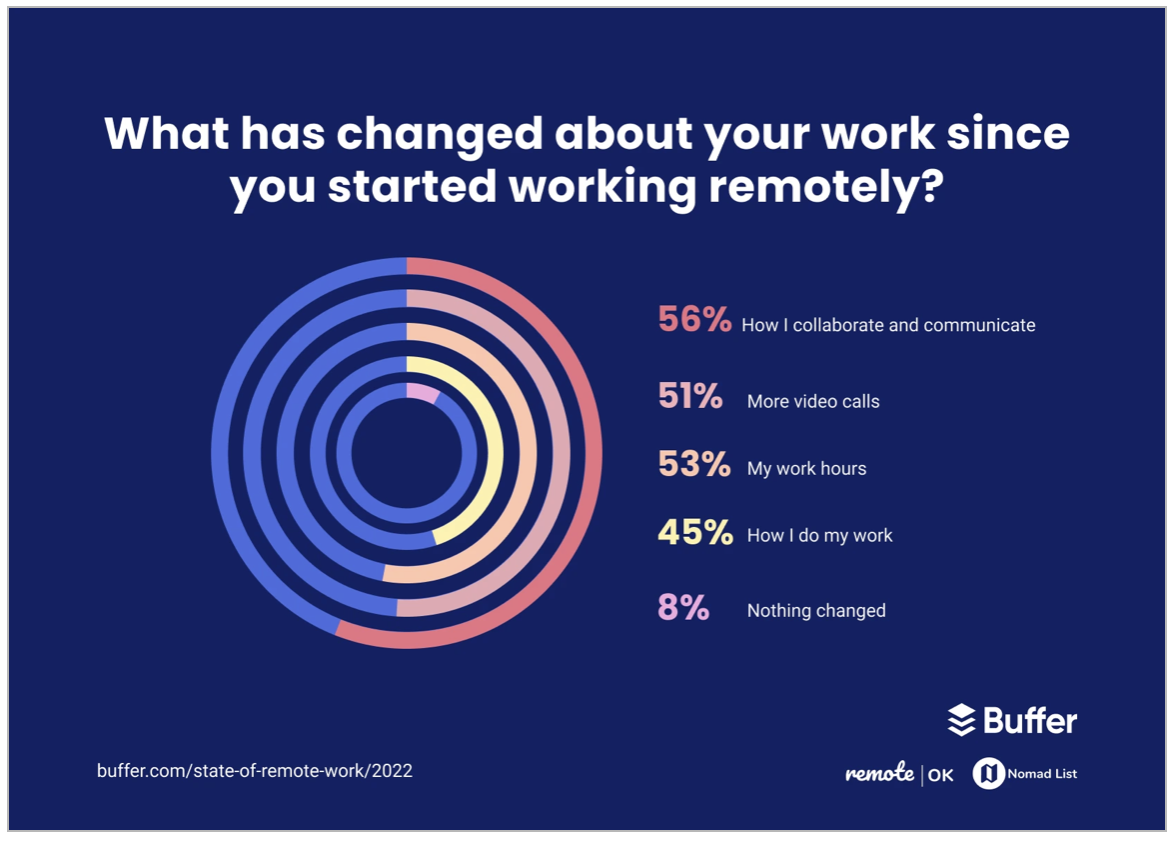
Existing and novel technology enabled continued communication, and the political decisions forced internal adaptation of technology for both communication and for the remote execution of work overall. However, some industries thrived, and others suffered through recurring crisis-based pivoting and redesigning of entire business models.
Use of time changed radically as leaders, managers and employees struggled to make the new models work.
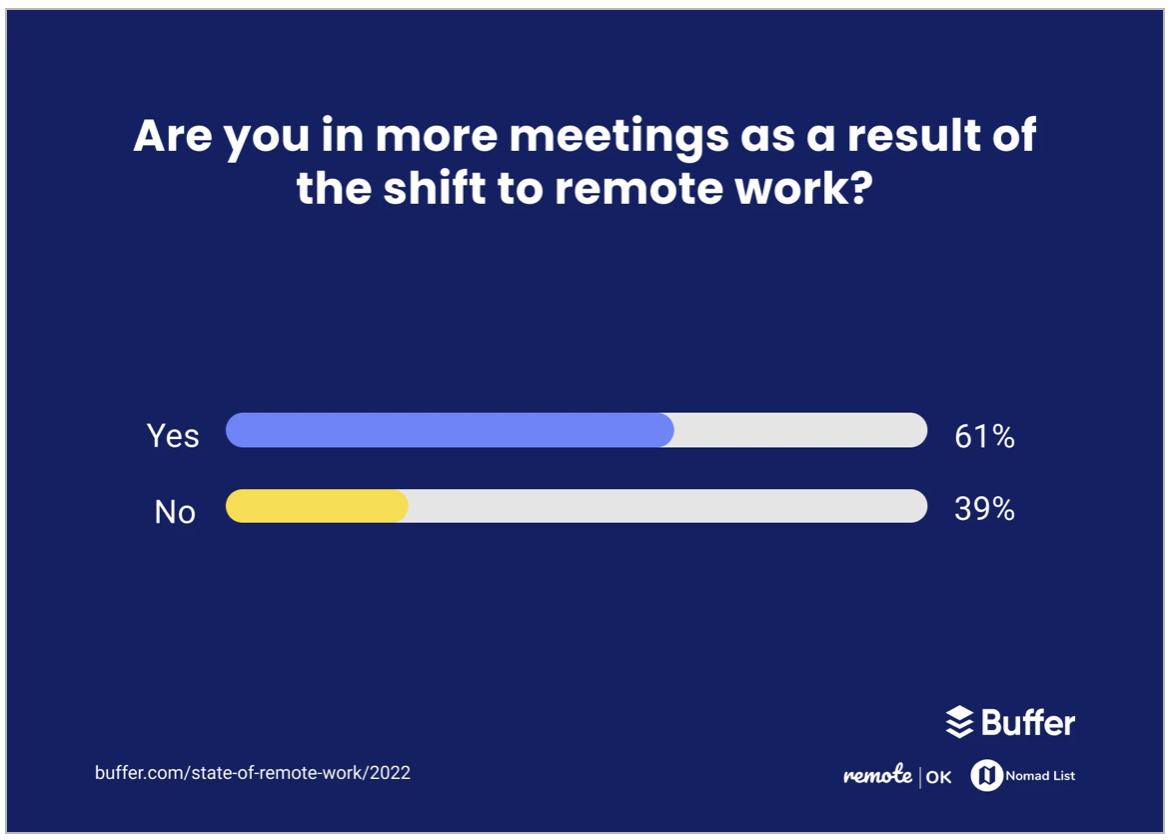
Despite that increase in meeting interactions, research by Gallup and PEW uncovered one of the most important risks to corporations:
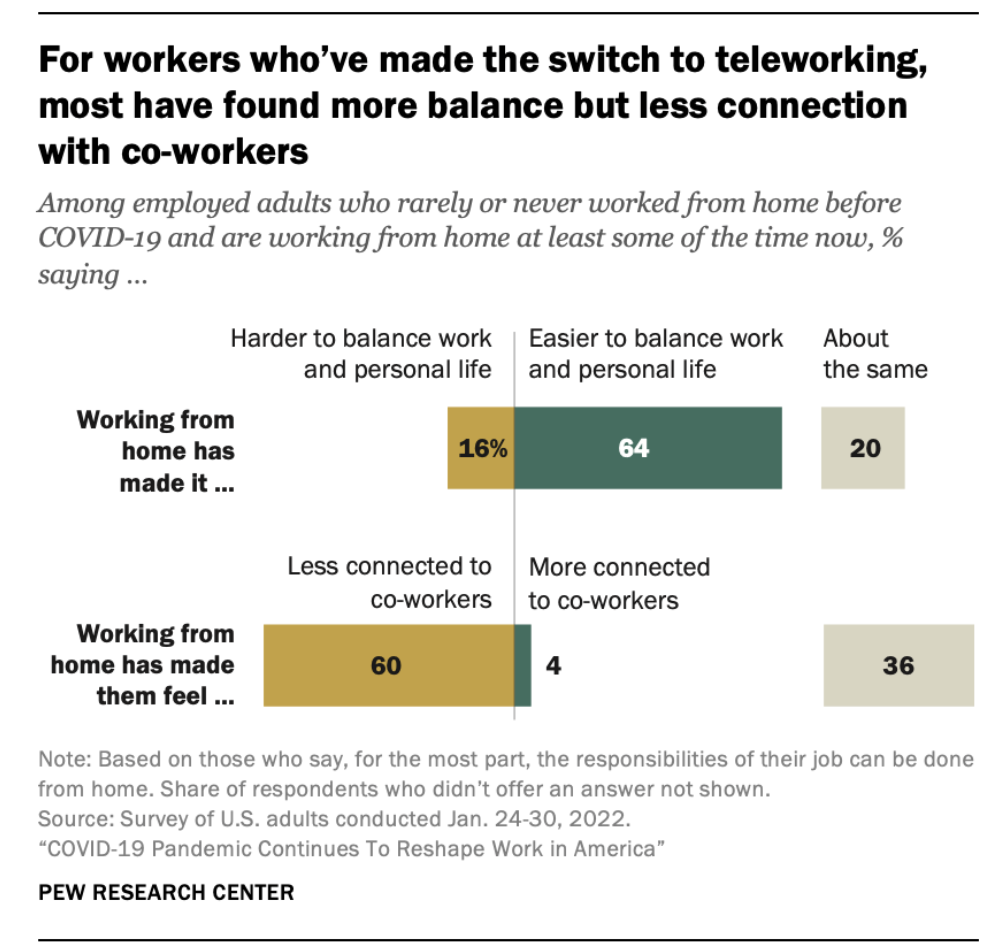
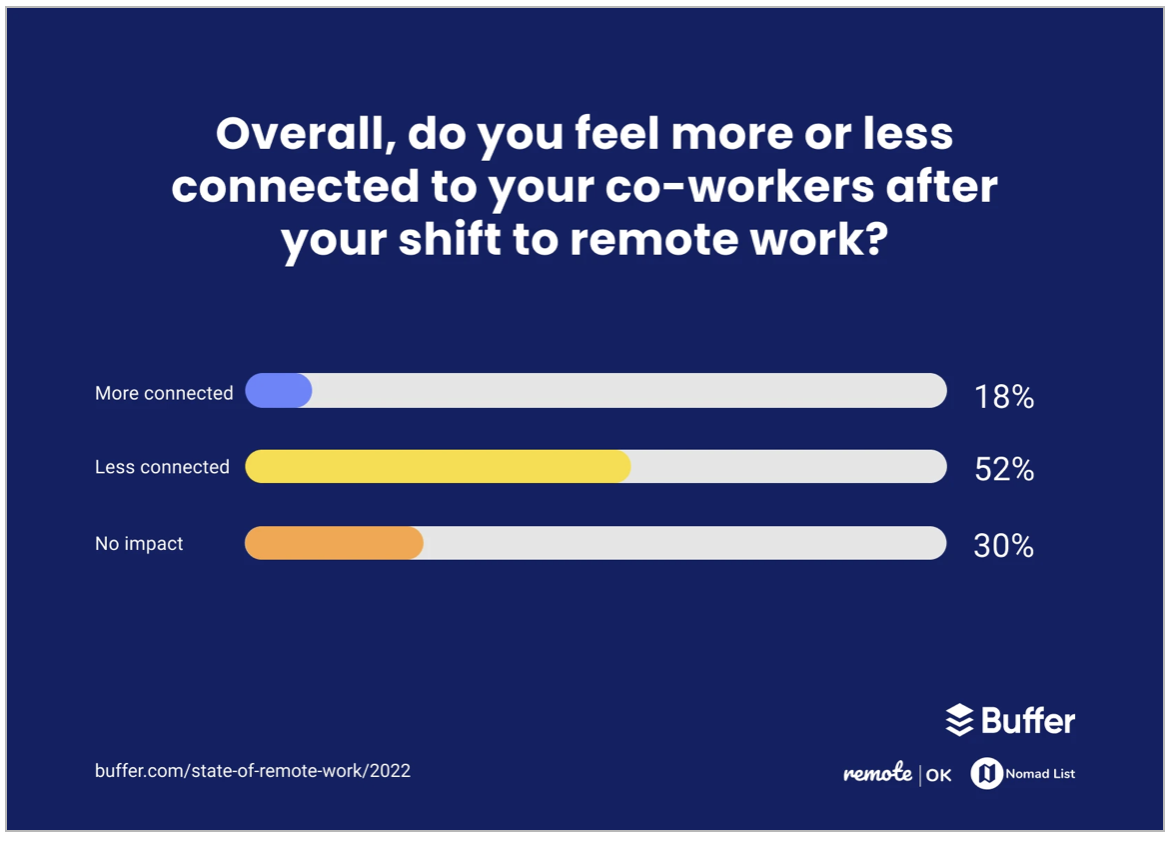
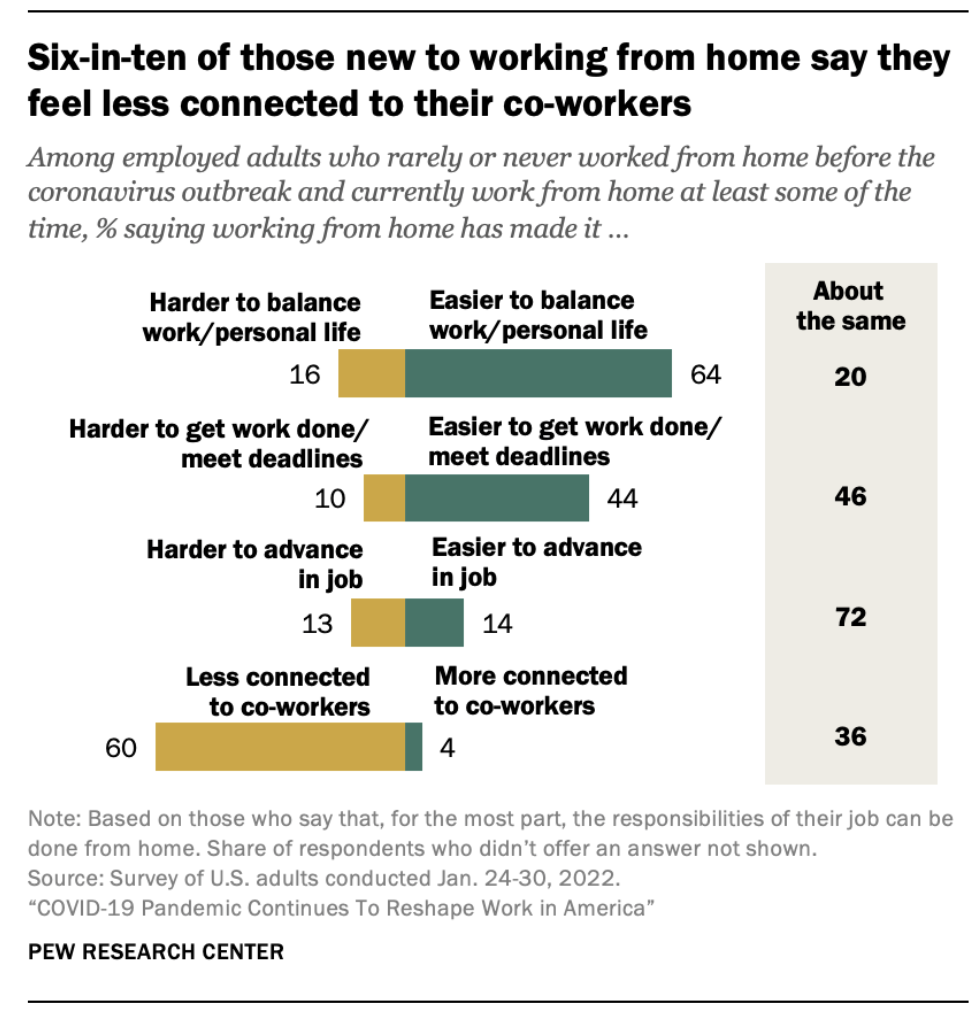
Leaders were immediately challenged to rethink their use of technology in order to maintain influence of employee morale, motivation, stress management and organizational productivity. Simultaneously, employee concerns about health and safety are delaying any permanent decisions about ‘where’ work will take place.
It is self-evident that the work that could be remotely located is found among the professional staff roles rather than line production.
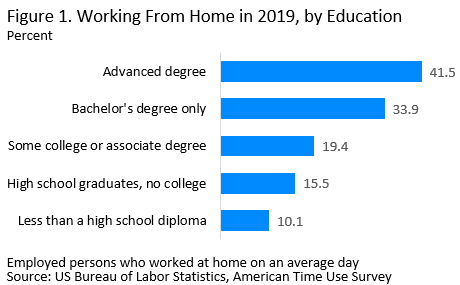
The result – a permanent Hybrid work model of work-from-home combined with on-site work is here to stay and will need to be grappled with by leaders of every generation.

If this were a single generation being affected, it would be enough to contend with. In fact, it is a deeply complex issue due to the forces of demographics.

Exercise 1.4.3 What Have You Experienced?
The External Force of Economics
Had the health and economic shocks of 2020-2022 been resolved in mere weeks, organizations and their leadership might have had a brief reconsideration and minor reset.

Case Study
In the U.S.A. alone 31.3 million people found themselves unable to work because of pandemic-related closures or business cutbacks. 17.1 million (55 percent) were ‘employed’ at the time of the shutdowns, yet found themselves benched at home for 6 months, 12 months and even 24 months with completely disrupted supply-chains, constantly shifting work style expectations, and pendulum swings personal and team productivity.
More was yet to come as Human Resources leaders began to report on an unexpected phenomenon and no one anticipated the magnitude of the effect.
The Great Resignation
The completely unanticipated intersection of political decisions, enabling technology and demographic shifts stirred up uncertainty lasting not weeks, but months and years. It had a cascading effect on supply chains across the globe, on the ‘way of work’ across industries, and on the ratio of staff needed versus job opportunities.

Forbes contributor William Vanderbloemen described it as a tidal-wave trend of unparalleled employee turnover that he called “The Great Covid Job Churn”. He attributed this repositioning to four main causes:
• Many people believed remote work was the “best option” for them because of the significant modifications moving from a brick-and-mortar workplace into their homes required.
• The psychological effects of COVID caused people to reevaluate the value of friends and family. In response, more people than ever desired to rebalance their lives so that they were nearer to their homes and loved ones.
• The epidemic altered the nature and specifications of numerous employment. Many workers quit their occupations in search of positions that more closely resembled their prior positions as a result.
• Before switching to a new company or career, employees initially desired to wait for the “return to normalcy.” They later changed their minds and hastened their departure after realizing the job market had evolved into the world of opportunities.
While their reasons for transitioning out were diverse, even when they did not have their next job lined up, employees by the thousands turned in their farewell notes to their bosses and they left to explore what might be greener pastures.
The results of multiple authoritative surveys are painting the road ahead both financially and culturally for businesses across industries.
In America, 55% of workers want to hunt for new employment. The generation Z generation feels the least valued and compensated. 41% of the workforce worldwide is thinking about leaving their jobs. The global workforce will relocate this year in 46% of cases.
Adults under the age of 30 are much more likely than older adults to have quit their work on their own volition in the previous year: 37% of young adults report doing this, compared to 17% of those between the ages of 30 and 49, 9% of those between the ages of 50 and 64, and 5% of those 65 and over. Income, education, race, and ethnicity all affect experiences differently.
According to a Deloitte survey of working millennials, 84 percent of them had experienced the negative impacts of “poor leadership” at their current position. Unrealistic deadline expectations, a lack of appreciation, and working excessive hours on the weekend were the main factors.
According to Willis Towers Watson’s 2022 Global Benefits Attitudes Survey, 44% of employees became “job hunters.”
The Pew Research Center, a Washington, D.C.-based think tank, polled more than 9,000 people and found that the following were the top reasons given by workers for leaving their jobs:
63% of those who left claimed it was because of the poor compensation and few prospects for promotion.
57% of respondents indicated it was because they felt mistreated and undervalued at work.
In comparison to the entire sample of respondents (33%), 40% of Gen Z and millennial respondents indicated they have quit a job because it didn’t match with their personal life.
Add to this the recent report on organizations’ trimming their ranks. Around the world, biotech companies are reducing their workforce by more than 25%. This is a consistent trend not just in biotech, but across all industries right now.
With the fear of uncertain economic conditions and geopolitical events, companies are using this as a time to reorganize and focus on key programs and products – which has the positive impact of extending the cash runway of the organization.
Combine the forces of technology enabling remote work with the forces of demographics and socio-economic challenges, and corporate leaders have a giant entangled challenge to solve. Now add in the lack of a sense of belonging created by successive years of remote work. Whether we consider long-term employees or newcomers who were on-boarded during the ‘DamnPanic’ years, the net effect has been a loosening of engagement, motivation, and attachment to their employer.
A challenging time for anyone in the role of ‘leader.’
The Costs of Employee Turnover
In the United States SHRM.org estimates organizations paid six to nine months of a worker’s salary to replace them in 2021. For perspective, employee engagement firm Sparkbay broke down the employee replacement costs by job level:
• Entry-level – 30% to 40% of annual salary
• Mid-level – 150% of annual salary
• Highly skilled – up to 400% of annual salary
The cost of employee turnover – or employee churn – is different based on the industry, job role and company.
At the same time Human Resources professionals are aware that the oldest generation of employees are not staying out of loyalty to the mission of the organization, but out of economic necessity.
The Great Resignation has sent shock waves through employers, including economic impacts that forced the immediate bottom-up realignment of teams, pivoting business operations, and rethinking company vision and culture.
The complex people challenge ahead for leaders means the solution to this complex puzzle will take years to address.
What does it mean for Leadership?
What we know about employees, regardless of generation, is that they want to feel they are inspired by and aligned with the vision, mission, and values of their employer, believe their leaders are models they want to follow, have leaders who clear the way so they can do their best work each day, experience being seen for their contribution and have it acknowledged regularly and sincerely. These are not new desired. Forty years of survey data has revealed that people want a timely sincere acknowledgement given face-to-face more than a five-percent increase in their base pay.
Across industries, this is the realm that Leaders influence directly by commission or omission.
It is no longer enough to tout ‘servant leadership.’ Profoundly complex while critical to deal with is the set of considerations: who now needs to be lead and who is doing the leading. Due to the shared presence of four generations in the workplace, the requirements have evolved even further into ‘customized leadership.’

Exercise 1.4.4 What Have You Experienced?
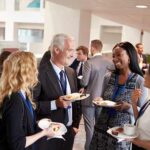
Course Manual 5: Organizational Objectives
One of the key success factors of the QLP is for participants from throughout the organization to synchronize their perspective and leadership objectives with those of their HR Business Partners.
If outcomes and expectations are specific at the outset, the chances of success are dramatically increased. This will require engaging HR Business Partners in the organization who will be the beneficiaries of the results and will be sending participants. We, as Learning Provider, will mutually formulate preliminary Success Criteria, Key Factors for Success, and Performance Metrics early on. These measurements will be refined and solidified in Phase Two: Design & Development.
This will involve formulation of Success Criteria, Key Factors for Success, and Performance Metrics. These need not be set in concrete at this point but must be clarified to the best of the Client’s ability to enable the Learning Provider to Deliver a program with results in alignment with what the Client expects. Knowing what you “want” for outcomes essentially defines what “winning” means in the organization between Client and Learning Provider. Unclear or unstated expectations at this stage are like “time bombs” which will explode later, usually in the middle of a Program, often with unsatisfactory results. Any unrealistic expectations should be addressed at this point.
Excellence in virtually everything is dependent upon quality metrics. Without identifiable measures, management is like sifting fog, and there will be no unanimity of vision, value, methodologies, and results.
These do not have to be set in concrete at this point but must be clarified to the best of the Client’s ability to enable the Learning Provider to deliver in alignment with what the Client expects. Knowing what you “want” for outcomes essentially defines what “winning” means in the organization between Client and Learning Provider. Unclear or unstated expectations at this stage are like “time bombs” which will explode later, usually in the middle of a Program, often with unsatisfactory results. Any unrealistic expectations should be addressed at this point.
Alongside Metrics must be Diagnostics which can be used to ensure the organization is functioning well and any emerging difficulties can be addressed before they create a crisis. The Program addresses these core Metrics Diagnostics of Health, which can be adapted to any organization’s unique culture and industry. Any annual review should include both these elements.
In many companies, before rolling out the Quantum Leadership Program, it is advisable to do a pre-program diagnostic base-line evaluation of how the organization is functioning. Then the feedback of the analysis can be used to engage different levels of the organization in analyzing problems, opportunities, and priorities for capability building. This provides two advantages: 1) it engages employees early on, and 2) creates a base-line standard against which a Program Review can be benchmarked.
As a participant in the QLP you may have little to no familiarity with the organization’s discussions, considerations and objectives. In order to develop realistic personal goals and project participation three steps will take place.
Step 1 – Participant Familiarization with the Issues & Terms – Metrics including, KPIs, KPAs, Leading and Lagging Indicators
Step 2 – HR Business Partner Education of the Participants – Detailed in the upcoming 90-days Module “Benchmarking & Setting KPIs”
Step 3 – Collaborative Goal setting covering Organizational results and QLP Participant skills building results

As QLP focuses on leadership development with the goal of increasing employee recruitment, engagement and retention, let’s take a look at a set of relevant HR metrics which may match those used in your organization.
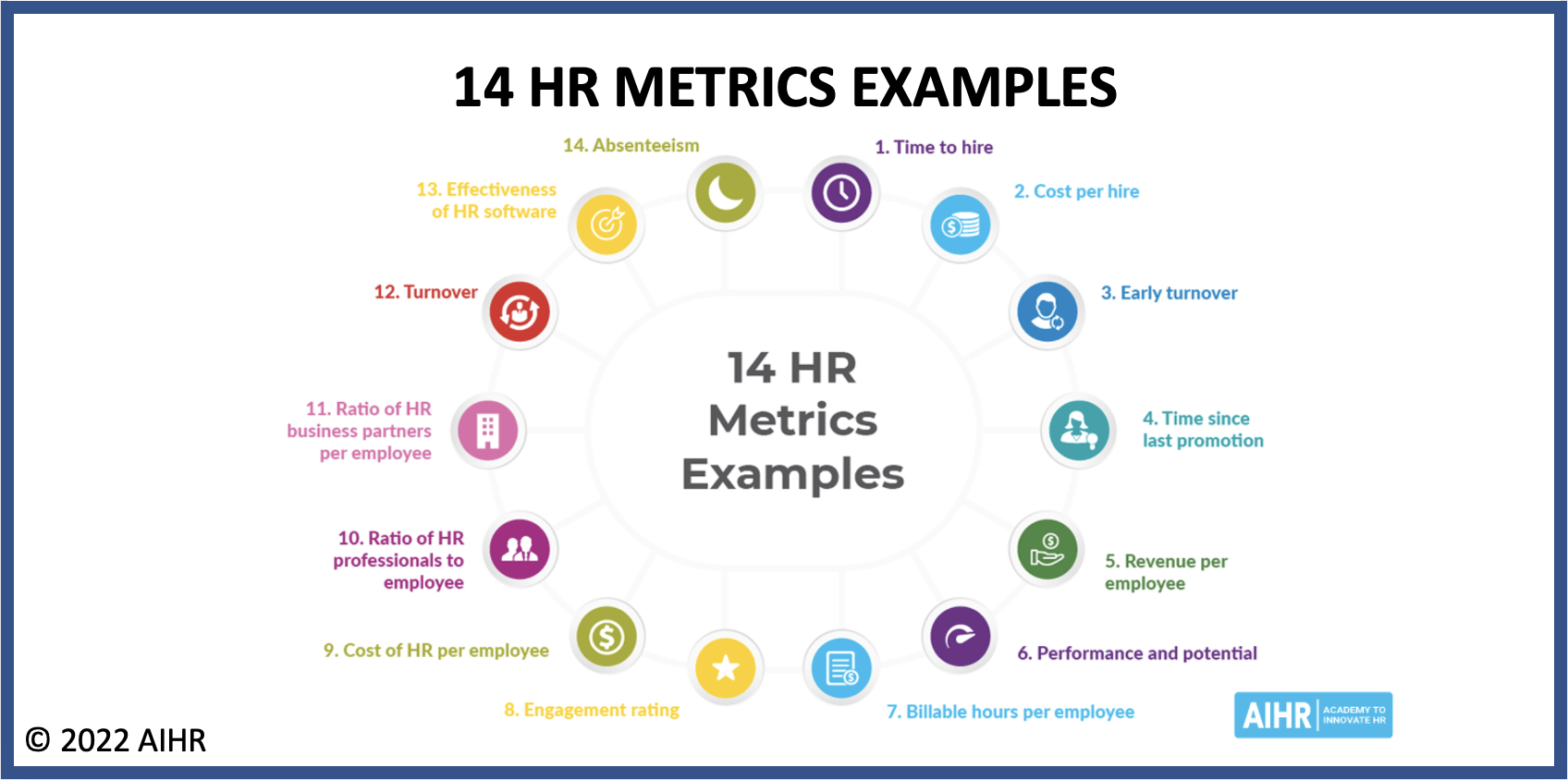
Erik van Vulpen of AIHR compiled a series of HR Analytics Case Studies that illustrated the business value of using specific KPIs (Key Performance Indicators) :

CASE STUDY: Saving money by foreseeing quitting
The Wall Street Journal published a story on March 13, 2015, with the title “The Algorithm That Tells the Boss Who Might Quit.” The paper investigated how Credit Suisse was able to foresee potential business departures. It was a pioneering instance of the now widely used employee attrition analytics.
Credit Suisse analysts were able to forecast not just who might resign but also the reasons behind those resignations. Managers received this information in an anonymous manner so they could improve staff retention and lower turnover risk factors.
Additionally, specialized managers received training on how to keep the top-performing workers that posed a high flight risk. This program saved Credit Suisse about $70,000,000 annually in total.

CASE STUDY: Linking participation to sales
The Harvard Business Review just included a fantastic case study on people analytics in HR. The authors of an article titled Competing on Talent Analytics describe their findings in various significant US corporations.
The link between engagement and financial performance was explicitly studied. The golden grail of HR is frequently considered as engagement, yet it’s difficult to quantify its effects.
Some firms, according to the authors, “can exactly determine the value of a 0.1% improvement in employee engagement in a single store.” They use Best Buy as an example, where a 0.1% improvement in involvement translates in an increase in annual operating income per store of almost $100,000.
Because of the importance of this connection, Best Buy decided to conduct employee engagement surveys quarterly rather than annually.

CASE STUDY: Experian turnover
Experian experienced a problem with employee attrition. The business was dealing with turnover rates that were 3-4% greater than they desired. They were able to estimate flight risk by using a predictive model with 200 attributes, such as team size and structure, supervisor performance, and commuting time.
Teams of more than 10 to 12 persons are one example of a risk factor. The analytics team also discovered factors that increased immediate flight risk when someone relocated farther from the office.
A number of regions saw the model’s rollout, each with modest variations in the forecasting algorithm. With the use of sound management techniques and these insights, attrition is said to have decreased by 2-3% over the last 18 months, saving between $8,000,000 and $10,000,000.

CASE STUDY: IBM flight risk
Similar research was conducted at IBM, where there was a lot of turnover in several key positions. The workforce analytics team developed an algorithm based on sources such as recruiting data, tenure, promotion history, performance, role, salary, geography, job role, and more using IBM’s Watson machine learning capabilities.
The business also featured employee satisfaction, as determined by Social Pulse. The idea behind this was that when workers are considering leaving, their social media involvement may decrease.
Over a four-year period, the investment generated $300,000,000, and crucial role churn was decreased by 25%. In addition to productivity increasing, the report states that recruitment costs have decreased.

CASE STUDY: Maintaining key personnel at Nielsen
In 2015, Nielsen developed a comparable forecasting model. Only 20 factors, including age, gender, tenure, and manager rating, were included in the first predictive model. More variables were included as time went on. This exercise revealed many things, one of which was that the first year was crucial. It was verified with first-year employees that they have their crucial contact points. For instance, if the employee’s initial check-in with their boss was delayed after hiring, a message would be sent. This was an established requirement for first-year retention.
Promotions compelled people to stay, but lateral moves were also a powerful inducement to do so.
The fact that the corporation was able to relocate 40% of the workforce to a new position by approaching the individuals with the highest flight risk over the following six months was a noteworthy outcome. An associate’s likelihood of remaining with the company increased by 48% as a result of making these lateral transfers.

CASE STUDY: Reaching the ideal staffing level
Finding the ideal staffing numbers was the subject of another intriguing HR analytics case study. A sizable mining corporation in Zimbabwe was worried about losing money as a result of departments that were either over or understaffed.
The specialists’ analysis of under and overstaffing employed an intriguing strategy. They compared the business activity of the same business unit, measured across 17 quarters, to the number of employees of the same business unit.
A substantial 70.34% association was found between the number of employees and business activity. This indicates that the number of employees might account for 70.34% of the business activity. The team was able to determine which departments were overstaffed and understaffed by charting these two dimensions. Overstaffed personnel were laid off. It turned out that the breakeven point for layoff expenses was only two months; by the third month, the business was actually profitable. Employees who were laid off might also be hired into comparable positions in departments that were understaffed.

CASE STUDY: Sick Days at E.ON
E.ON also used people analytics to address employee absence. In this German energy company with 43,000+ employees, absenteeism has beyond threshold.
The analytics team created 55 hypotheses, validated 11 of them, tested 21 of them.
One of the examples given in the paper was the finding that returning unused vacation time did not raise absenteeism. Lack of a long holiday or taking a day or two off every now and then over the year did cause a rise in absenteeism. Managers were informed of this knowledge in order to enhance the procedures for approving holidays.

CASE STUDY: Clarks engagement
The shoe company, Clarks, investigated the connection between engagement and financial results. Is there any relationship at all? was their initial inquiry.
The organization investigated the benefits of engagement and whether those benefits would decrease with increasing levels because it had already recorded higher-than-average levels of engagement.
The team collaborated with statisticians who oversaw the distribution planning system for the business. The analysis used 450 different business performance data points in total.
The report stated that the findings demonstrated that there was a relationship. Engagement boosts productivity in the workplace. In the case of Clarks, a 1% (percentage point) increase in engagement resulted in a 0.4% (percentage point) increase in company performance.
The team also conducted a quantitative and qualitative analysis of the traits of the top 100 performing stores in order to draw conclusions from this and make it more applicable. They discovered that the store had an ideal team size and that a store manager’s tenure was a highly important predictor of performance. This implied that poor performance would result from often changing store managers.
The group was able to develop a model for high-performing stores using these insights. They also produced an engagement toolset that managers may utilize to boost productivity.
The Chief People Officer of the organization asserts that the outcomes speak for themselves. “Year after year, the UK retail firm consistently outperformed both internal goals and external benchmarks. Also, our market share has increased.”

CASE STUDY: Relationship at Shell
Similar findings were made at Shell, where enhanced safety procedures were used to relate involvement to higher commercial performance.
An important industry safety requirement known as “recordable case frequency” decreased 4% for every 1% increase in employee engagement. Business performance was directly correlated with safety performance.

CASE STUDY: HR influencing retail performance
Another excellent case study using people analytics involved a sizable restaurant business that was experiencing financial difficulties. The management group couldn’t figure out why. Although they had some information, they had trouble putting good policies into place.
A group of consultants was tasked with conducting research and offering analysis based on data.
The team chose to conduct their own poll in order to measure it because there wasn’t enough reliable data. This case study was unique because they didn’t employ a typical engagement survey. Instead, they started by examining the pertinent business outcomes. They identified the following three main results:
• Number of clients
• Consumer contentment
• Retaining personnel
If these three measures improved, business performance would also improve.
The business subsequently conducted a business-focused engagement survey in which they:
Associated employee results with actual business results
• Give the elements with the biggest effects on business results top priority.
• Show how the improvement of these elements has affected company.
• Front-line managers should concentrate on the elements that had the biggest impact.
The team was able to quickly identify the drivers that had the most impact on business success and those that front-line managers should pay particular attention to by mapping these elements on their own scores and the impact they have on the business outcomes.
This HR analytics case study demonstrates which human resources aspects to emphasize to have a greater influence on company.

The blue square contains the six elements that would be given the most consideration. Line-managers would generate the greatest profit by concentrating on these 6 elements.
The six factors that would receive the most attention are in the blue square. By focusing on these 6 factors, line-managers would create the largest return.
Restaurant managers who had an average score of 4 or higher on the six key survey drivers were likely to see
a 16 % increase in customer satisfaction,
18,000 more customers a year
10% less staff turnover

CASE STUDY: Benefits and compensation at Clarks
In a second case study on people analytics, Clarks optimized employee rewards through the use of salary and benefits analyses.
By asking which benefits employees may be willing to sell off, the report claims, “it developed a far more granular understanding of what people genuinely valued, and [we] altered the package appropriately.”
Giving someone a small sum of money to use for their own personal growth could raise satisfaction by up to 15%. Additionally, workers preferred the option of selling their vacation time, which ended up saving the business money.

Exercise 1.5.1 Defining Success
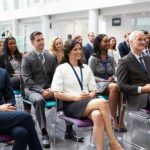
Course Manual 6: Setting Conditions
There are two arenas of change and transformation that leaders can influence: Personal and Organizational. While a key outcome of excellent leaders is the shaping of the organization’s culture and performance, the root activity is leadership that elevates their personal/professional maturing and resulting of the employees of the company.
Participants in the QLP are a rare breed. Think of it as being a combination risk taker and visionary. This makes them a valuable asset to any organization.
Transformational change is rare because the vast majority of people (99% of all adults and 92% of executives) possess an internal operating system that is wired for self-protection.
When someone is wired for self-protection, invitations to change or let go of what they know do not feel like an opportunity to advance or elevate. Instead, it feels dangerous. And, when something feels dangerous, each of us will double down on our self-protection and hold tighter to what we know. Since organizations are collective of people, ‘organizations’ are equally resistant to change.
There are two roles leaders play for creating transformational change, both of which involve creating the right environment or conditions for change to occur:
Role 1 – Create an environment where people don’t feel like they need to be self-protective (i.e., create an environment of psychological safety).
Role 2 – Upgrading employees’ internal operating system so that they are not wired for self-protective, but wired for organization-advancing. (The process of doing this is called vertical development)
Ryan Gottfredsdon describes three adult development stages:
Mind 1.0 – We are “good soldiers” programmed to fulfill the needs of safety, comfort, and belonging.
Mind 2.0 – We are “progress makers” programmed to fulfill the needs of standing out, advancing, and getting ahead (we are willing to be unsafe, uncomfortable, and not belong in order to stand out, advance, and get ahead).
Mind 3.0 – We are “value creators” programmed to fulfill the needs of contributing, elevating, and lifting others (we are willing to be unsafe and not stand out in order to contribute, elevate, and lift others).
As he points out, it’s important to understand the percentage breakdown of adults and executives and where they usually focus.


Exercise 1.6.1 Where Is Your Mind Focus

CASE STUDY: Fortune 50 Top Executive Leaders
Ryan Gottfredsdon conducted workshops for 100 of a Fortune 50 organization’s top 500 leaders in which a key discussion was the link between mindsets and agility.
Early on in the first workshop, he quickly noted two things:
Despite spending more than 1.5 years and more than 3 years concentrating on attitudes and mindset improvement, they didn’t feel that their organization was any more agile than in previous years. They felt they lacked the personal ability to be agile, which annoyed them.
What hinders quickness?
Therefore,he questioned them: “What are your organization’s existing practices, or lack thereof, that are hindering it from becoming more agile, as well as you?”
They provided the following responses:
Top-down, micromanaging leadership that was more focused on “hitting statistics” in the short term than acting in the long term’s best interests
Together, they concluded after hearing these responses that the “command and control” leadership culture was the main reason they weren’t more nimble.
Why do leaders use “command and control”?
Probing more into their experience he asked: “Why does your organization have a ‘command and control’ leadership culture?
The simple but nuanced response was FEAR.
They uncovered that “command and control” leadership was a strategy used by leaders out of fear of:
• Looking bad
• Not “hitting numbers”
• Ambiguity/not being in control
• Not getting ahead/getting passed up
These concerns arose as a result of the organization’s and its culture’s social and, maybe, institutional incentives for its leaders to appear good, get results, maintain control, and advance.
Two Lessons: What Can We Learn From This?
Lesson One
What was the relationship between these fears?
They are all related to defending and furthering one’s own interests.
What kind of leadership will people naturally use if they want to make sure they appear good, hit targets, have control, and advance?
You guessed it. Leadership that is “command and control”.
Lesson Two
No amount of agility or even attitude training will increase agility unless the organization adjusts its culture to lessen the leaders’ anxieties.
To even consider acting in organization-advance mode, the leaders are too heavily enmeshed in self-protection mode.
Low emotional intelligence, a self-protective culture, low engagement, a high turnover rate, and poor agility are the end results.
Overarching Conclusion
Organization leadership can debate and offer trainings on mindsets, change, and agility until they are winning awards for having those programs. However, meaningful change won’t occur until the members of the organization identify and resolve the leaders’ anxieties of self-protection.
Why the Fortune 50 Organization’s Focus on Mindsets Failed?
members of
Ryan proposes that concentrating on attitudes offers the most direct and effective path forward.
He says this while acknowledging that the Fortune 50 business in the aforementioned case study has been concentrating on mindsets. Their narrow focus on mindsets was due to two factors:
Those leaders avoided having underlying and mindset-fueled anxieties and insecurities come out in their discussions and trainings about mindsets. They simply expected that people would alter their thoughts after receiving mindset training.
Furthermore, they weren’t making any of the attitude training mandatory for their senior executives. Keep in mind that the group Ryan dealt with was comprised of the organization’s top 500 leaders; the top 50 leaders were not included. Therefore, the company’s top executives were essentially saying: “You need the training; we don’t!” The “command and control” leadership style, which was trickling throughout the business, was being led by these senior executives.

Exercise 1.6.2 Command & Controls

CASE STUDY: American Express Creating Conditions For Employee Engagement
Amex’s Travel Financial Capture (TFC) group’s leadership team saw the need for fundamental change throughout the group. Fragmented business processes were creating errors, losses and re-work; groups were not working together well; the workforce reported feeling disconnected from the business strategy and customer surveys showed they were highly dissatisfied. Employee engagement was low and at the same time, employees were undergoing new information technology initiatives, they reported feeling they were getting “beaten up” by ongoing reengineering, outsourcing, and resource shortages.
Management saw that this critical group was not prepared for the tremendous challenges it was facing. Something needed to be done quickly, and a top-down change initiative clearly wasn’t the answer.
The Project:
The leadership team wanted to turn morale around and create a flexible, smooth-running business while accelerating the change process and building commitment to the organization. Their consultants proposed an organization redesign process that would focus on employee engagement throughout the entire organization, gain commitment and rekindle the spirit of its workforce, and provide a platform for ongoing team building. The consultants led the team through a project that rebuilt the organizational design and structure based on the team’s own definitions of what was required. Going through a comprehensive process facilitated by the consultants meant that no details or stakeholder-identified consequences were left unnoticed or unresolved.
The Result: Employees Become Leaders
TFC’s new design eliminated functional silos and highlighted the interdependence of the various groups. It increased collective and individual morale and employee investment while reducing defensiveness and increasing receptivity to change. Unlike many such initiatives, the process the consultants employed focused not just on deficiencies but also on positive performance and what had been successful, enabling TFC to respond quickly to their fast-changing business environment.
The most powerful leaders are those who shift to an external focus – how to influence the individuals in the organization in order to create a sustainable foundation for the future.
When leaders are pushing the envelope of creativity and innovation, of change and transformation, problems and failures are going to happen. And leaders need to be okay with that.
The skills required in 2030 will be Originality, Learning Strategies, Active Learning, Fluency of Ideas, Judgement & Decision Making.
Helen Bevans “We don’t need people who ‘buy in.’ We need investors!” [This idea will be a component of the next manual]
These considerations are critical in order to establish effective Collaborative Evaluations, draw Gap Analysis conclusions, and Organize Action among the QLP participants.

Exercise 1.6.3 – Setting Conditions
Employee engagement is essential in the workplace. A series of studies by multiple research organizations found that employee engagement decreased turnover by 14.9% and increased productivity by 69% in workplaces. BKD had used a consultant’s platform to promote continuous coaching to employees as well as build “an inclusive feedback culture for more frequent and meaningful conversations.”
Internal communications play a key role in “ensuring a good mutual understanding and cooperation within the workforce.” According to a survey by Harris Poll, over 70% of employees were engaged when their organization provided clear internal communication regarding information of value.

CASE STUDY Employee Engagement Best Practice: Employees’ Ideas
The program should be developed around employees’ ideas. This can be done through employee suggestion programs and by replacing the old suggestion box.
Take a moment to look at these Employee Engagement Charts
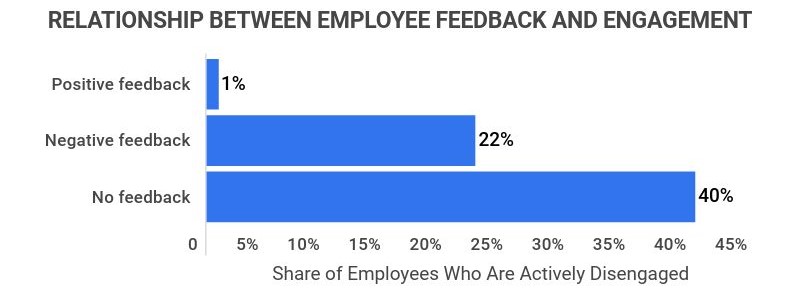
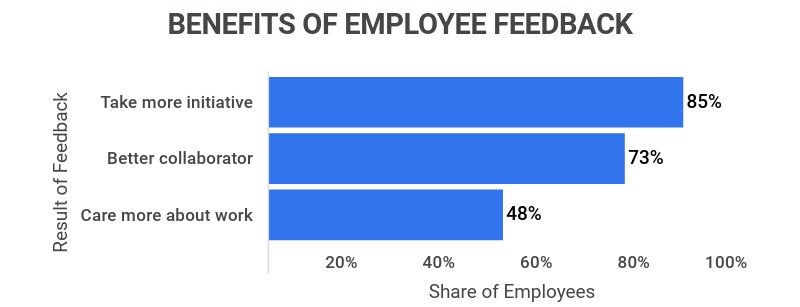
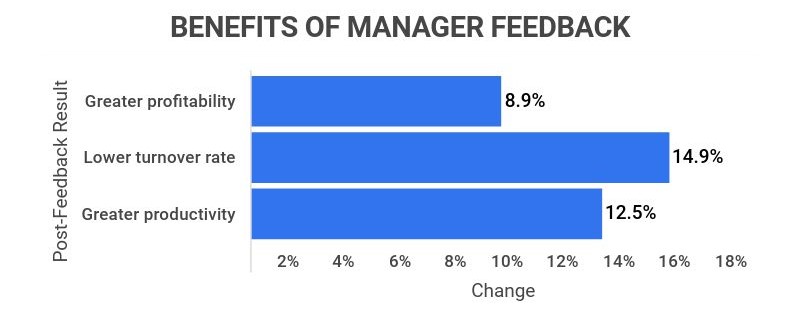

Engagement Charts>>
Similar to customer feedback programs, employee suggestion programs (ESP) invites employees to voice their concerns and share ideas for solutions. While many companies already offer ESPs, many of them don’t utilize technology to ensure that it’s as effective as possible. And although a wooden suggestion box placed on the wall is a good start, suggestions aren’t always checked regularly; this risks resentment and confusion. Switching to a digital solution can increase accountability and improve the process for listening to employees’ suggestions.
According to a study conducted by the Employee Involvement Association, organizations can expect to save almost $350 annually per employee through the implementation of an employee suggestion system.
According to Charles Martin, the author of Employee Suggestion Systems: Boosting Productivity and Profits, “companies that set up effective “suggestion systems are finding that employees have great ideas that can lower costs, increase revenues, improve efficiency, or produce greater quality.”

CASE STUDY Employee Engagement Best Practice: Internal Communications
The company realized they should ensure that good internal comms were part of their employee engagement solution as they play a key role in “ensuring a good mutual understanding and cooperation within the workforce.”
According to a survey by Harris Poll, over 70% of employees were engaged when their organization provided clear internal communication regarding information of value.
According to Forbes, “when employees are kept in the loop of what’s happening internally, their loyalty and satisfaction increase ultimately improving the annual revenue and reputation of the company.”
Gallup found that companies with a highly engaged workforce outperform their competitors by 147%.
The Holmes Report revealed that companies with strong internal comm strategies gave shareholders 47% higher returns.
Trade Press Services posted an article regarding the importance of using internal comms to enhance business growth. They revealed that “85% of employees said they’re most motivated when management offers regular updates on company news.”
An example of good internal communications leading to positive outcomes can be seen in the case of Thomson Reuters. When Thomson Reuters improved its internal comms, they were able to address their problem regarding how their employees are not placing enough importance on innovation. After implementing good internal comms, Thomson Reuters saw “an upturn in the number of requested innovation projects.”

CASE STUDY Employee Engagement: Microsoft
Microsoft is a multinational tech company that sells computer hardware, software, and related services; they are an example of a company that’s successfully developed an employee engagement program for their employees. Microsoft had invested heavily in internal comms and the improvement of employee experience in various departments.
For example, Microsoft had teamed up with Centrical to make their contact center service agents be more productive, responsible, and engaged. Microsoft had implemented Centrical in its call centers for its “ability to fuel engagement through advanced gamification, while combining learning and performance data into one platform.”
The program would reward call center agents intrinsically as well as give them personalized goals. Using Centrical, agents are given a visual reminder showing them how every activity they do matters and would get them closer towards their goals. Microsoft would offer employee points and badges to those who exhibit positive behaviors such as adherence to schedule.
Soon after this program was implemented, 78% of Microsoft’s call center agents expressed that they felt more empowered and ready to do better at their work, and absenteeism dropped by 12% overall.
Microsoft used its own products (e.g. Microsoft 365) in order to improve communications and employee engagement.
The programs had resulted in more interconnected and personalized employee experiences; it has also enabled Microsoft employees to innovate, create, and collaborate seamlessly among the teams that they belong to and work with.
Eighty-five percent of Microsoft employees say that they are proud to be part of the company.

CASE STUDY Employee Engagement: BKD + Quantum Workplace
BKD is in the professional/scientific/tech services industry, and they are one of the largest U.S. advisory and accounting firms; they have between 2,501 to 5,000 employees.
According to Julie Cummings, the managing director and chief human resources officer (HRO) at BKD, they built their programs by listening to the themes and feedback gathered through their annual engagement survey as well as other feedback tools, and then generating action plans to support improvement.” She also added that the company had identified a direct link between engagement and employee performance.
BKD utilized Quantum Workplace to provide a solution for performance management transformation. BKD knew that it was imperative to implement an effective solution that would drive frequent and meaningful coaching conversations. By implementing this solution, BKD could “drive employee engagement, increase performance, and help with employees’ goal achievement.”
Through their employee engagement survey data, BKD was able to identify what would most efficiently engage employees. And based on the findings, BKD implemented “one-on-one meetings”. Within this tool, templates were created to efficiently “drive quarterly conversations between career coaches and employees, encouraging regular touchpoints and more meaningful discussion about goals and development.” BKD also used the same approach with feedback by providing employees with a tool they could use to request and give real-time feedback to ensure that employees were on the right path for success.
Through this tool, “employees could gather input from different perspectives, including from a 360° view, to provide them with a deeper self-awareness, better relationships, and professional development acceleration.”
Key Performance Successes:
Eighty-six percent of employees are “proud to work with BKD.
Seventy-six percent of employees believe that “BKD’s people-first culture drives their overall success.

Case Study: Molson Coors Beverage Company
Molson Coors operates as a brewing company that brews and produces beer. Molson Coors is an example of a company that has successfully executed an engagement plan amongst its employees.
Their employee engagement initiatives have produced engaged employees that were five times less likely than non-engaged employees “to have a safety incident and seven times less likely to have a lost-time safety incident.”
Engagement had also improved sales performance at Molson Coors. And as a result of the initiatives, the company had saved over $1.7 million in just one year.
Research Strategy
In order to determine some of the best practices around developing employee engagement programs, we looked at blogs, research papers, and news articles and then cross-referenced them with similar resources. We then looked at surveys, polls, and studies in order to find quantitative and qualitative data that can be used in the report as evidence that the best practices included in the report had yielded positive results. We then synthesized the information that we have compiled throughout the course of the research to produce this research report.

Exercise 1.6.4 – Setting Conditions

Exercise 1.6.5 – Setting Conditions
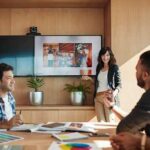
Course Manual 7: Collaborative Evaluation
The process of Collaborative Evaluation systematically invites and engages stakeholders in project planning and implementation and in the evaluation stage.
In the QLP, one set of stakeholders are the program leader participants. A second set is the employees those leaders are influencing. A third set is the HR Business Partners and senior management team members who are tracking the overall employee morale, productivity and retention trends.
These three sets, or cohorts, are ‘investors’ of economic resources and time and attention in the individual and organizational mastering and application of Quantum Leadership.
For each of these 3 cohorts, program participants will design a collaborative evaluation process that will keep the results monitored tangible.
Collaborative Evaluation begins with discussions among the cohort’s members as to the 2-3 metrics by which they will measure the progress and results of the QLP.
These 6-9 resulting metrics will be incorporated into tools and processes learned and put into practice during the QLP.
Finally, they will be tracked and reported through an evaluation step in which 3rd party feedback is obtained from peers in the QLP workshops, and in scheduled meetings with the other stakeholders.
A crucial question is “Is our initiative working?,” especially in this time of increased accountability. When individual leaders and department leads want to know if their initiatives are producing the desired results and why this is the case, this collaborative project evaluation technique is a very helpful way to provide an answer. In the collaborative project evaluation methodology, the HR Business Partner and the client’s QLP team collaborate to choose the assessment’s research topics. They keep cooperating to make sure that the context is understood that various stakeholder viewpoints are taken into account, and that the content and tone of the data gathering instruments are acceptable. This strategy generates information that might help program implementation and give formative information that supports project improvement and offer summary information on the effectiveness of the project.
Collaborative evaluation is an iterative evaluation model that enables project staff to create continuous project improvements.
Specific benefits of the model include

The objective is to create a flexible and adaptive evaluation design that can be customized to reflect the intricacies of the project over time, take into account learning from the evaluation as well as changes in project execution over time. The outcomes include:
• Enhanced results dependability
• Increased support from stakeholders (of both the data collection process and the evaluation findings)
• enabling the project team to continue tracking their progress toward program objectives after the evaluation has concluded
• creation of an inquiry-based culture (among project team members, and other stakeholders)
This assessment method actively involves project stakeholders in the evaluation procedure. Stakeholder participation in assessments improves their understanding and frequently boosts the evaluation’s adaptability over the course of the 24-month program. Stronger assessment designs, better data collection and analysis, and outcomes that stakeholders can understand, and support are frequently the outcomes. Those in charge of planning and organizing long-term processes can benefit from evaluation that takes into account a variety of criteria and is conducted at various times in time. Participant surveys can be a useful tool for evaluating the performance of collaborative processes in terms of both the process and the final product.
The key elements of successful collaboration are generally acknowledged in the literature. These are presented in a variety of ways, as one might expect, but they generally follow the Key Features of fruitful cooperation.
Characteristic 12: Research has demonstrated that, above all, a “collaborative attitude” is necessary (Aagaard 2012; O’Leary 2014), and the selection of “collaboration champions” can play a significant influence in this regard (Crosby and Bryson 2010).
Characteristic 2: Despite having the most formal authority (power) and resources, public sector partners do not always have to take the lead in collaborative ventures (Bowden and Ciesielska 2016). Instead, they should exercise a form of institutional entrepreneurship and stewardship, using their technical competence to boost funding, influence change, build legitimacy, and ensure sustainability.”
These additional factors for collaborative evaluation success were consolidated from multiple CASE STUDIES and provide nine guidelines:
1. Each collaboration should be specifically designed to address the specific problem
Initiatives often are seeking to address problems that have proven resistant to conventional policy approaches. Each of the efforts under consideration needs to deal with issues that traditional policy approaches have been unable to solve. It is therefore apparent that turning to a collaborative strategy is often a reaction to the dual effects of complexity and sector failure. Each collaborative solution must be created specifically in response to the issue at hand.
The ability of collaborative approaches to enable the creation of locally appropriate solutions that suit local goals while allowing for local stewardship is one of their key strengths. Community-based collaboration necessitates accepting complexity, unpredictability, and a diversity of approaches, in contrast to bureaucracies which tend to promote more uniform approaches that can be measured by consistent and comparable impact measurements.
As a result, it is not possible to enforce a uniform framework for collaboration that disregards local circumstances and local aspirations. As one interviewee remarked on an attempt to impose collaboration from the top:
“It was just a blanket approach. It’s all about collaboration. This is the focus of this rollout, and everyone gets an even split of the pie, as opposed to identifying what the issue is, identifying where you can make the biggest difference, and then factoring that in those areas and regions.”
2. Senior managers must support collaboration by allowing it to work
The senior levels of partner companies must formally approve and authorize a collaborative approach, as well as, more crucially, understand it. In order to assist the administration of the partnership and allocate resources, this typically entails the creation of what is known as a “backbone organization” in the collective impact literature (Kania and Kramer 2011).
Additionally, it is crucial that the cooperation be established in an operational framework that supports adaptability, experimentation, dispersed governance and decision-making, and control over resource deployment and allocation. The collaborative process can easily be stifled, which will result in collaboration failure if partner companies’ bureaucratic systems are allowed to play traditional gatekeeping functions with respect to decision-making and governance structures. Indeed, Kotter (2012, 2–6) points out that while traditional hierarchies and managerial processes do many things well, they are not sufficiently nimble to “address the challenges produced by mounting complexity and rapid change.”
The answer is a “dual operating system,” which consists of a “management-driven hierarchy” and a “second operating space,” which is “dedicated to the design and implementation of strategy, that uses an agile, network like [sic] structure and a very different set of processes” and is connected to the hierarchy by people who live in both spaces, releasing information from “silos and hierarchical layers” (Kotter 2012, 2–6).
The “primary operating area”—where the dominant, normative operating culture of partner companies is located—is where formal authorization for collaboration takes place, but the “secondary operating space” is where collaboration really takes place. This second operating space must be “regarded as a genuine element of the organization” and must not develop a reputation as a “rogue operation” or “the hierarchy will crush it” (Kotter 2012, 8).
According to Kotter’s “secondary operational space,” collaboration appears to take place in carefully managed places. In secondary operating areas, when loyalty to joint goals takes precedence over the formal mandates of partner organizations, different norms, values, and behaviors are in place. According to one interviewee:
“Trust and honesty are really crucial. You must be safe and without prejudice. Even if we don’t agree, you don’t judge us as a result. Simply put, we disagree. That’s okay. It challenges our reasoning. It facilitates contemplation and stuff like that. Building a team that is consistently cohesive is thus important.”
However, it is crucial that decision-making procedures are agreed upon and recorded among team members. Having a flexible secondary operating space does not mean an operating environment devoid of administrative discipline.
3. Develop policy and operational tools that work for collaboration
It has been noted that while tackling wicked challenges, teamwork is frequently cited as a crucial component. However, due to widely acknowledged standards of governance and management, it is challenging to put into effect. Collaboration, according to Canadian social entrepreneur Mark Cabaj, is counter-cultural rather than counter-intuitive. According to Cabaj, developing a set of operational and policy tools that will facilitate the creation of secondary operating spaces is the main task moving forward. In contrast to being inward-looking and exclusively focused on process purity, one respondent suggested that collaboration be “outward facing” and focused on mediating and accommodating a variety of perspectives and interests. This creates an uncertain and challenging organizational terrain for those charged with the task of collaboration.
Among partner organizations, collaboration often exists in dynamic tension with the dominant culture. This is both a stimulus for innovation and problematic for organizational logic. As one interviewee observed:
“It gets confusing within the community and within [partner organization’s] own staff about who “owns” this… And the Shire and the [another partner organization] at times have been a bit quietly annoyed about “is this a collaborative approach or is this all about [partner organization]”. So there are those kinds of ongoing tensions that we feel like we take two steps forward and one step back.
4. Understand the relationships between, and culture of, collaborators
The relevance of an acquired set of abilities that are essential in establishing and maintaining fruitful collaborative relationships is a recurring theme in the interviews. These collectively could be referred to as “collaborative intelligence” (CQ), which combines a keen awareness of the interpersonal aspect of human interaction with a perceptive understanding of the emotional resonance of systems, relationships between organizations, and the “baggage” those different actors bring to the collaboration (Butcher 2017).
In a genuine sense, the majority of the study’s interviewees picked up the basics of collaborative practice “on the job.” Although many employees in the public and nonprofit sectors demonstrate a high aptitude for CQ, variations in company culture might either support or prevent its expression:
It’s a common misconception that collaboration is something you merely do. There are times when I hear the expression “barriers to collaboration,” as if you only need to burst the dam for it to happen. Collaboration, however, is a set of taught abilities. It’s challenging, complex, and manifests itself in a variety of levels and ways. It may take place gradually or in a very significant and long-lasting way. The success of this, both in development and implementation, really depended on having a group of individuals who learn together on the job how to interact.
As for the attributes required of “intelligent” collaborators, one interviewee observed “Organizations need to have people in those roles [who] understand the ecosystem and how the bits work and how those levers work, some of which are informal levers and some of which are formal levers. But they also have to be able to actually understand from a transactional level how to get things done and to make sure that happens.”
5. Collaborators must communicate with bureaucracies to give assurance
Cascades of authority from the top are insufficient. Reciprocal flows of assurance between partners, between partners and stakeholders, and between partner organizations and frontline staff are necessary for sustained collaboration.
While there is nothing wrong with wanting the community to assist with what needs to be done, certain bureaucracies have the policy that “We don’t want people to play the game any other way than the way we play it.” Bureaucracies must be removed from the way and treated as a resource rather than the main objective if community activity is to be effective.
6. Middle managers within bureaucracies need to be recruited to the cause
One unmistakable message from individuals involved in collaboration is that they frequently run with middle management reluctance, often despite high management’s clear directives endorsing collaboration. At this level, arguably, the predominant incentive structures favor the traits that work against true collaboration, such as conservatism, territoriality, aversion to risk, and an overwhelming concentration on outcomes. It must be taken for granted that partner organizations promote collaborative approaches at all levels. Internal messaging may be overlooked because collaboration-related communication methods frequently concentrate on external audiences.
7. Have realistic time frames in mind
The partnerships under investigation all displayed lengthy lead times for design and implementation, entailing time-consuming and difficult processes of relationship building, establishing credibility and trust, defining the issue jointly, and coming to a consensus on working methods. Cutting corners throughout the process of establishing and forming relationships will cause serious issues in the system. One interviewee stated:
“One of the key messages that’s been good for participants is that it is a four to five-year journey.
Another interviewee remarked of the process leading to the establishment of a local multidisciplinary team:
Researchers realized, “Gosh, just to set this up took way longer than we ever imagined,” just getting people on board with the concept of it let alone to actually come together and work together and actually achieve some results.
8. Consider how the collaboration will demonstrate impact early but realistically
The significance of “proof of impact” and its problematic nature is a recurrent issue in all the cases. Most interviewees concur that it is quite challenging to show influence during the early phases of collaboration. This is mostly because a lot of work was put in up front to establish connections with partners and other stakeholders.
It is widely accepted that the design of social programs needs to have a strong empirical foundation in order to convince decision-makers, authorizers, and stakeholders that the strategy is solid. Because proof of connections being established is not given the same significance as traditional measurements of impact, partners sometimes struggle to satisfy authorizers that they are making progress in the early phases of collaboration.
Authorizers frequently underestimate the time, effort, and emotional investment needed to build enduring, constructive relationships between stakeholders and grow eager to see quantifiable proof of impact. Authorizers frequently fail to recognize the value of new collaborative relationships or the development of a new service delivery culture as indicators of success. As suggested by one interviewee:
Occasionally, being asked, “Can you evaluate it? ” can irritate leaders. Can you explain what’s going on? When it comes to managing them, these things require time. Additionally, the human context is removed.
Additionally, because collaboration frequently entails exploring uncharted territory, frontline practitioners who may have limited access to the extensive and varied academic and practice literature may not be familiar with established markers of effective collaboration.
9. Consider how the collaboration will be sustained over a long period
Collaboration is not always easy to maintain. Its informal or semi-formal features actually allude to impermanence. Additionally, collaboration’s vitality and sense of shared purpose can be undermined by formalizing or normalizing it, while fatigue and frequent staff turnover also contributes to the loss of corporate memory.
Maintaining the original goals, feeling of purpose, and personal dedication that helped the partnership start might be challenging. Any reduction in the ability of collaborators to communicate and find meaning in their underlying narratives might weaken their feeling of shared purpose and will to effect change.

Exercise 1.7.1

Course Manual 8: Gap Analysis
A “gap analysis” is a technique for evaluating how well a business endeavor or working unit is performing in order to ascertain whether or not business requirements or objectives are being fulfilled, and if not, what actions should be taken to do so. A requirements analysis, needs assessment, or need-gap analysis are additional names for a gap analysis.
In order to start the planning process, the QLP Participant Team will first identify the “gaps” between their existing Leadership capabilities and what will be required to succeed in the future.
Two gaps should be addressed:
A. Strategic Gap
B. Personnel Capability Gap
The Strategic Gap examines the difficulties brought on by demographic and socioeconomic changes as well as the gap between the organization’s existing situation and the improved situation that senior management hopes to achieve. Companies frequently discover that there is a vast gap between the qualities required for organizational stability and their ability to offer what is needed. Key questions need to be asked, including:
What are the realities … the obstacles, the opportunities and the necessary shifts required?
What is needed for employees to experience engagement ?
What could leaders do to be more impactful in solving the problems being faced?
What could be done to deliver higher levels of leadership?
What new levels of thought and action are most likely needed?
What is the new paradigm for the future?
In order to stabilize and pave the path for the future, organizations can benefit from the Quantum Leadership Program. For this reason, a business could choose to conduct a strategic review as a starting point. The simplest strategy is to conduct a SWOT analysis of employee engagement and strategic planning, looking at Strengths, Weaknesses, Opportunities, and Threats. At this phase, including the stakeholders will assist the Program be positioned to fit with business objectives. If there are any issues or concerns in this area, our team will be pleased to offer guidance.


Exercise 1.8.1
During the project assignment between the workshops, the QL Participant Team should decide whether or not to conduct a survey-guided assessment to identify the organization’s gaps and aspirations for improvement as well as its current conditions, needs, and problems. This should be done in consultation with the Senior Executive Sponsor and Human Resources. Such a survey will establish a “base-line” against which the Program results can be evaluated.
The Personnel Capability Gap is equally essential to assess. The Human Resources department will typically be heavily involved in assessments used in your organization as they focus on standardized tools. They not only have a stake in the outcomes of Leadership Development activities but may also have access to important data that has already been gathered. How successfully individuals and teams cooperate, communicate, perform, trust, solve problems, work cross-functionally, and engage with customers and suppliers are just a few of the crucial factors to learn and understand.
For the purpose of QLP awareness building, we’ll be adding other assessment tools. For instance, using the Innovate with CARE Profile assessment will reveal a set of personal skills and strengths that are often understood subliminally but missed when assembling and managing teams.
By becoming familiar with the CARE elements, leaders can refer to in ongoing discussions as well as using them to manage the deployment of and gaps in your working teams.

Exercise 1.8.2 – Personnel Capability Gap Analysis
*LINK TO CARE PROFILE – 30 minutes to take, read individual results, discuss the insights as a group*
*CARE PROFILE LINK TO PDF*

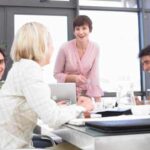
Course Manual 9: Quantum Leadership
The role of leader includes being the deliberate shaper of consciousness and culture through speech and action. QL’s use of 6 key practices has a proven track record of nurturing successful leaders, along with refining those practices to ‘least amount of effort and energy to produce the desired interaction or result’ they will gain an appreciation for the roadmap ahead.
Although many executives have assumed that the ‘soft’ side of management and leader is complex (human desires, interests, values, organizational activities) Quantum Leadership has a proven track record of refining it down to lightest, focused speech and action taken in it’s organizational Context (challenges, objectives, internal and external forces, etc.)
Before leaping into detailed leadership practices, it is valuable to understand that historical leadership models had narrow single topic focuses.
Read the attached QLP WDP1 1.9 The Evolution of Leadership Theories pdf and then create 5 teams for the following exercise.
*LINK to The Evolution of Leadership Theories PDF*
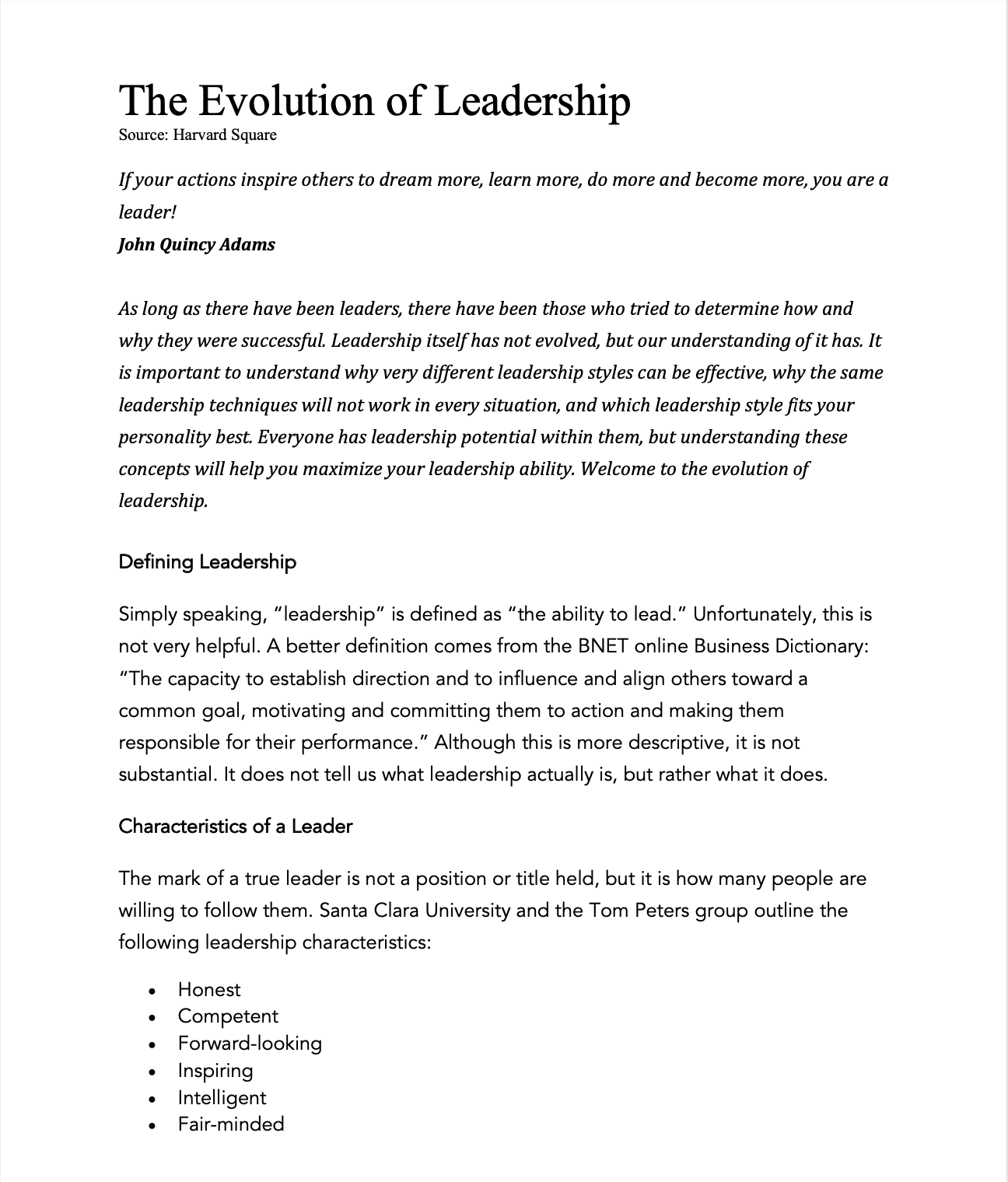

Exercise 1.9.1 – Leadership Theory Evolution
Team 2. DISCUSS what value the behavioral approach would have in organizations today and build an argument for it to share with the full group.
Team 3. DISCUSS what value the contingency approach would have in organizations today and build an argument for it to share with the full group.
Team 4. DISCUSS what value the cognitive approach would have in organizations today and build an argument for it to share with the full group.
Team 5. DISCUSS what value the situational approach would have in organizations today and build an argument for it to share with the full group.
At the beginning of our historical exploration of Leadership we stated that the definition of Leadership does not tell us what leadership actually is, but rather what it does. This includes how a leader thinks, plans, takes action, guides others in the organization.
QUANTUM LEADERSHIP’s Focus is on leaders setting the conditions for followers to excel at their work and creating high performance organizations…. As “Simply” as possible.
QL focuses on 6 Leadership Practices with the outcome of creating engagement, and attachment, and appreciation and retention, six practices used to influence the employee performance and stability of organizations.
• Inspiring a shared vision among the team
• Modeling what professionalism looks like in the organization
• Enabling team members to contribute their best work
• Creating a culture at ease with challenging the status quo
• Encouraging the hearts of team members
• Reinforcing the credibility of their leadership through their consistent use of those practices
Mastering Quantum leadership takes place in 3 Stages:
Stage 1: Assessment
In Module 2 QLP participants will take the Leadership Practices Inventory assessment of those six practices, explore the relationship of those practices to the CARE Profile you just took, and set the starting point for the new skills and practices that will be learned and mastered over the course of the program.
Stage 2: Learning Leadership
Over the following modules each practice will be explored and practiced in repeating cycles that build upon each other to develop mastery.
We can think of ‘learning leadership’ the way we think of learning any other skill.
For instance, if you decided to learn how to tap dance, you would sign up for dance lessons and join the rest of the students by standing in rows, being taught one gesture at a time, practicing it between classes and building over time, assembling a series of new skills, using props, adjusting for circumstances, until you reached your version of Mastery.
The end result, after hundreds and thousands of dedicated hours might look something like this:
That is mastery and simplicity indeed! Each item Fred dances with requires a form of connection and purpose underlying the gestures, the communication, selected and used.
What does it mean for learning and mastering Leadership and Quantum Leadership in particular?
Stage 3: Simplification
In an age of increasingly complex challenges faced by company leaders at all levels, the magic of QL is that it not only includes Action Learning techniques, but adds a refinement step in which the tools and practices are reduced to the simplest set of activities that produce the desired results.
Simplification is a new paradigm will be applied throughout the 24-month span of the QLP, applied in the Roadmap and 90-Day in the next manuals.
Today we’ll take the opportunity to experience what ‘simplification’ looks like as a warm up for the activity that will be used in every module of the program.
*LINK TO The Boids PDF*


Exercise 1.9.2 – Simplification – The Boids Part 1

Exercise 1.9.3 – Simplification – The Boids Part 2

Exercise 1.9.4 Apply the Boids to your daily activities
*LINK TO QLP Action Tracking and Dashboard Sheet PDF*
![]()
And
*LINK to QLP Notes & Worksheet1 PDF*

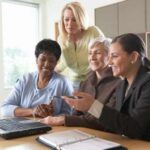
Course Manual 10: Assessments
The QLP uses a series of Frameworks and Assessments throughout the program. These tools become a key source of information and understanding of the organization, its circumstances, and of your experiences and skillfulness as a leader.
The first phase will be to conduct organizational assessments as a group, in conjunction with the HR Business Partner, and to begin the personal assessments.
This phase is composed of uncovering the Organizational and Personal Driving Forces
Part 1 – Personal Driving Forces Assessments are the companion work woven throughout the 24 months of the QLP. The journey begins with understanding oneself in a way that unlocks Transformational Learning, by uncovering one’s own blind spots and elements that may be hidden.
Part 2 – The Organizational Driving Forces Assessment forms the basis of the first 90-Day Module “Benchmarking & Setting KPIs.” The metrics discussed will be those influencing employee recruitment, engagement and retention. These will be developed fully through that module to form the ‘context’ in which your leadership activities will take shape.
Reminder of Assessment 1 – The Innovate with CARE Profile
While the Johari Window assessment was composed of both internal and external feedback, a survey, the CARE profile is a simple form of a personal forces assessment. You already experienced that quick assessment in the CARE Profile exercise in Manual 8, Exercise 1.8.2 in this workshop.
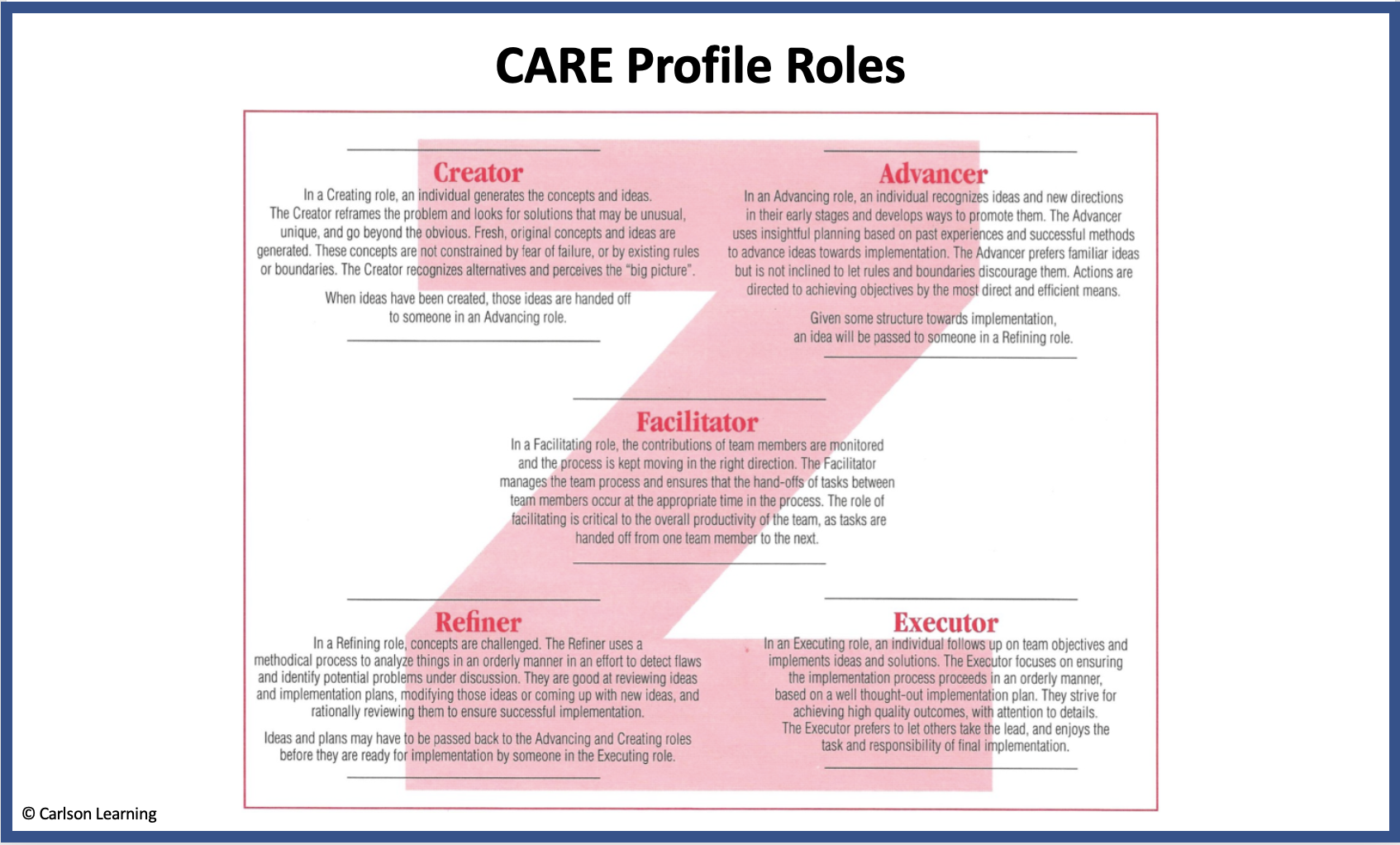
Each assessment is chosen specifically because it triggers new understanding and learning in a 5-step process that opens opportunities for growth and personal transformation.
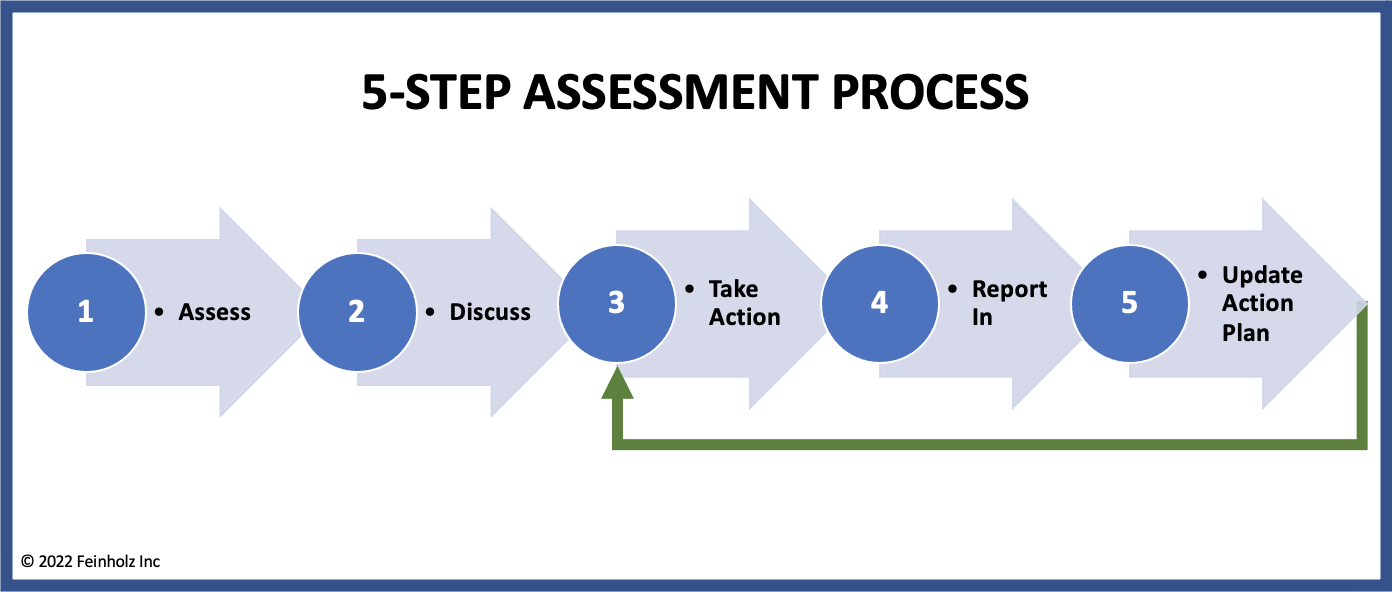
First, you will take an assessment in order to learn a new vocabulary to use in discussing the thinking and behaviors that contribute to leadership skillfulness.
Second, you will expand your perspective through the discussions you hold with your co-participants in the QLP.
Third, you will use that new level of awareness as you perform the project steps between the workshops.
Fourth, you will report to the results obtained in the project work, and how your assessment result illuminates a particular ‘blind spot’ and ‘hidden characteristics’ that you uncover during those activities.
Fifth, you will create fresh work plans that incorporate that new understanding into each next step of the QLP learning going forward.
You used these steps with the CARE Profile, and will repeat them with all the upcoming assessments. Here is the starting list of assessments you’ll become familiar with:
* Assessment 1 – CARE PROFILE – objective: Identify your natural thinking and action orientation [experienced in Manual 8 above]
* Assessment 2 – Johari Windows – objective: Identify how your self-perception matches or misses how others perceive you
* Assessment 3 – Leadership Styles – objective: provoke your thinking about how you currently prefer to lead
* Assessment 4 – Leadership Practices Inventory – objective [will be seen in the next Modules]
Additional Assessments will be provided as the program progresses. They will be assigned as project work between the workshops in preparation for discussion during the workshops.
A core value of the experience and personality assessments selected is that each one provides you with standardized, useful insights that result in progress markers over time. By using the assessment data to identify your starting points in leadership development, you can set your personal goals towards improving as an influencer of teams and the organization.
Furthermore, each assessment can be taken again at later dates when you have set a goal of increasing your skill sets and tool sets and creating continuous improvements as a leader and among those you lead.
Now let’s extend your personal assessment Warm-Ups by taking a light look at an assessment that requires only 90-seconds for the self-assessment portion – The Johari Windows.
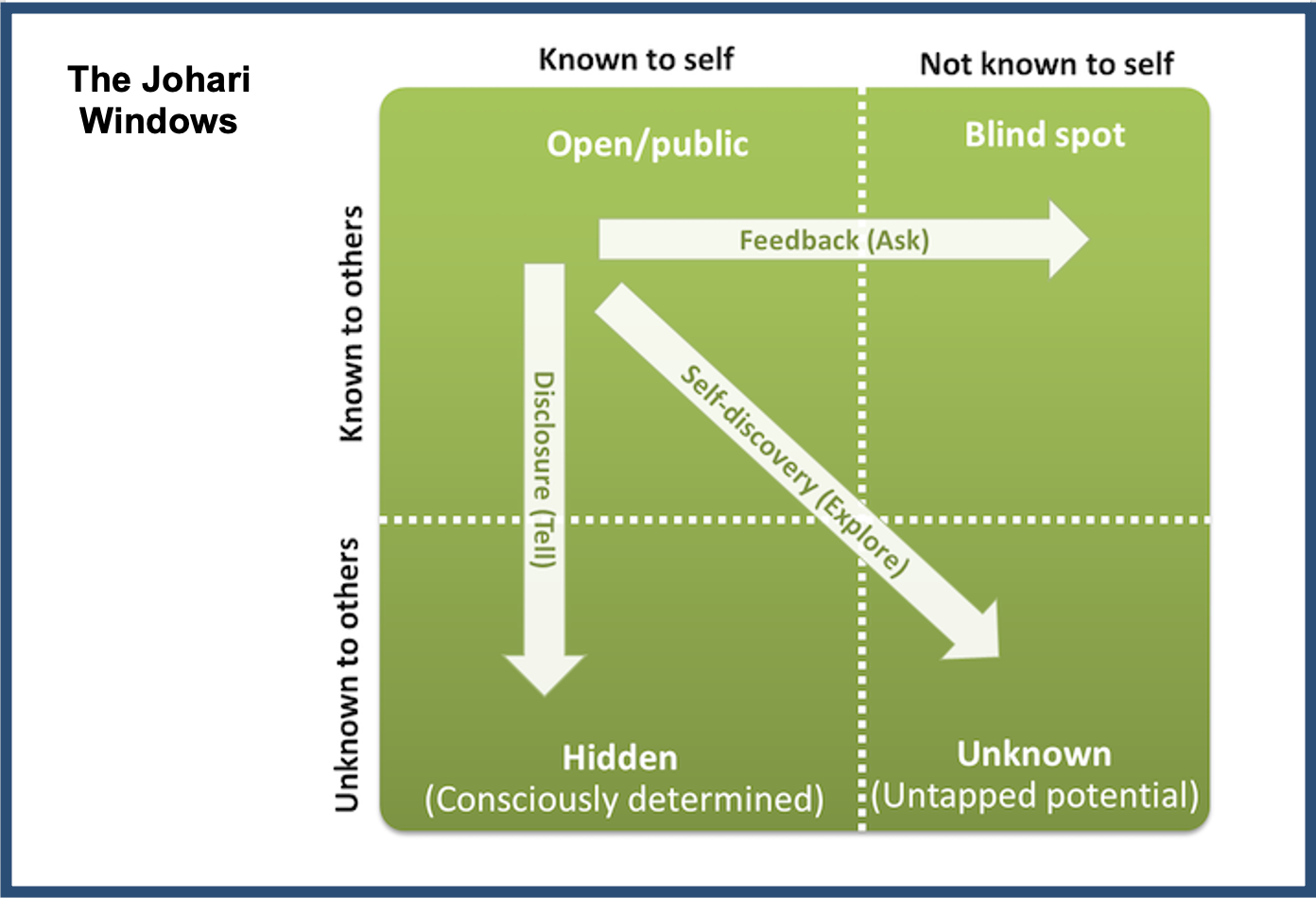
The Johari Windows is a beginner’s exercise in assessing one’s own degree of insight into our personal driving forces. It is composed of 4 Quadrants of Self-Awareness.
The Johari Windows is a quick-feedback 2-step technique designed to help people better understand their relationship with themselves and others. Psychologists Joseph Luft and Harrington Ingham created it in 1955. It continues to be used primarily in corporate settings as well as self-help groups as an approach to self-discovery that uses a practical, easy-to-use method. While it is not a complex or perfect model, it is nevertheless sufficient for reaching an immediate, short-term approximation that wakes up our perceptions.
• Upper Left Quadrant is Open – This quadrant is that part of ourselves that we are consciously aware of and that is observable and thus known to others. Typically, this includes our attitudes, behavior, motivation, values, and may be reflected in way of life. We are “open books” regarding these traits.
• Lower Left Quadrant is Hidden/Façade – This quadrant contains adjectives we selected but are not selected by any of our peers. These are aspects our peers are either unaware of, or that are true only by our own claim about them.
• Upper Right Quadrant is Blind – This quadrant contains adjectives not selected by ourselves but selected by our peers. These represent characteristics that others perceive about us but we do not.
• Bottom Right Quadrant is Unknown – This quadrant contains adjectives that neither we nor our peers selected. They represent potential behaviors or motives that are not perceived. They either do not apply or there is collective ignorance of these traits.
We just reviewed how complex the topic and theories of Leadership can be.
The Johari model illustrates just how complex our personalities are. Naturally, there are some “hidden” aspects to ourselves that should only be disclosed in certain contexts. The arrows on the model below reveal how we can expand the “open” part of ourselves if we choose to.
Think of this assessment as a warm-up exercise to learning to tap dance, learning to self-perceive, along the route to developing clearer and deeper perceptions of yourself and those you lead.

Exercise 1.10.1 Assessment 1 – The Johari Window
If you would like to know more, www.kevan.org/johari

Exercise 1.10.1b – Others Assessment

Exercise 1.10.2
1. “Where are you from?” How did you think and acted when you first saw yourself as a leader of change or a change agent?
2. “Where are you now (here)?” How do you think and act now?
3. What blind spots were uncovered along your journey?
4. What hidden skills or capabilities were uncovered along your journey?
5. “Where are you going (to there)?” What are the possibilities for your future as a Leader?
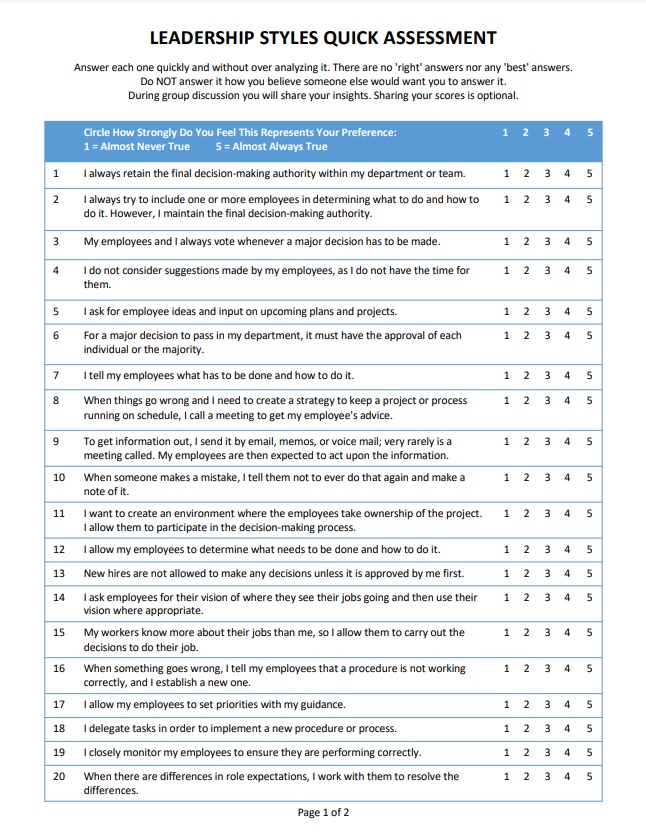


Exercise 1.10.3a Leadership Styles
Frequently True — 4
Occasionally True — 3
Seldom True — 2
Almost Never True — 1

Exercise 1.10.3b Leadership Styles Discussion

Exercise 1.20.3c Others Feedback

Exercise 1.10.4 Group Discussion
This workshop has been filled with new concepts, new ideas, new questions and new discussions. It is a warm-up for the upcoming assessments, discussions, and action plans in upcoming modules. In this manual we focused on the concept of Personal Driving Forces of leadership with the opportunity to uncover the default ways you currently operate, sometimes unconsciously and at other times consciously. We’re just setting out on the Learning Curve Journey of the QLP! Now we’ll turn our attention to the Organizational Driving Forces that you will be exploring. That exploration will be conducted as a team, between the workshops, in conjunction with your HR Business Partners. The core objective of the course manual is to enable the participants to implement a process in the program’s project assignments, as well as within their own department, that consists of specific steps with a view towards undertaking each QLP step, guided by the workshops. In other words, we need to ascertain the current state, how successful improvement attempts have been and how things could be improved going forward. This will directly affect the way in which Quantum Leadership is used and its results are interpreted. Each workshop will produce a Roadmap of the steps to be undertaken so that all the participants can contribute to the planning, execution, and evaluation of the program activities. QL is an approach that actively engages program stakeholders in the evaluation process. When employees collaborate with leaders, their own understanding increases. The utility of the evaluation is often enhanced. So as the roadmaps are developed, participants will need to select either a large project team that has recently been assembled within your department or a divisional group that have been identified as facing challenges within their business unit, identify who the program stakeholders would be in each case, and then consider how QL will be used. The elements to be improved are both the improvement of morale and retention and the increase in leadership skillfulness of the QLP participant. These steps create the setup to determine whether it was successful and how it could be improved. The power of creating a roadmap is the organization it brings to projects, from conception through execution. In particular, when you move beyond naming the steps of a roadmap to laying it out visually, it provides easy-to-digest overview of the effort’s objectives and plans—which would help you communicate your business idea to investors, partners, and employees more quickly and compellingly. Additionally, roadmaps are valuable guides that you can refer back to periodically during what can be chaotic early days of a project, to make sure that all the tasks you and your team are focusing on continue to support the initiative’s strategic plan. If you use the right tool to build the document—ideally a web-based business roadmap application—you will also have a roadmap that will be easy to share with the relevant teams, easy to update, and easy to present no matter where you are. You will find an online tool for creating a roadmap here: https://www.productplan.com/templates/ Here are some examples of the templates you can use and adapt to suit you needs. Here is a deeper discussion of highly popular roadmaps by Roadmunk, a provider of online templates. *LINK – QLP 9+ Business Roadmap Examples for Scaling An Organization PDF* The process for creating roadmaps is identical, whether applied to individual development efforts or organizational changes. Here are the six steps of the roadmap you’ll be building for the QLP. Each Roadmap will be established using these six steps: 1 – Assess the current state: Where does the organization stand today in terms of leadership activities, infrastructure, processes and services? Are existing leadership strategies impacting strategic goals? If not, they must be modified to serve their purpose and support the organization’s objectives being planned. 2 – Establish the target state: What so you want to achieve? How will outcomes from the transformation be measured? You don’t have to go into the details, but assign Objectives and key results (OKRs), Key Performance Indicators (KPIs) and business metrics accordingly. Next, decide how human and financial resources will be prioritized. Finally, reach a consensus on how progress will be tracked as the transformation takes shape. 3 – Identify issues along four tracks: people, process, organization structures and technology. The people track is about ensuring you have the right people in the right seats with the right skills both during the transformation efforts, as well as post-transformation. Ensuring you have the right people leading and supporting the teams, as well as the right team members executing on transformation initiatives are critical to the successful delivery of the vision. A roadmap item may include designing a new organizational structure and roles needed in post-transformation 4 – Agree upon which elements the leader participants can influence, in what span of time. 5 – Conduct Forced Ranking to Prioritize Efforts along agreed upon scales. The items and their scales will be determined by the participants unless an existing forced ranking system already is in use and is applicable to the exercise. Forced Ranking will be discussed in detail in Module 1 – Benchmarking & Setting KPIs. 6 – Determine the steps or initiatives of each team: Any transformation affects everyone in the organization. It requires inputs and feedback from decision-makers at various levels of the organization and at the department levels. The participation and expectation from stakeholders should be clear from the beginning. The first application of creating a Roadmap will be planning out the project of assessing your organization and its challenges in recruiting, engaging, and retaining employees. Having plans leads to being more agile, moving faster without compromising strategy. Pausing before taking action to set a plan helps each of us create a roadmap and stay on it. It gives us a reference point to prevent taking distraction detours. Whether planning a day, a week a month, or looking ninety days out, you have a good idea of what you can actually get done in that time frame, and the resources you’ll need to accomplish it before stepping onto the path of action. In a sense, your capacity estimates are about right, and you can make some very substantial progress towards a big goal, and use the experience to hone your estimates for the next plans you make. Similar to SMART goals (specific, measurable, achievable, realistic, timed), a 90-day plan should define the specific details that will allow you to achieve success. A well-written plan should spell out how you will define priorities and check points for follow-ups on your progress. 90-Day plans require 5 elements: Your Assignment for the rest of this workshop is to create that plan so that you can initiate action on it within 3 business days following this workshop. Some elements of your plan will be Personal and Individual items. Others may be individual and identical across participants if you are in diverse and unrelated business units. For those of you who work in the same business unit and have the same HRBP, some items will be group activities. Using a 90-day plan serves beyond orienting someone to personal goals. It isn’t just a task list, it’s the foundation for entire groups working together, learning together, and understanding the results being evaluated. This final manual covers how to create plans implemented in 90-day cycles. Each 90-day plan will include assessments by the QLP participants of the current state of particular skills, practices or processes, followed by describing a desired future state, laying out a roadmap for putting the new processes into practice, and listing actionable steps to be undertaken between the workshops. Accountability partners will be assigned spanning the month between workshops. Check-ins with each other will take place during that month. During the workshops, adjustments to the practices and processes will be designed and implemented throughout the 90-days of each topic module. Just as with any new learning, confusion may occur, and need structures and support to move through it, up the Learning Curve. So we have built in regular check-ins, honest feedback (about systems, company habits, points of uncertainty), and the support of learning (and failing, and adapting, and trying again). The QLP program structures each topic area in 90-day spans in order to provide time to encounter unfamiliar ideas and action items, break them up into manageable elements that can reasonably be fit in with the rest of participants’ daily work, plan the actions that will be taken, take action, reflect on the experience and results of that project work between the workshops, and come together to discuss and evaluate what has been learned and how to adapt and improve the processes being used. The QLP assumes that as experienced professionals you know how to organize yourselves and take action. The purpose of this final element of this workshop is to self-organize as a team and assemble your first 90-Day Plan. Your workshop facilitator is available to assist in steering the conversation during the workshop, and answer questions that come up between the workshops. The 1st 90-Day plan will have 2 components – Personal Driving Forces Assessments, detailed in the next manual, and Organizational Situation Analyses. These components will set the agenda for participants’ project assignment during that time. For the follow-up action items of Personal Driving Forces you will have follow-up steps with the CARE Profile, and the Johari Window during the next 30-days, as were described in the earlier exercises. You’ll come to understand the Organizational Objectives the have already been set, and how your leadership activities can assist in achieving them. Just because senior management has set an organizational objective, that item may or may not fall in your sphere of influence as a leader. This is the arena of collaborative evaluation between you as a QLP participant team and your HRBP. The foundation for these discussions is from the material you have discussed during this workshop. As discussed in Manual 3, one of the challenges of Action Learning is the beginning of the process: defining a problem that is the anchor for all the learning activity. Selecting a problem statement is one of the most important aspects in action learning and it needs to be done very carefully. The problem which the QLP address is “How can leadership create organizational stability in an era of external demographic and socio-economic forces creating a tug-of-war on employee recruitment, engagement and retention?” That problem statement is the foundation for the Project Assignments, beginning with collaborating with you HR Business Partner (HRBP). Depending on the composition of the QLP participants, you may have a single HRBP, or several. You’ll discuss whether it makes sense to pull working sessions together that involve multiple HRBPs at the same time, or to be working with them separately. Manual 4 discussed the Compelling Conditions and External and Internal Forces that organizations in general are facing in the 2020s and beyond. Together with your HRBP you’ll review the findings from research and examine the information specific to your organization to identify the “Known” and “Unknown/Not Yet Known” Compelling Conditions on your organization. As you work together to refine your understanding, you’ll begin to develop the foundation for the next 3 workshops: “Benchmarking and Setting KPIs – Situational Analysis, Internal Analysis, Meaningful Metrics. Manual 5 addressed the need for QLP participants to collaborate with their HR Business Partners in setting realistic expectations for the outcomes of the QLP program. Developing Metrics as a participant in the QLP has several learning components. You may have little to no familiarity with the organization’s discussions, considerations and objectives including those specific to Leadership and Leadership Development. You may recall you divided the room into 3 working teams. As a group, you listed a set of 3-5 metrics you imagine would address the project concerns of recruitment, engagement, morale and retention. Finally you compared lists with each other. In participating with your HRBP you will learn which Issues and Terms and Metrics including, KPIs, KPAs, Leading and Lagging Indicators are currently in use or in development. Throughout your time in the QLP you and/or your HRBP may recognize gaps in the metrics, and will be uncovering other metrics which may edit, refine, adapt, replace, introduce metrics that serve you in tracking your development as a leader, and separately metrics that you and your HRBP are jointing tracking over time. Manual 7 discussed Collaborative Evaluation. This first 90-Day plan is the beginning of your collaboration with your HRBP, as well as your fellow QLP participants. As you can see, the project work for Organizational Situation Analyses during the next 30 days will be constructing and conducting an Organizational Assessment, gathering data and information and early thinking that you’ll bring back to the next workshop for discussion about your discoveries as well as your early understanding and ideas about the situation being faced by your organization. As a preliminary step for the next 90-Day module, select and use the Roadmap Steps to gather your observations and ideas and overall workflow. A 90-Day Planning Sheet is provided for outlining your plan as reference for the next 30-Days: Use it to Identify, the Actions, Obstacles, Solutions and Accountability you are organizing and committing to work through during the next 90-Days An Action Tracking and Dashboard Sheet is provided for outlining your plan as reference for the next 30-Days. USE 2 SEPARATE SHEETS – Take the information you’ve laid out in your 90-Day Plan and identify the Actions, Assigned individuals, Milestone deadlines, and Status of those actions. Each of these sheets is a living document. You will edit and refine them as you work with them. Use it to summarize your roadmap and plans as a quick reference for what is to be done, by whom, by when, and any additional comments regarding the status of each item in the first section. You will find the second section to fill in the Metrics that you will use during the QLP program. These can be agreed upon through your conversations with your HR Business Partner, and during the workshops with your QLP team, and for yourself. This is where you’ll track progress on those measurable results throughout the QLP. The final section of this sheet is the Parking Lot. Use this space to make a note of topics or ideas that you want to pursue, beyond the project assignment activities. Be sure to note down the other stakeholders you want to discuss it with. You can use this section of the sheet to record topics you want to bring to the next workshop as well. PROJECT STUDY 1 – Create Your First 30-Day Plan for The Organizational Situation Analyses Considerations for Discussion with the HR Business Partners Throughout this workshop you have performed several personal assessments. Each of them listed a follow-up step to be taken with the material and insights. The next 30 to 90 days project work between the workshops will include those activities in order to deepen your familiarity with and consolidation of the concepts and take them as tools into use in your teams where appropriate. For simplicity, the materials used in these steps are provided at the bottom of the manual.
2 – A new supervisor has just been put in charge of the production line. He immediately starts by telling the crew what changes need to be made. When some suggestions are made, he tells them he does not have time to consider them.
3 – A construction crew has worked together for the last four years with very little change-over in personnel. They always vote whenever a decision must be made on how to proceed with the project.
4 – The owner of a small electronic store starts every day by telling the three employees what has to be done and how to do it.
5 – An inspection line has no supervisor. They are expected to have the correct staffing, procedures, and expertise on each shift to ensure no defective parts gets past them.
6 – A new squad leader is just assigned overseas. She immediately calls her squad together for a meeting and asks for their ideas and input on an upcoming field training exercise.
7 – There are seven people on a special project team and everyone is from a different department. Although a leader was elected, for a decision to pass it must have the approval of each individual.
8 – A small department performs the same functions every day. To get information out, the supervisor sends it by email or voice mail, very rarely is a meeting called.
9 – A forklift has its forks raised in the air to put some material in the racks. An employee darts under the forks (safety violation) so he can get back to his workstation in time. The supervisor tells him very sternly not to ever do that again and notes it in his log.
10 – A project is running late. The manager puts out a course of action to take to try to put it back on track. Later that week she calls a meeting of all supervisors and key players to create a strategy to keep the project running on schedule.
11 – A manager is working on the budget. He is told to get a hot project running immediately. He calls his staff together and explains the project. He then tells them to get it up and going while he completes the budget.
12 – A newly hired supervisor is not allowed to make any decisions unless it is approved by the manager first.

Exercise 1.10.5 Group Discussion
Wrapping Up The Warm-Ups
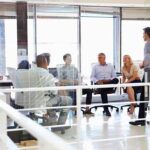
Course Manual 11: Creating Roadmaps
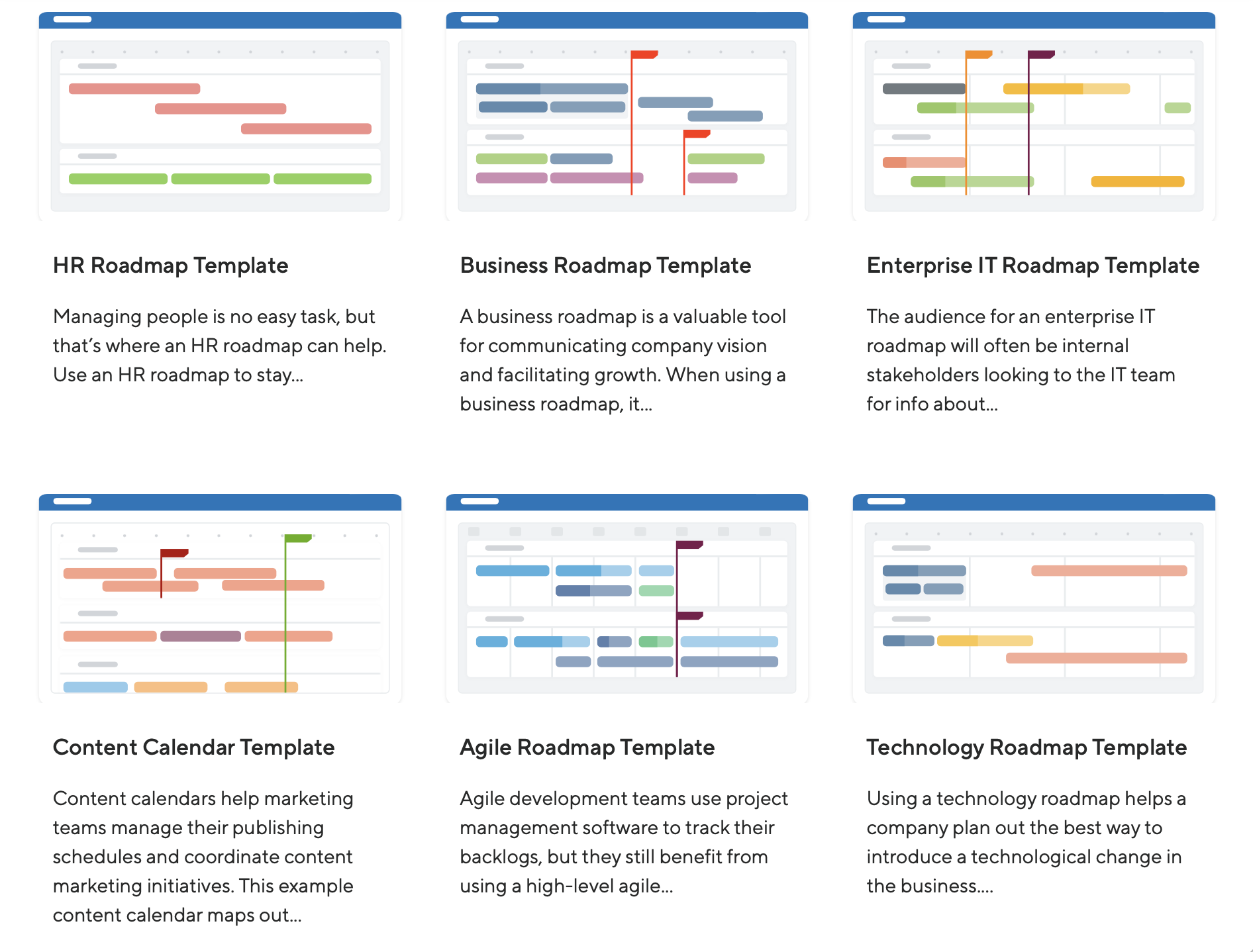



Exercise 1.11._ Organizational Driving Forces Assessment Roadmap
– HOW will you execute each of these 5 steps to work with an HR Partner to uncover what already is known to the organization’s senior management?
– WHAT needs to be uncovered to fulfill the assessment?
– HOW would you approach each step?
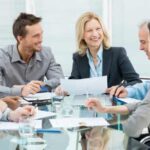
Course Manual 12: Action Planning
– A list of what is to be accomplished
– A preliminary action plan sequencing that list
– Assignment (individually or as a group) to the items on the list
– Calendaring the items on the list
– Milestone dates and Deadlines for the activities on the list
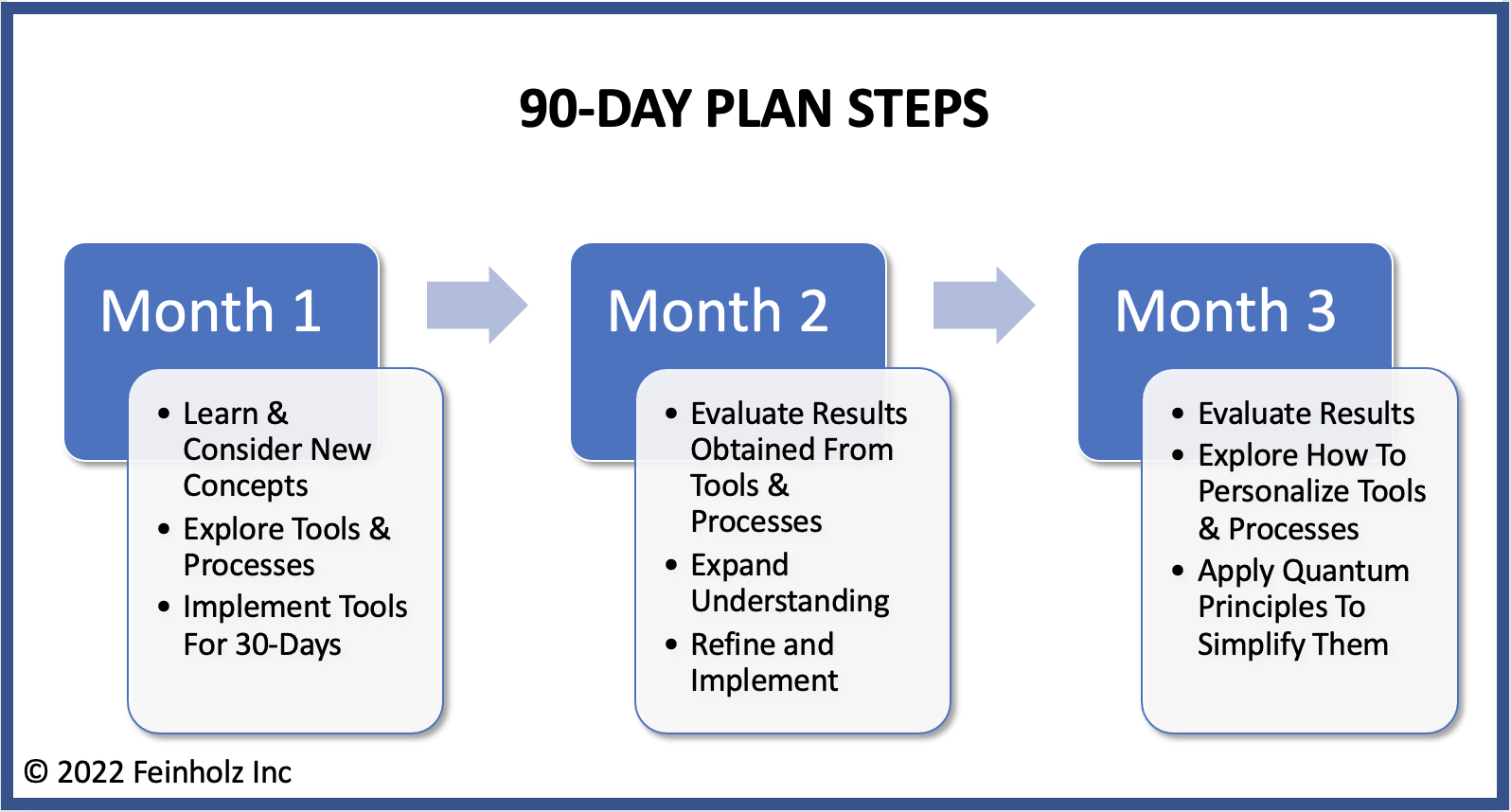
Organizational Situation Analyses:

1) One sheet to track the actions you take regarding Organizational Driving Forces
2) A separate sheet to track the actions you take regarding Personal Driving Forces
![]()

Exercise
– A list of what is to be accomplished
– A preliminary action plan sequencing that list
– Assignment (individually or as a group) to the items on the list
– Calendaring the items on the list
– Milestone dates and Deadlines for the activities on the list

Exercise

Exercise

Exercise

Exercise

Exercise

Exercise
2) A 30-Day Personal Driving Forces plan
3) A 90-Day Plan that will be refined as you progress through the next workshop

Exercise 12-1 Accountability Partners Assigned
Final instructions
Participants will each fill out the complete a Summary of how that has been implemented, and your learnings, including what worked well and what could be improved upon, signed, and dated. Submit both the Summary, along with your tracking sheets (to the Consultant or Learning Provider) via the client Support Portal, no later than 48 hours before the next workshop.
Project Studies
Project Study (Part 1) – Customer Service
The Head of this Department is to provide a detailed report relating to the Planning Process process that has been implemented within their department, together with all key stakeholders, as a result of conducting this workshop, incorporating process: planning; development; implementation; management; and review. Your process should feature the following 12 parts:
01. Leadership Transformation
02. Learning Curve Master
03. Action-Learning Methodology
04. Compelling Conditions
05. Organizational Objectives
06. Setting Conditions
07. Collaborative Evaluation
08. Gap Analysis
09. Quantum Leadership
10. Assessments
11. Creating Roadmaps
12. Action Planning
Please include the results of the initial evaluation and assessment.
Project Study (Part 2) – E-Business
The Head of this Department is to provide a detailed report relating to the Planning Process process that has been implemented within their department, together with all key stakeholders, as a result of conducting this workshop, incorporating process: planning; development; implementation; management; and review. Your process should feature the following 12 parts:
01. Leadership Transformation
02. Learning Curve Master
03. Action-Learning Methodology
04. Compelling Conditions
05. Organizational Objectives
06. Setting Conditions
07. Collaborative Evaluation
08. Gap Analysis
09. Quantum Leadership
10. Assessments
11. Creating Roadmaps
12. Action Planning
Please include the results of the initial evaluation and assessment.
Project Study (Part 3) – Finance
The Head of this Department is to provide a detailed report relating to the Planning Process process that has been implemented within their department, together with all key stakeholders, as a result of conducting this workshop, incorporating process: planning; development; implementation; management; and review. Your process should feature the following 12 parts:
01. Leadership Transformation
02. Learning Curve Master
03. Action-Learning Methodology
04. Compelling Conditions
05. Organizational Objectives
06. Setting Conditions
07. Collaborative Evaluation
08. Gap Analysis
09. Quantum Leadership
10. Assessments
11. Creating Roadmaps
12. Action Planning
Please include the results of the initial evaluation and assessment.
Project Study (Part 4) – Globalization
The Head of this Department is to provide a detailed report relating to the Planning Process process that has been implemented within their department, together with all key stakeholders, as a result of conducting this workshop, incorporating process: planning; development; implementation; management; and review. Your process should feature the following 12 parts:
01. Leadership Transformation
02. Learning Curve Master
03. Action-Learning Methodology
04. Compelling Conditions
05. Organizational Objectives
06. Setting Conditions
07. Collaborative Evaluation
08. Gap Analysis
09. Quantum Leadership
10. Assessments
11. Creating Roadmaps
12. Action Planning
Please include the results of the initial evaluation and assessment.
Project Study (Part 5) – Human Resources
The Head of this Department is to provide a detailed report relating to the Planning Process process that has been implemented within their department, together with all key stakeholders, as a result of conducting this workshop, incorporating process: planning; development; implementation; management; and review. Your process should feature the following 12 parts:
01. Leadership Transformation
02. Learning Curve Master
03. Action-Learning Methodology
04. Compelling Conditions
05. Organizational Objectives
06. Setting Conditions
07. Collaborative Evaluation
08. Gap Analysis
09. Quantum Leadership
10. Assessments
11. Creating Roadmaps
12. Action Planning
Please include the results of the initial evaluation and assessment.
Project Study (Part 6) – Information Technology
The Head of this Department is to provide a detailed report relating to the Planning Process process that has been implemented within their department, together with all key stakeholders, as a result of conducting this workshop, incorporating process: planning; development; implementation; management; and review. Your process should feature the following 12 parts:
01. Leadership Transformation
02. Learning Curve Master
03. Action-Learning Methodology
04. Compelling Conditions
05. Organizational Objectives
06. Setting Conditions
07. Collaborative Evaluation
08. Gap Analysis
09. Quantum Leadership
10. Assessments
11. Creating Roadmaps
12. Action Planning
Please include the results of the initial evaluation and assessment.
Project Study (Part 7) – Legal
The Head of this Department is to provide a detailed report relating to the Planning Process process that has been implemented within their department, together with all key stakeholders, as a result of conducting this workshop, incorporating process: planning; development; implementation; management; and review. Your process should feature the following 12 parts:
01. Leadership Transformation
02. Learning Curve Master
03. Action-Learning Methodology
04. Compelling Conditions
05. Organizational Objectives
06. Setting Conditions
07. Collaborative Evaluation
08. Gap Analysis
09. Quantum Leadership
10. Assessments
11. Creating Roadmaps
12. Action Planning
Please include the results of the initial evaluation and assessment.
Project Study (Part 8) – Management
The Head of this Department is to provide a detailed report relating to the Planning Process process that has been implemented within their department, together with all key stakeholders, as a result of conducting this workshop, incorporating process: planning; development; implementation; management; and review. Your process should feature the following 12 parts:
01. Leadership Transformation
02. Learning Curve Master
03. Action-Learning Methodology
04. Compelling Conditions
05. Organizational Objectives
06. Setting Conditions
07. Collaborative Evaluation
08. Gap Analysis
09. Quantum Leadership
10. Assessments
11. Creating Roadmaps
12. Action Planning
Please include the results of the initial evaluation and assessment.

Project Study (Part 9) – Marketing
The Head of this Department is to provide a detailed report relating to the Planning Process process that has been implemented within their department, together with all key stakeholders, as a result of conducting this workshop, incorporating process: planning; development; implementation; management; and review. Your process should feature the following 12 parts:
01. Leadership Transformation
02. Learning Curve Master
03. Action-Learning Methodology
04. Compelling Conditions
05. Organizational Objectives
06. Setting Conditions
07. Collaborative Evaluation
08. Gap Analysis
09. Quantum Leadership
10. Assessments
11. Creating Roadmaps
12. Action Planning
Please include the results of the initial evaluation and assessment.

Project Study (Part 10) – Production
The Head of this Department is to provide a detailed report relating to the Planning Process process that has been implemented within their department, together with all key stakeholders, as a result of conducting this workshop, incorporating process: planning; development; implementation; management; and review. Your process should feature the following 12 parts:
01. Leadership Transformation
02. Learning Curve Master
03. Action-Learning Methodology
04. Compelling Conditions
05. Organizational Objectives
06. Setting Conditions
07. Collaborative Evaluation
08. Gap Analysis
09. Quantum Leadership
10. Assessments
11. Creating Roadmaps
12. Action Planning
Please include the results of the initial evaluation and assessment.

Project Study (Part 11) – Logistics
The Head of this Department is to provide a detailed report relating to the Planning Process process that has been implemented within their department, together with all key stakeholders, as a result of conducting this workshop, incorporating process: planning; development; implementation; management; and review. Your process should feature the following 12 parts:
01. Leadership Transformation
02. Learning Curve Master
03. Action-Learning Methodology
04. Compelling Conditions
05. Organizational Objectives
06. Setting Conditions
07. Collaborative Evaluation
08. Gap Analysis
09. Quantum Leadership
10. Assessments
11. Creating Roadmaps
12. Action Planning
Please include the results of the initial evaluation and assessment.

Project Study (Part 12) – Education
The Head of this Department is to provide a detailed report relating to the Planning Process process that has been implemented within their department, together with all key stakeholders, as a result of conducting this workshop, incorporating process: planning; development; implementation; management; and review. Your process should feature the following 12 parts:
01. Leadership Transformation
02. Learning Curve Master
03. Action-Learning Methodology
04. Compelling Conditions
05. Organizational Objectives
06. Setting Conditions
07. Collaborative Evaluation
08. Gap Analysis
09. Quantum Leadership
10. Assessments
11. Creating Roadmaps
12. Action Planning
Please include the results of the initial evaluation and assessment.
Program Benefits
Human Resources
- Talent attraction
- Talent retention
- Employee engagement
- Morale improvement
- Employee development
- Learning acceleration
- Leadership excellence
- Workforce cohesion
- Stress reduction
- Career pathing
Management
- Stronger leadership
- Consistent leadership
- Shared vision
- Improved communication
- Empowered employees
- Increased collaboration
- Motivated staff
- Improved performance
- Reduced uncertainty
- Competitive advantage
Operations
- Expanded leadership
- Improved relationships
- Process improvements
- Deeper bench
- Team effectiveness
- Executional excellence
- Future readiness
- Happier people
- Talent advantage
- Reduced risk
Client Telephone Conference (CTC)
If you have any questions or if you would like to arrange a Client Telephone Conference (CTC) to discuss this particular Unique Consulting Service Proposition (UCSP) in more detail, please CLICK HERE.

























